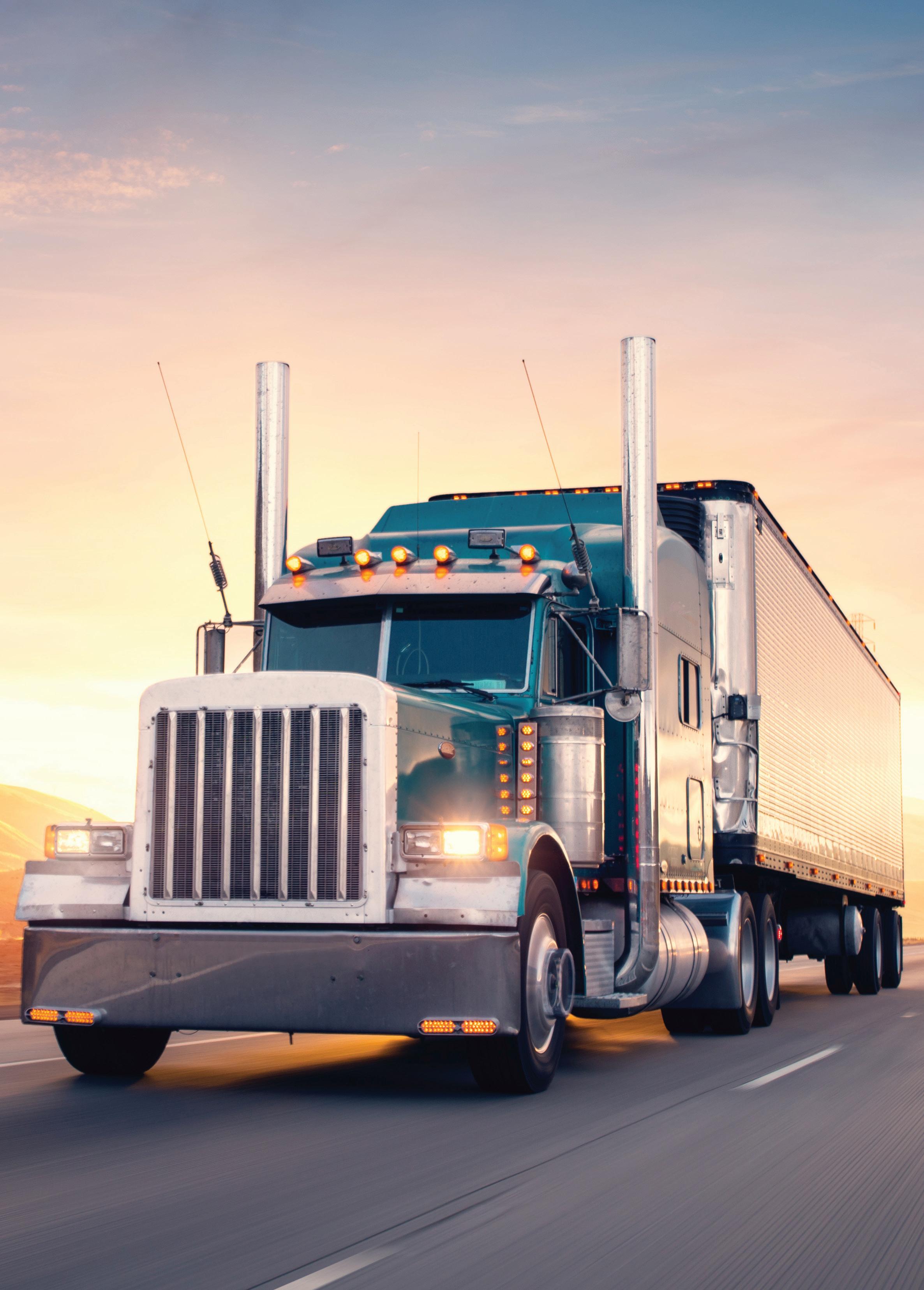

DYNO-MITE
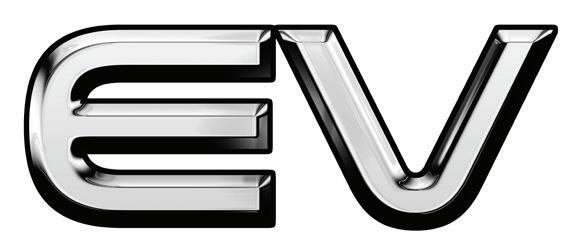

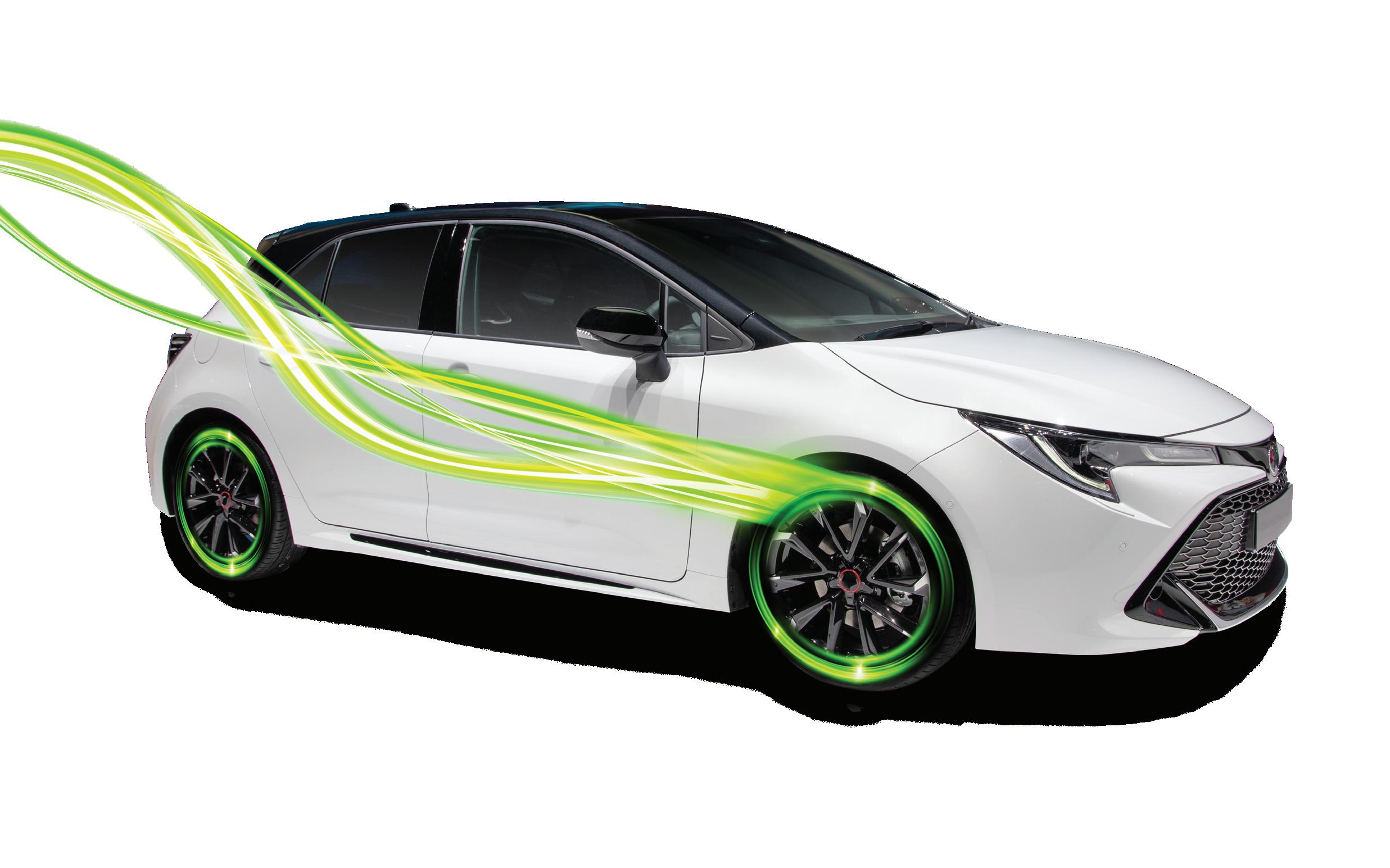
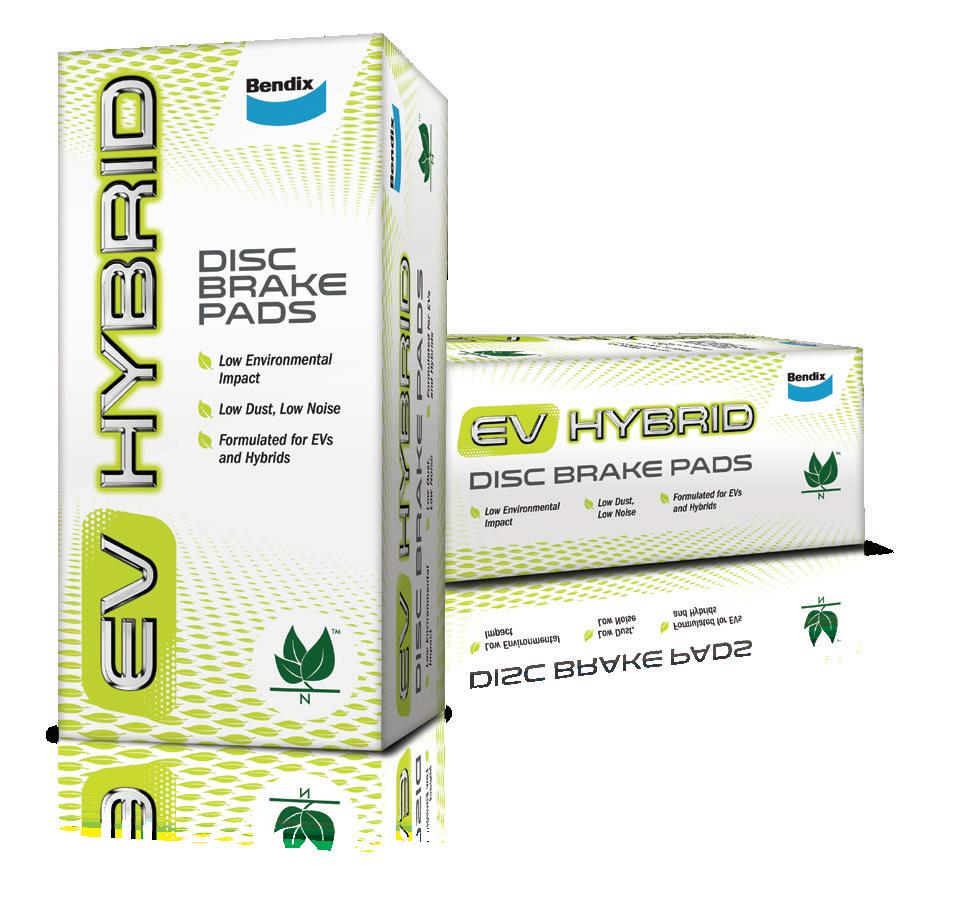
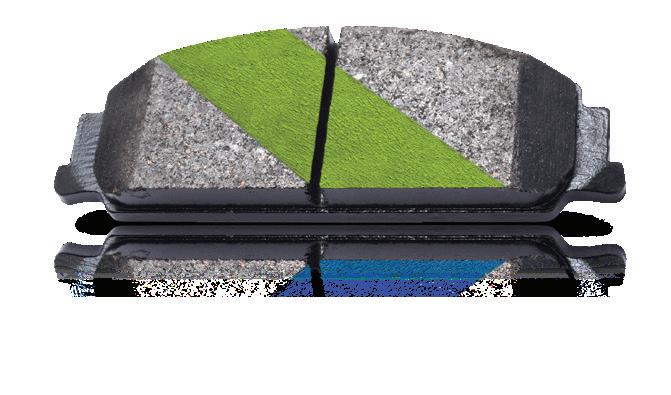
EV-Hybrid Disc Brake Pads are AASA Leafmark™ Certified which means they use organic brake friction materials for minimal environmental impact. In addition, low particle emissions deliver cleaner wheels and long disc life. Featuring Bendix’s exclusive Green Titanium Stripe, EV-Hybrid pads provide instant friction (no bedding-in required). Designed for quiet operation and low noise, EV-Hybrid pads are specifically engineered for EV and Hybrid Vehicles.
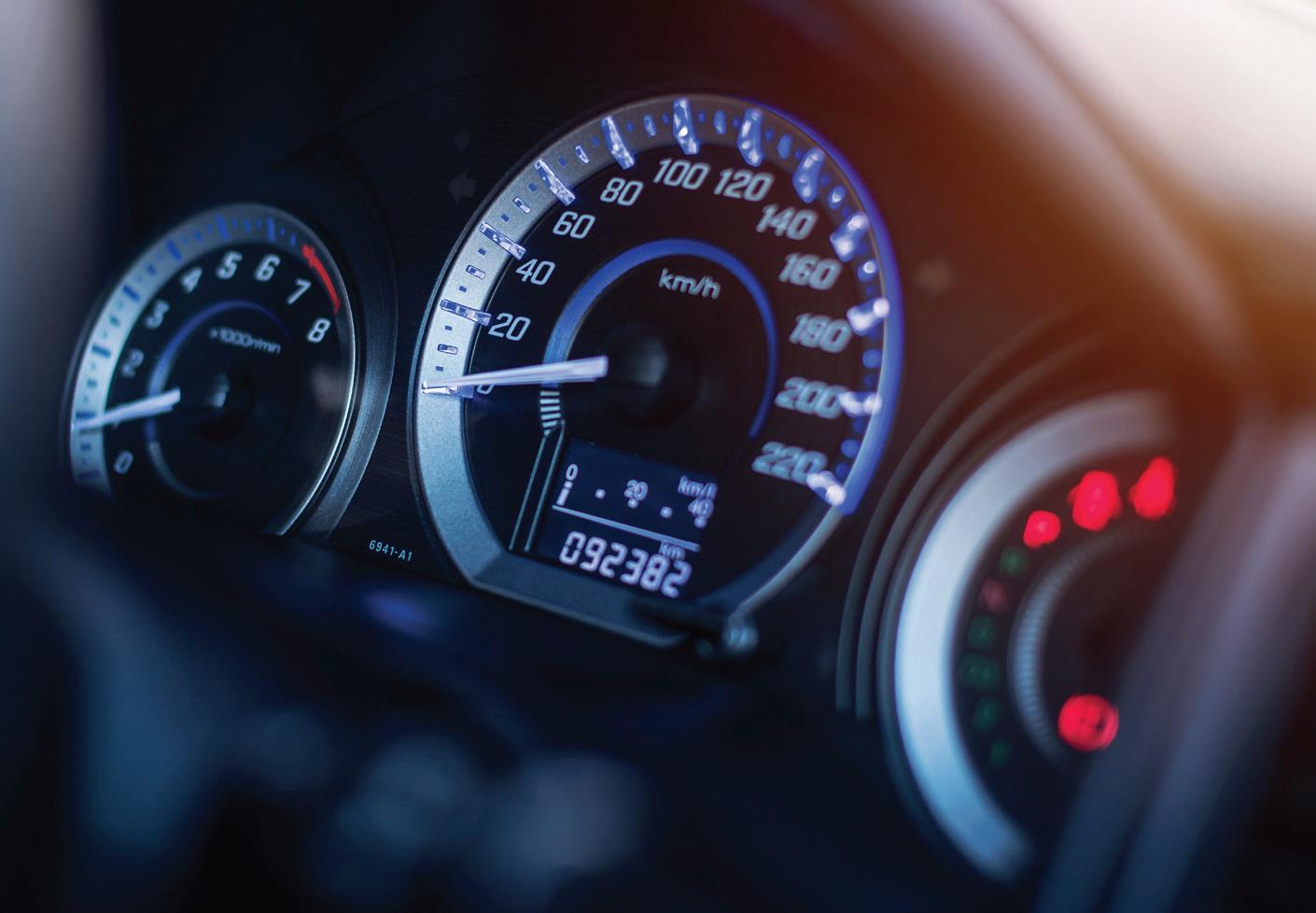
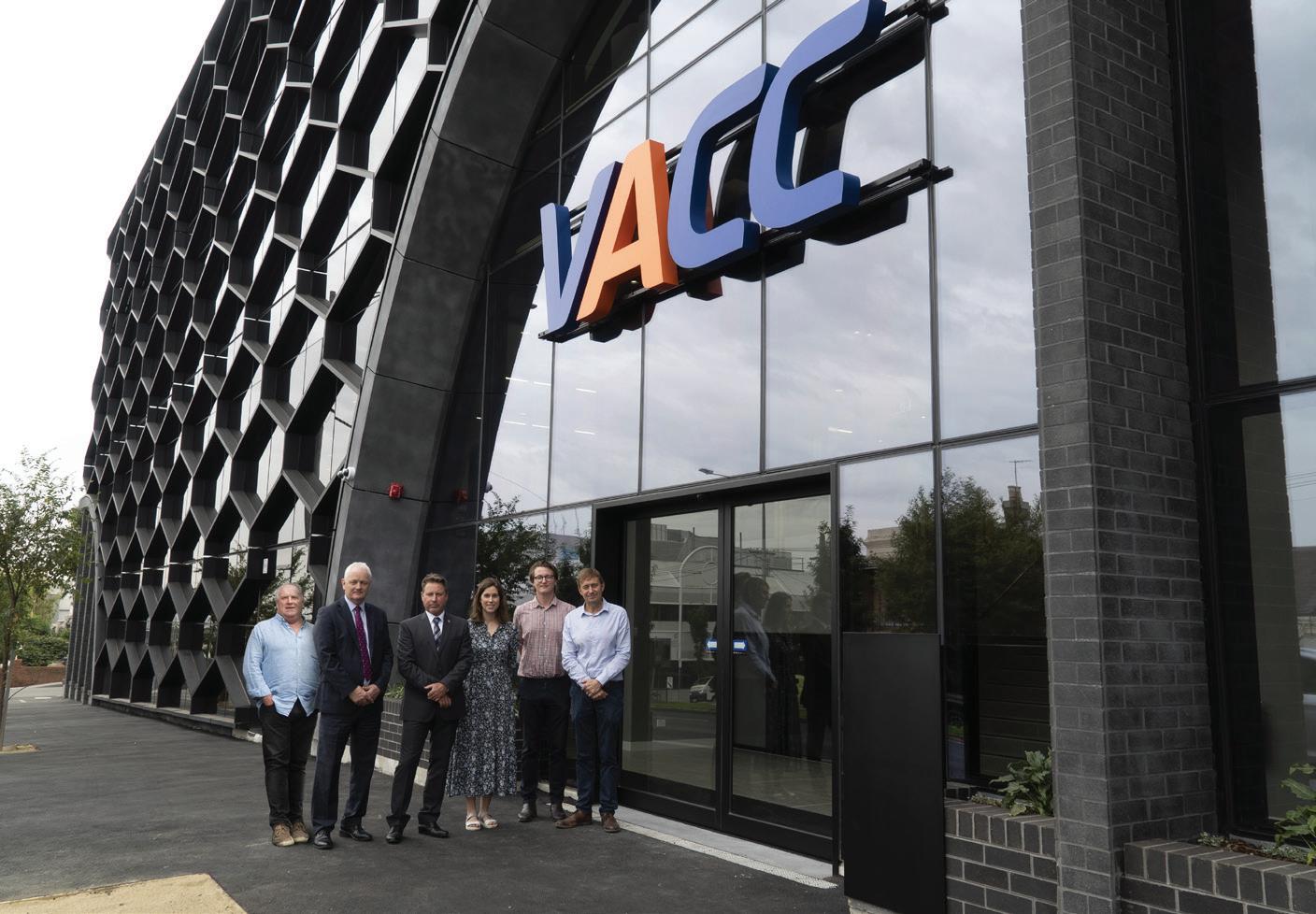
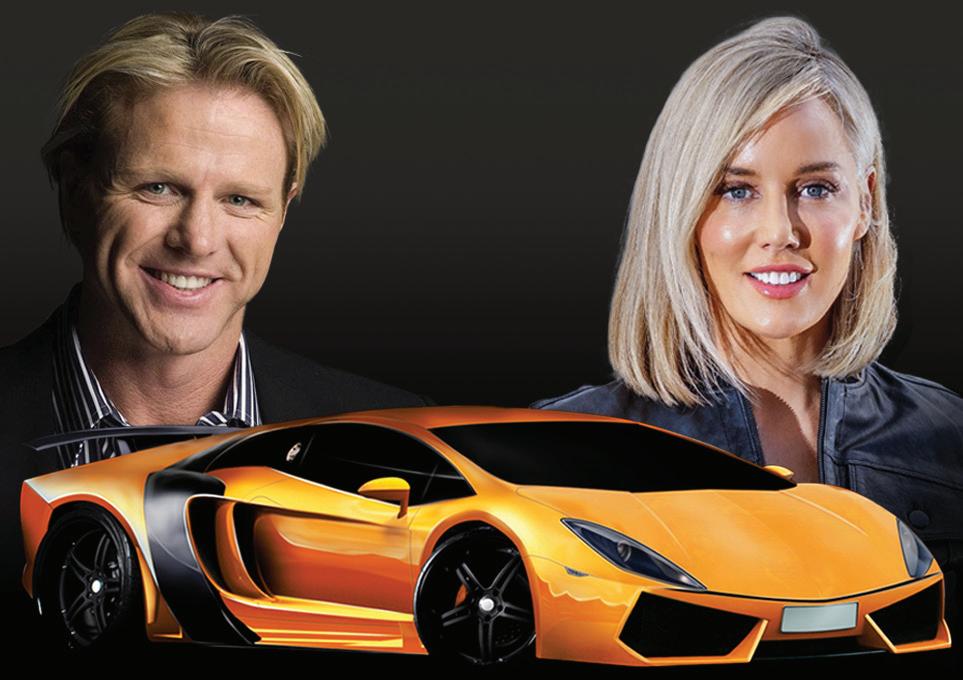
06 DRIVING CHANGE
A federal election in Australia is looming and VACC has released the automotive industry’s policy priorities
08 YOU BEAUTE
The ute has always been an iconic part of the motoring landscape, now it’s moved far beyond the farm and ‘tradey’ domain
10 APPRENTICE RISE
The latest skills data reveals a 44 per cent increase in apprentice and trainee commencements
12 MILEAGE WOES
Odometer tampering is a tricky business, but should a trader or motorist fall victim there is help out there
14 POLICY MATTERS
VACC’s Industry Policy team is hard at work bringing about meaningful change –read the latest updates
16 LET’S CONNECT
The Tasmanian Automotive Chamber of Commerce briefings were nights of open discussion, industry updates and prizes
18 GOING GREEN
Shane Jacobson looks into the role the automotive industry is taking in environmental and sustainability efforts
20 NEW HOME
VACC’s office relocation signals a move in the right direction for not only the body and its members – but for industry

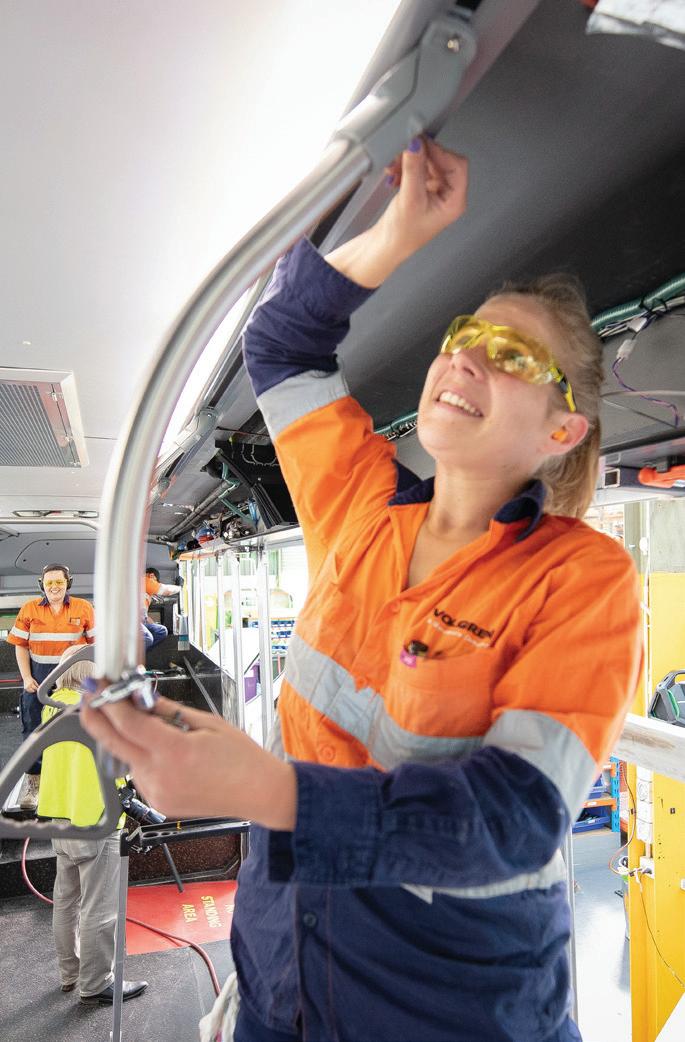
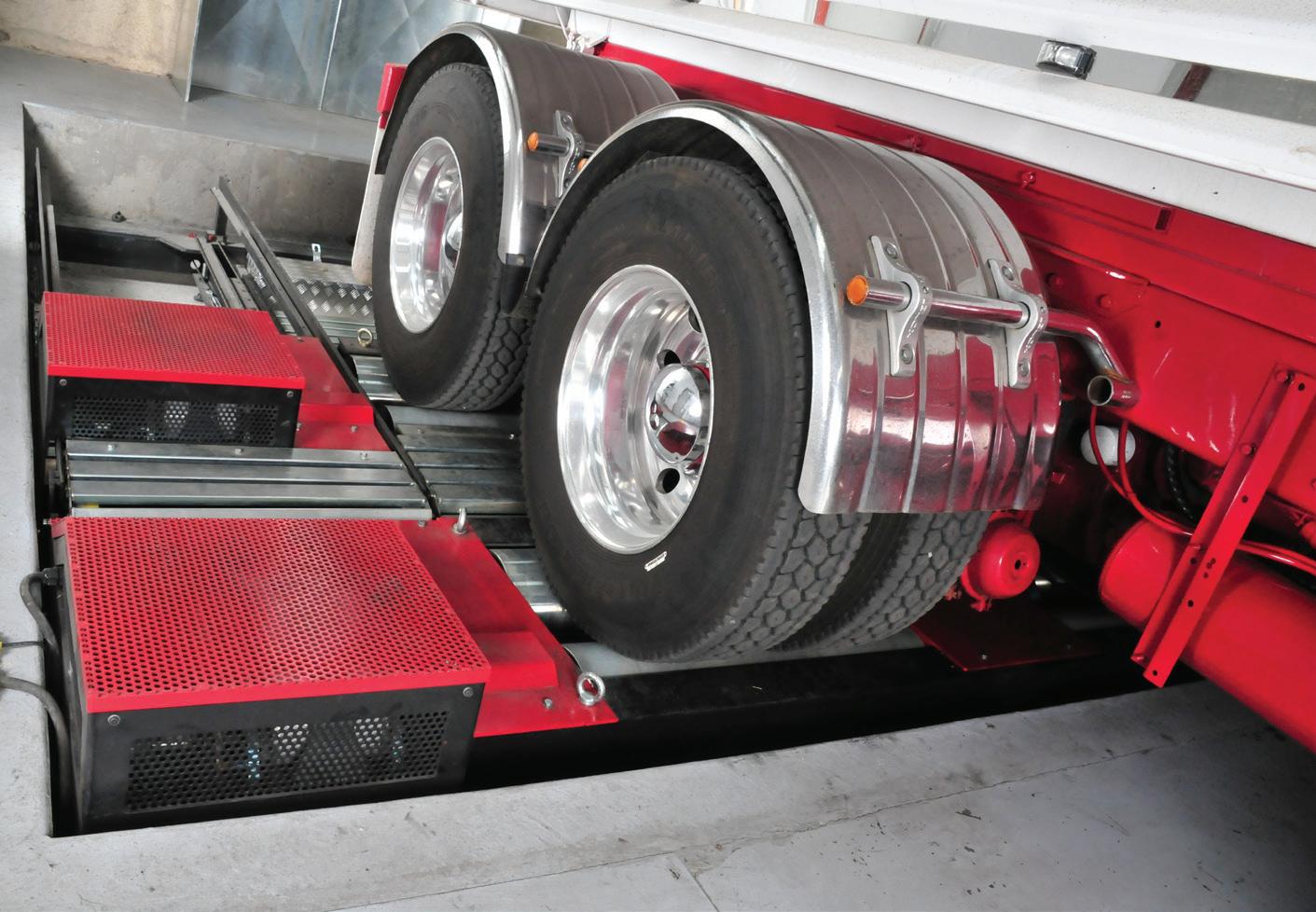
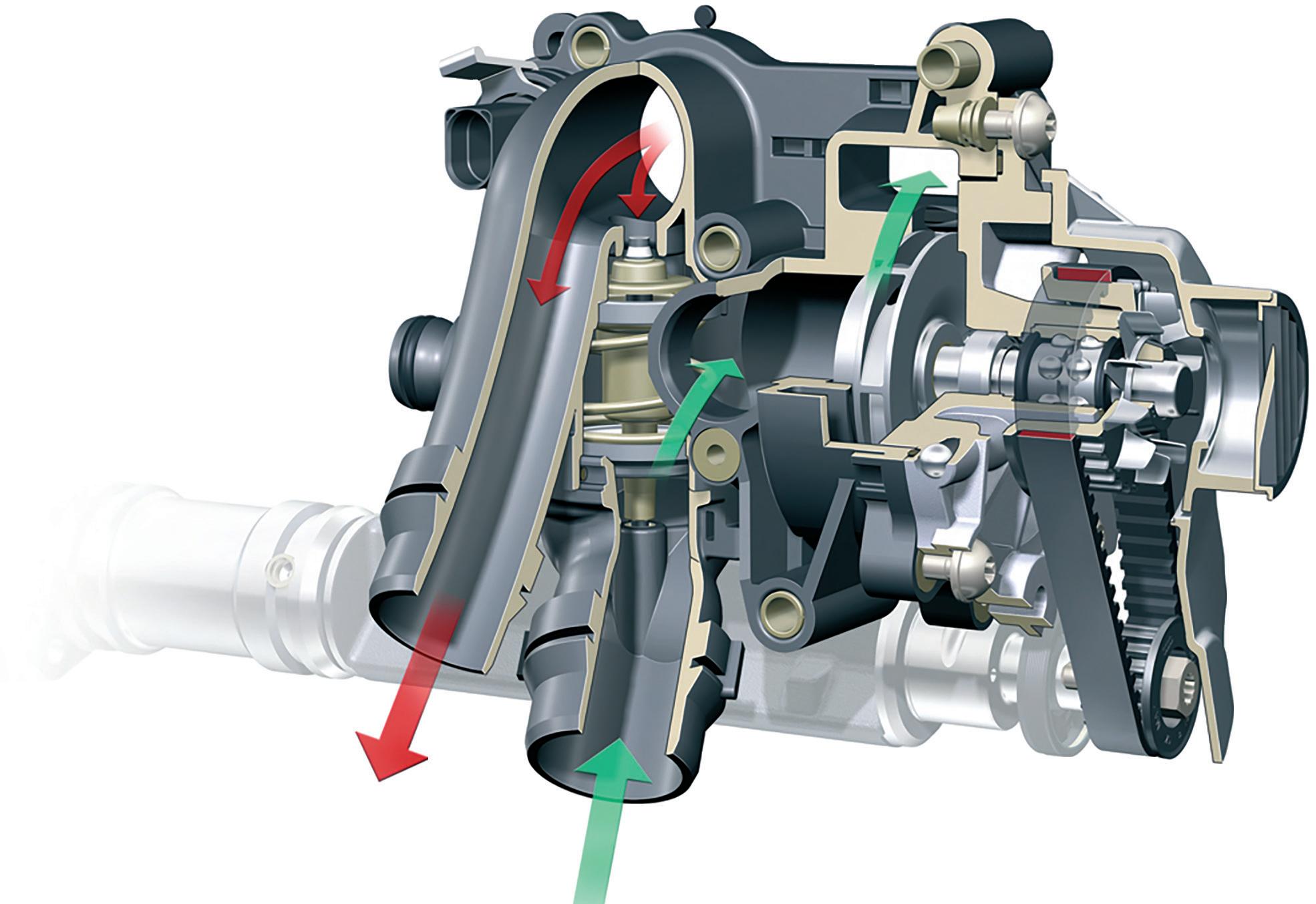
23 ON SHOW
Cool Cars with Dermott and VACC are hitting the road in Victoria and Tasmania to promote careers in the auto industry
32 BIG CHAIR
AAAA’s Stuart Charity talks automotive service and repair data sharing wins, the revived AAA Expo and his words to live by
36 BUSTING OUT
Building and powering buses will never be the same again, it’s a brave new electric world out there
42 OUTSIDE THE BOX
The automtoive industry has always been innovative, but when it comes to dynos –the Aussie industry is dynamite
48 IN THE KNOW
Technical delves into the EA888 engine family and Ford Ranger crankshaft position sensor brackets
54 SERVICE DIRECTORY
Find everything from the latest products to the best business services you need all in one place
BUSINESS INDEX
Drive your business forward by taking advantage of VACC corporate partnerships and services at your fingertips
VACC MOTORTECH brings together VACC’s proven suite of technical products with the might of Haynes’ international know-how.
Let us show you how it can drive your business forward...


AUTOMOTIVE CALLS FOR A REVOLUTION
THE next Federal Government must action the key priorities outlined by peak automotive bodies to ensure the industry can continue to employ 380,000 Australians nationally and assist motorists in the transition to a zero and low emission vehicle fleet.
The Victorian Automotive Chamber of Commerce (VACC) has launched its federal election manifesto, REVolution: The automotive industry’s policy priorities for the next Australian Government, which calls on the next Federal Government to implement 35 recommendations that will make a real difference to Australian voters.
The recommendations will see the next Federal Government:
Boost apprentice support
Improve the eligibility for employers to sponsor skilled migrants
Ensure all automotive retailers are eligible for any future Federal Government subsidies related to pandemic or state of emergency relief payments
Take a leadership role in implementing a national Zero and Low Emission Vehicle (ZLEV) policy in collaboration with the automotive retail industry
Increase investment and research in an industry-led and federally funded national program aimed at the proper disposal of End-of-Life Vehicles.
MANAGING EDITOR
David Dowsey
03 9829 1247
editor@australasianautomotive.com
SUB-EDITOR
Pia-Therese Hams
DESIGNERS
Faith Perrett, Gavin van Langenberg 03 9829 1189
creative@australasianautomotive.com
CONTRIBUTORS
Steve Bletsos, John Caine, Geoff Gwilym, John Khoury, Rod Lofts, Imogen Reid, Paul Tuzson
57, 700 READERSHIP
There’s more to do, of course, but if the next Australian Government gets these policies quickly into place it will shore up a $40 billion sector. That’s good for every Australian.
Critically, the election manifesto will inform the government as it considers the implications of a changing automotive landscape – urban infrastructure, skill requirements and government revenue streams, all of which require forward planning and policy debate.
Automotive employs 380,000 people nationally within 72,521 businesses, most of which are small and family owned. The next Federal Government needs to take advantage of industry insight and resources as it lays out its policy intentions.
The automotive industry is a fundamental component of a well-functioning economy, and it is at a critical juncture. With the emergence of ZLEVs and a long-standing skills shortage, industry and government must work together to keep Australia moving.
Read REVolution: The automotive industry’s policy priorities for the next Australian Government on the VACC website. Visit vacc.com.au
David Dowsey – Editor



ADVERTISING REPRESENTATIVE
Andrew Martin, Manager Commercial 03 9829 1169
amartin@ourauto.com.au
PRESIDENT Mark Awramenko CHIEF EXECUTIVE OFFICER Geoff Gwilym
Official publication of the Victorian and Tasmanian Automotive Chambers of Commerce
VACC adheres to its obligations under National Privacy Principles legislation. Information on products and services contained in the editorial and advertising pages of this magazine does not imply the endorsement of any product or service by VACC. Australasian Automotive is copyright and no part may be reproduced without the written permission of VACC. Advertisers and advertising agencies lodging material for publication in Australasian Automotive indemnify the VACC, its directors, Board, employees, members, and its agents against all claims and any other liability whatsoever wholly or partially arising from the publication of the material, and without limiting the generality of the foregoing, indemnify each of them in relation to defamation, libel, slander of title, infringement of copyright, infringement of trademarks or names of publication titles, unfair competition, breach of trade practices or fair trading legislation, violation of rights of privacy or confidential information or licences or royalty rights or other intellectual property rights, and warrant that the material complies with all relevant laws and regulations. This publication is distributed with the understanding that the authors, editors and publishers are not responsible for the results of any actions or works of whatsoever kind based on the information contained in this publication, nor for any errors or omissions contained herein. The publishers, authors and editors expressly disclaim all and any liability to any person whomsoever whether a purchaser of this publication or not in respect of anything and of the consequences of anything done or omitted to be done by any such person in reliance, whether whole or partial upon the whole or any part of the contents of this publication. Advertising accepted for publication in Australasian Automotive is subject to the conditions set out in the Australasian Automotive rate card, available from editor@australasianautomotive.com
Connect with VACC
Australasian
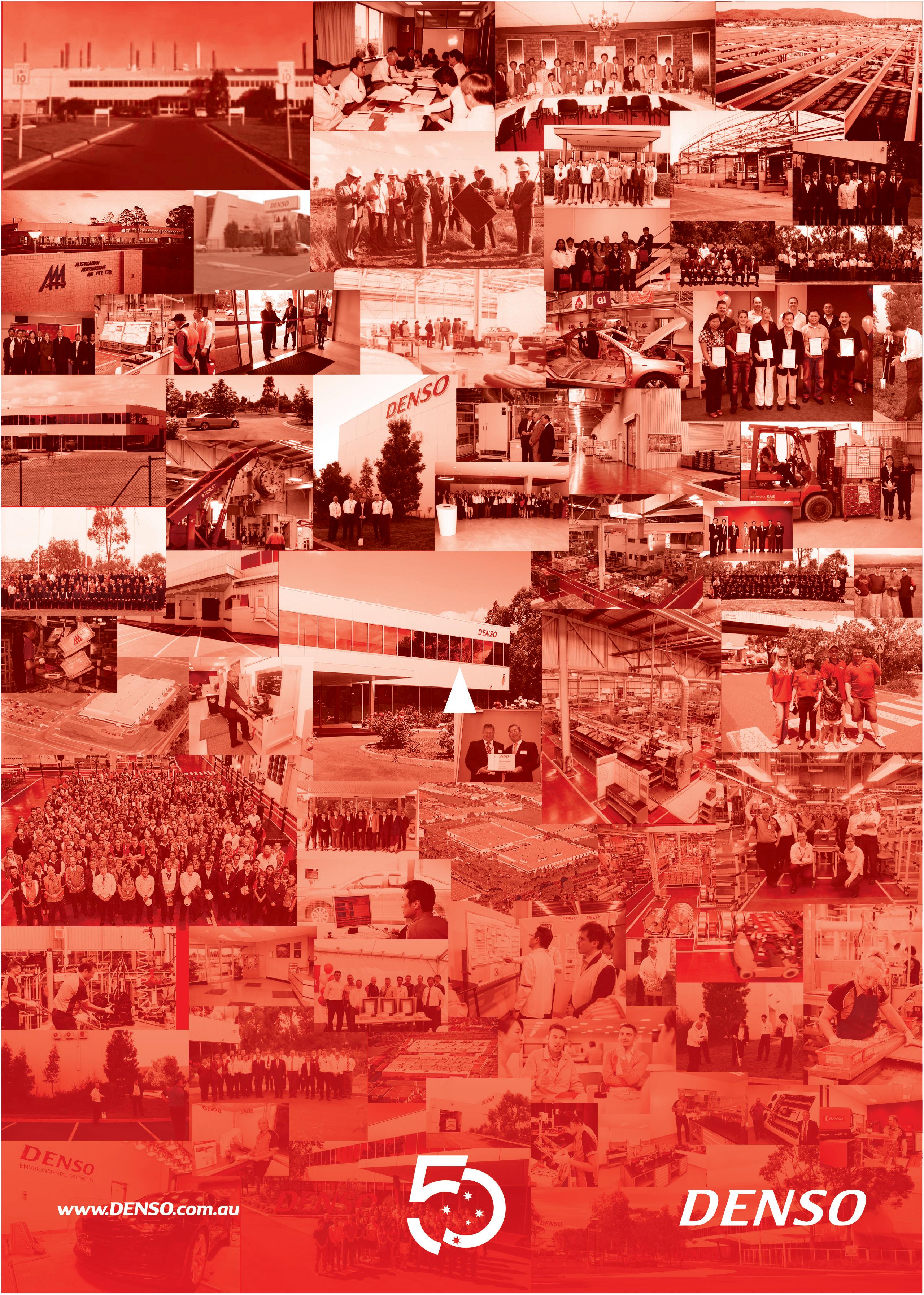
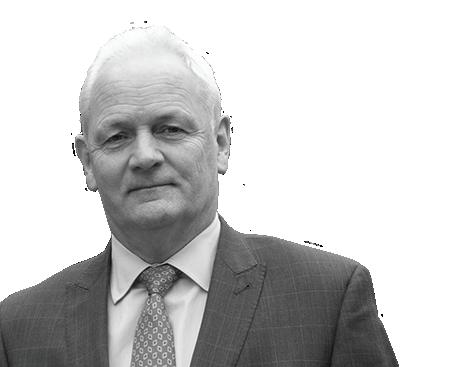
AUSSIE ICON: UTE BOOM
WHEN it comes to classic cars, Australia certainly has the goods. Our beloved Fords and Holdens are more valuable than ever. They’re collectors’ items, but what about the modern vehicles making motorists’ mouths water?
Overall Toyota is the most popular vehicle marque in Australia again – 19 years and counting – taking out 21.3 per cent of the 2021 new vehicle market and outselling its nearest rival Mazda by more than twoto-one. And if I dig even deeper, for the sixth consecutive year the Toyota HiLux was Australia’s best-selling new vehicle with a record 52,801 units sold last year. Yes, the humble ute has always been an iconic part of the Australian motoring landscape but clearly, it has moved above and beyond the farm and ‘tradey’ domain. This is the first time in Australian automotive history that a ute has led the new vehicle market over such a long period. Additionally, last year marked the first time that utes and vans combined outsold passenger cars.
Why? Well, while they may not be cheap, they are flexible and practical. The ute has become the go-to adventure and getaway vehicle, while also having the potential to tick the ‘family-friendly’ box. The appeal extends to younger drivers too – the Commodore and Falcon were once the dream machines. It was almost a cultural statement. Which crew were you? Now the choices are endless but, across the board, the ute is right up there. So, our love affair with the ute continues to go from strength to strength. Yes, the Toyota HiLux has taken the top spot in recent years, but I wonder what changes the electric fleet will bring? Petrol and diesel utes will need to make way for zero and low emission solutions. It’s not an ‘if’ but a ‘when’ scenario. To hear more from industry thought-leader, Geoff Gwilym read the VACC column in Friday's Herald Sun, and subscribe to THE GRILLE podcast.
WHEN VACC President, Mark Awramenko, VACC CEO, Geoff Gwilym and VACC


UTE BOOM
Geo Gwilym VACC CEO

When it comes to classic cars, Australia certainly has the goods. Our beloved Fords and Holdens are more valuable than ever. They’re collectors’ items, but what about the modern vehicles making motorists’ mouths water? Overall Toyota is the most popular vehicle marque in Australia again – 19 years and counting – taking out 21.3 per cent of the 2021 new vehicle market and outselling its nearest rival Mazda by more than two-to-one. And if I dig even deeper, for the sixth consecutive year the Toyota HiLux was Australia’s best-selling new vehicle with a record 52,801 units sold last year.

Yes, the humble ute has always been an iconic part of the Australian motoring landscape but clearly, it has moved above and beyond the farm and ‘tradey’ domain.
This is the first time in Australian automotive history that a ute has led the new vehicle market over such a long period. Additionally, last year marked the first time that utes and vans combined outsold passenger cars.
Why? Well, while they may not be cheap, they are flexible and practical. The ute has become the go-to adventure and getaway vehicle, while also having the potential to tick the ‘family-friendly’ box. The appeal extends to younger drivers too. The Commodore and Falcon were once the dream machines. It was almost a cultural statement. Which crew were you? Now the choices are endless but, across the board, the ute is right up there.
So, our love affair with the ute continues to go from strength to strength. Yes, the Toyota HiLux has taken the top spot in recent years, but I wonder what changes the electric fleet will bring? Petrol and diesel utes will need to make way for zero and low emission solutions. It’s not an ‘if’ but a ‘when’ scenario.



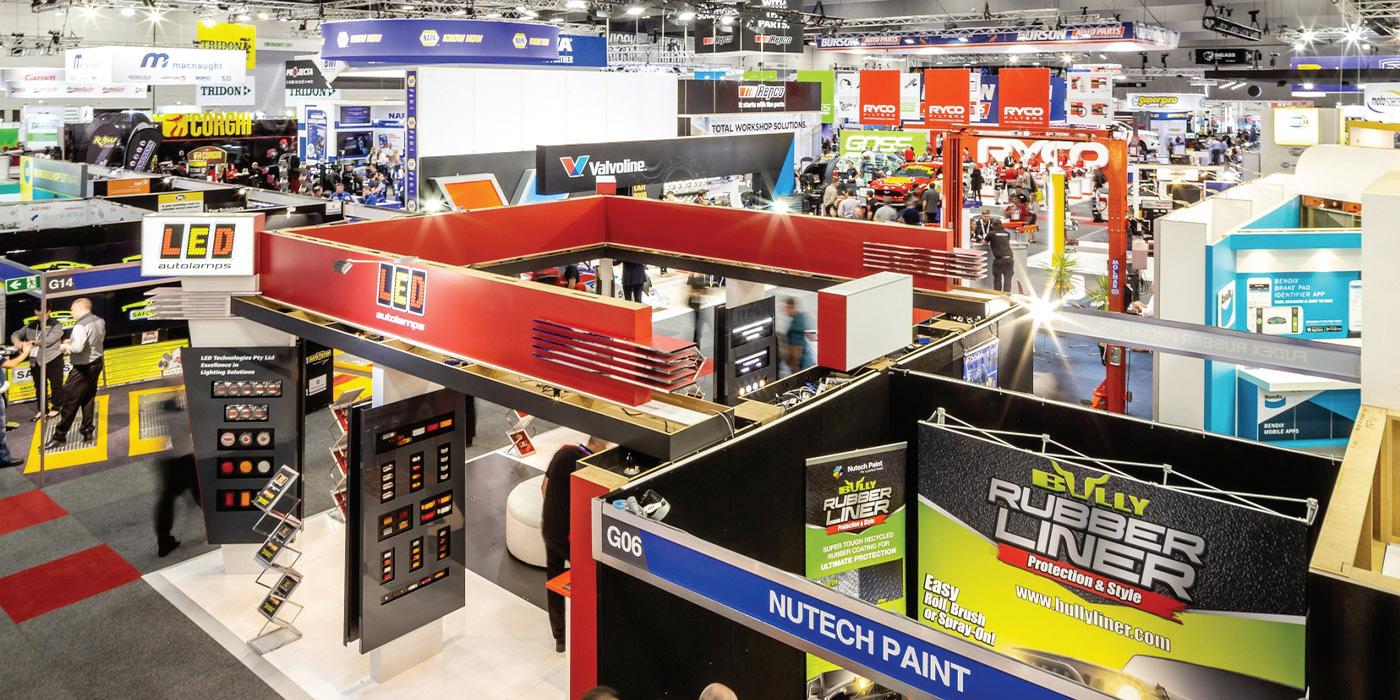

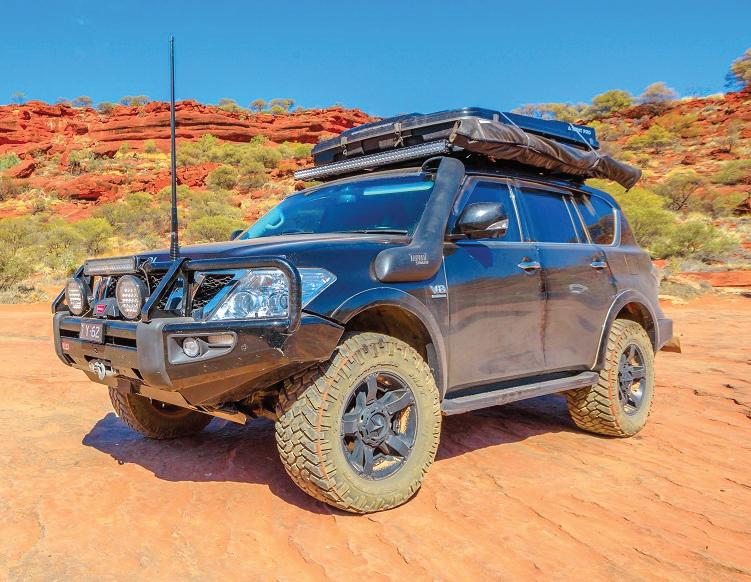
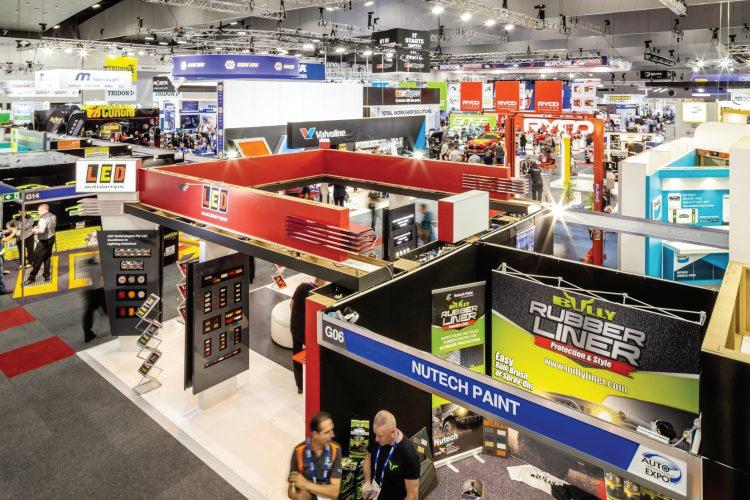
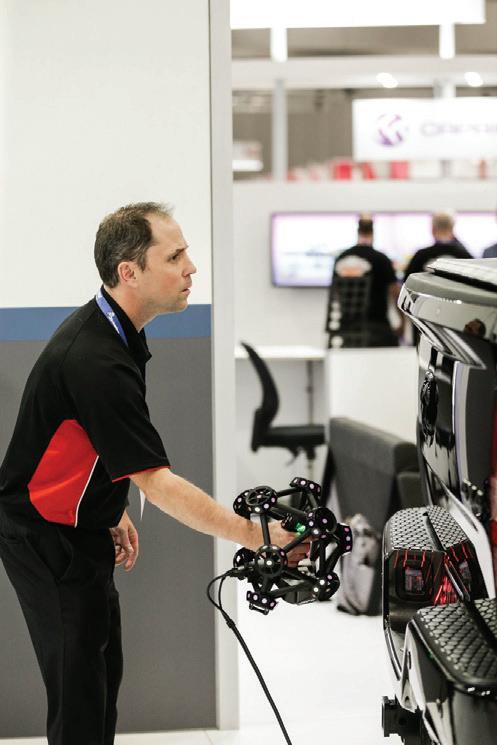


STEVE BLETSOS INCREASE IN APPRENTICES
IT’S not often we see a large rise in the number of businesses putting on apprentices, but the latest data from the National Centre for Vocational Education and Research (NCVER) shows just that. NCVER data for the 2020-21 financial year reveals a 44 per cent increase in apprentices and trainees that commenced within the Automotive Retail, Service and Repair (AUR) Training Package compared to 2019-20. This represents the highest yearly increase since 2011-12 and was driven by strong growth during the January and June quarters of 2021. While this is welcome news, this increase in commencements of automotive apprentices and trainees should be placed into perspective. Over the last decade, there has been a growth of 3.4 million vehicles on road and over 5,000 automotive businesses, yet despite the latest increase in apprentice numbers, there are still over 500 fewer apprentices commencing annually than there were in 2011-12 (Chart 1). Furthermore, given that we have a skills crisis approaching an estimated 39,000 positions across the industry, the recent apprentice increase will barely make a dent in the available workforce for automotive businesses. What the latest data does show, however, is that undoubtedly, the Federal Government’s current package of incentives to employers for taking on new apprentices are working. In particular, the Boosting Apprenticeship Commencements (BAC) wage subsidy and the Completing Apprenticeship Commencements (CAC) wage subsidy programs have provided valuable support to businesses and group training organisations to take on new apprentices and trainees in the current constrained labour market.
Hopefully over time, this will assist towards building a pipeline of skilled workers to support the automotive industry. There is a real risk, however, that these early gains in apprentice numbers may be short-lived. The BAC program is due to cease at the end of March 2022. This may jeopardise any sustained increase in apprentice and trainee commencements moving forward, thus rendering the current increase as a temporary blip. In its pre-budget submission to the Federal Government, the Victorian Automotive Chamber of Commerce (VACC) has recommended that funding of both the BAC and CAC programs should be extended for a further two years. VACC has also recommended for the reinstatement of the Federal Government’s apprentice mentoring program, which in the past has proved
to be enormously successful in raising apprentice retention and completion rates from 50 per cent to around 83 per cent. Other budget recommendations made by VACC include that the Federal Government raise its annual migration levels above the current targets for the next two years, as well as remove the applicability criteria for employer sponsored permanent and temporary migration for the short and medium/long term skill shortage lists. Doing so would enable any migrants holding any skilled occupation to be sponsored by employers. This would also mean all temporary skilled migrants would have a pathway to permanency, thereby adding to the permanent skill base of the economy. As a package, these measures will help address the skills crisis and restore some balance to the depleted labour market.

Chart 1: Apprentice and Trainee Commencements in AUR Training Package, 2011-12 to 2020-21
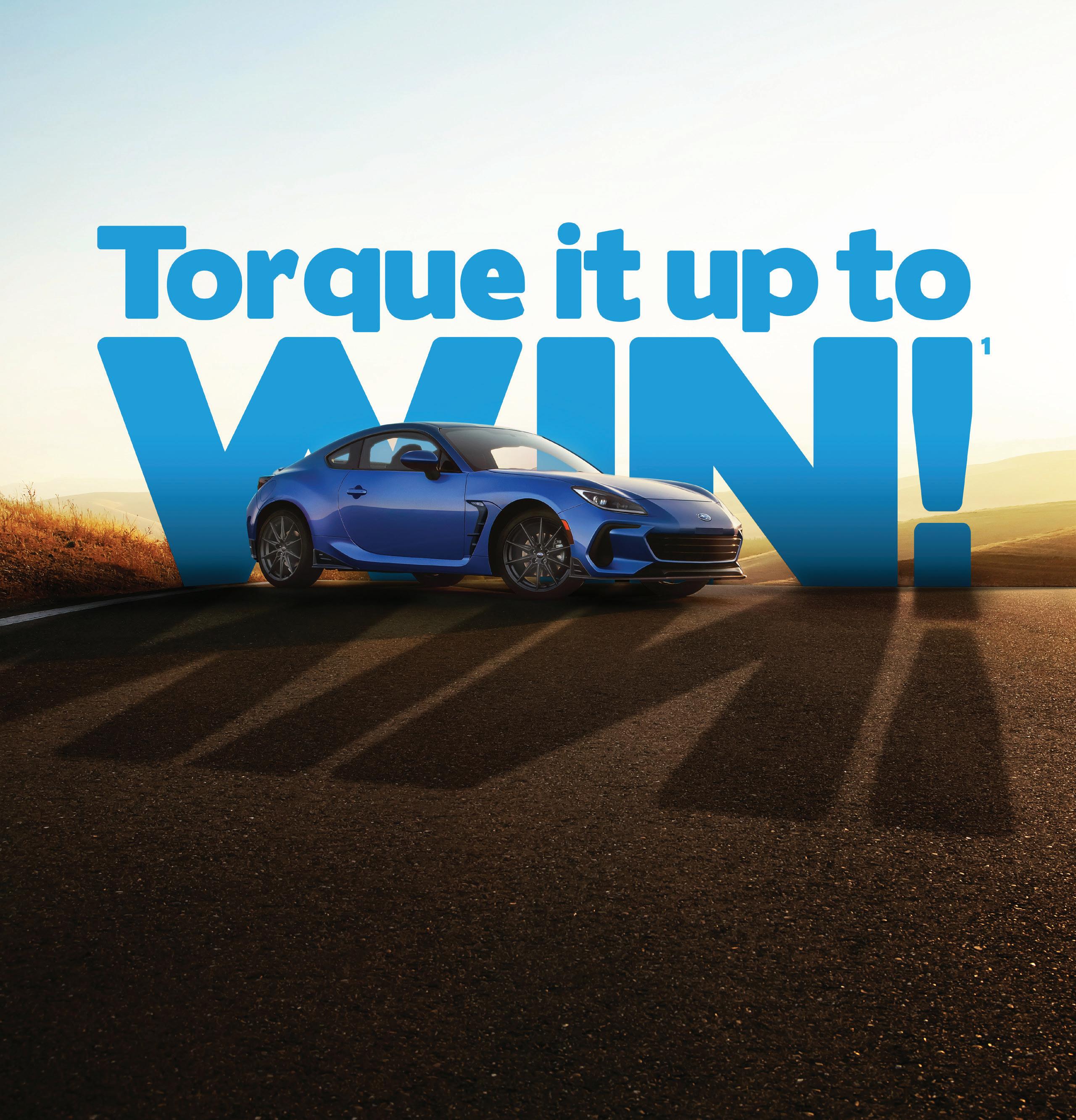

JOHN CAINE
VEHICLE MILEAGES... TRUE OR FALSE?
ODOMETERS fitted to cars, trucks and motorcycles serve several purposes.
Service intervals are primary and total/ trip distance travelled is secondary. This article will discuss what is known as ‘odometer tampering’ or ‘fraudulent misrepresentation of distance travelled’.
A working definition of this would be when a person causes a vehicle’s indicated total distance travelled to decrease, with the intent to mislead and/or defraud a potential purchaser. This purchaser could be a member of the public or a Licensed Motor Car Trader (LMCT) who is either purchasing the vehicle outright or trading it in.
In colloquial terms or trade slang, it is called ‘whizzing’ or ‘rollback’. Dishonest persons would remove the odometer from the vehicle and manually reset the display to a lesser figure.
Odometers generally work by counting the rotations of the wheel
on a vehicle. A cable or sensor transmits this information either directly to an analogue speedometer or to a computer that calculates the distance travelled and transmits it to an electronic display.
Along with physically altering the numbers, some will disconnect the odometer, continue to drive the vehicle and then hook the odometer back up when it comes time to sell.
An odometer from another vehicle with lower kilometres may also be used to replace the original. It is extremely rare for a LMCT to be involved in odometer tampering these days due to the severe penalties and sanctions which apply. It is more likely to occur in a backyard or unlicensed seller situation. Consumer affairs has successfully prosecuted a number of people in recent years, with large fines being awarded. It is legal to remove and replace
faulty speedometers and dashboard displays, but if this results in lower recorded mileage, then it either needs to be corrected by a suitable person – such as an auto electrician or instrument technician – or a written declaration made to a prospective purchaser noting the time, date and mileage at which the replacement occurred and either the difference or a statement that the vendor believes the display to be incorrect. Should a trader fall victim to an unscrupulous seller, the Victorian Civil and Administrative Tribunal, or other state tribunals, may be able to order rescission and/or compensation. This can also be a valid reason to void a contract of sale for a new or used vehicle should tampering of the tradein’s odometer become evident.
The laws in Victoria relating to odometer tampering can be viewed online via Motor Car Traders Act 1986. Visit legislation.vic.gov.au
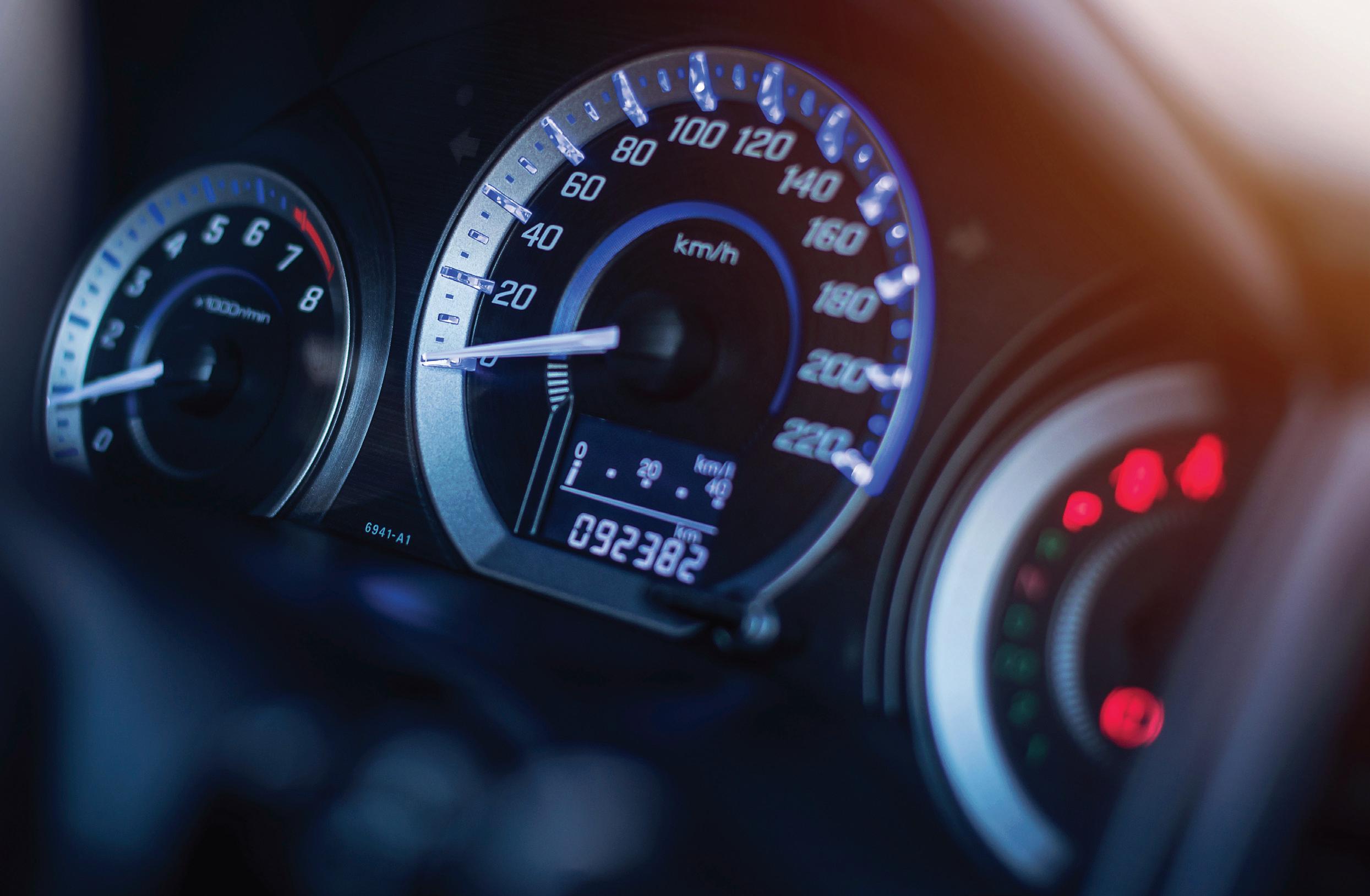
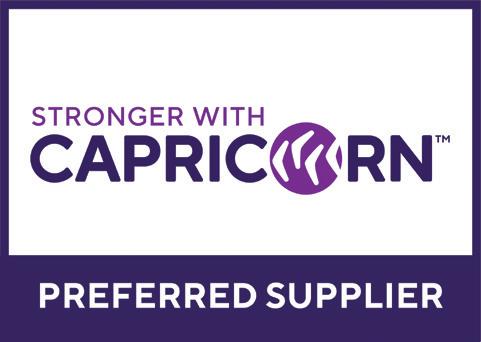
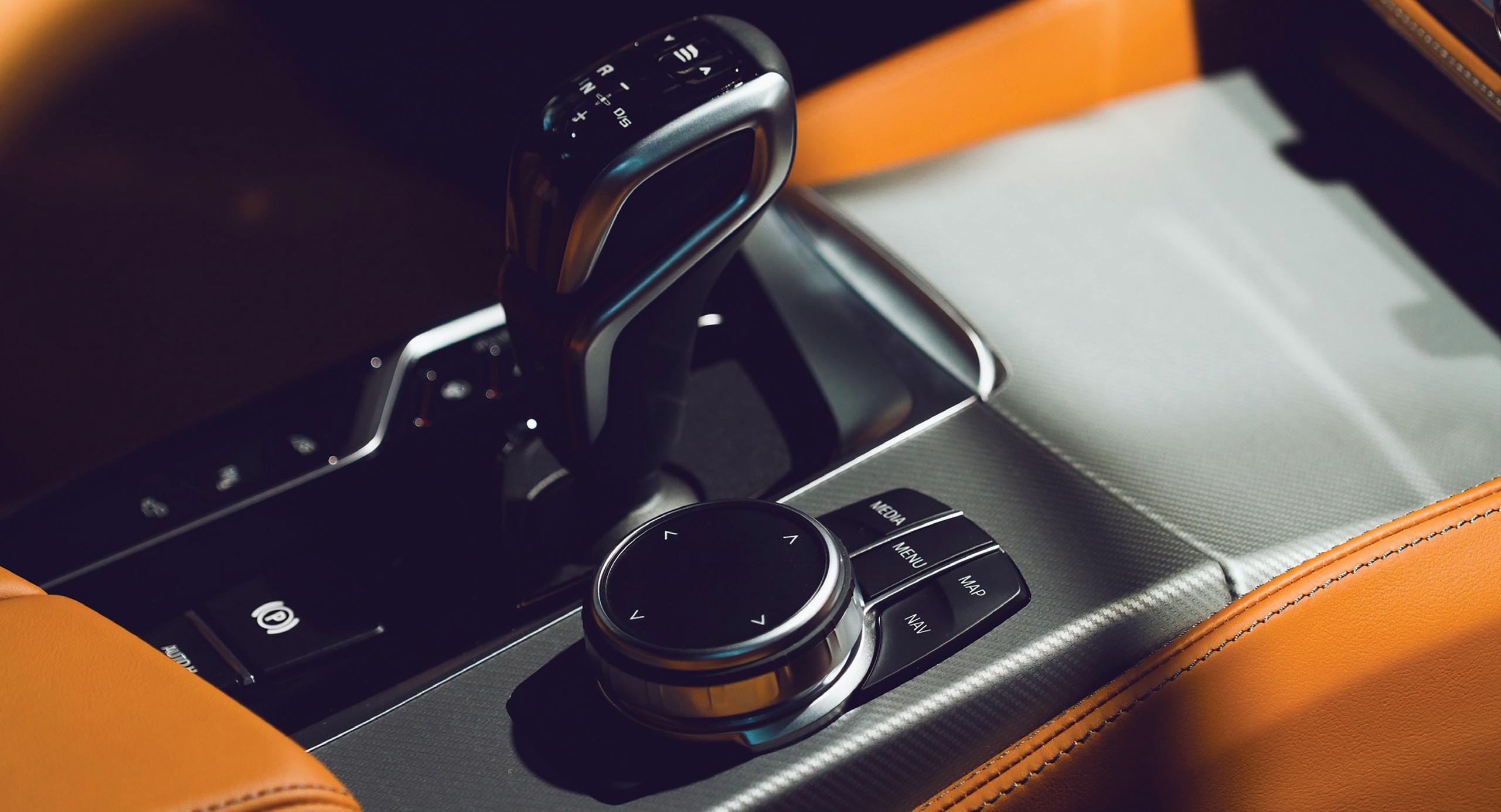

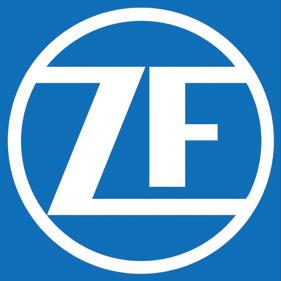
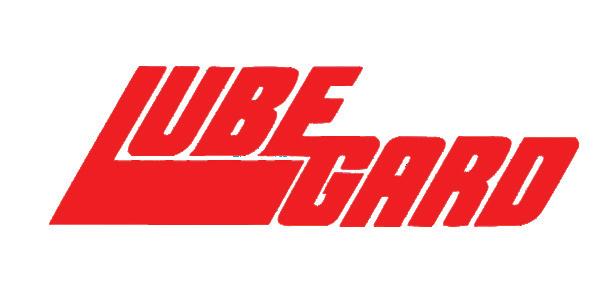
Driveline Auto Parts is a division of

DR IMOGEN REID INDUSTRY POLICY MATTERS
WITH 2022 well and truly underway, VACC’s policy team is also full steam ahead. In the lead up the likely May Federal Election, VACC has launched its Federal Election manifesto REVolution, which outlines the automotive industry’s key policy priorities for the next Australian Government. Culminating in 35 recommendations, the manifesto covers nine important areas for reform. It will come as little surprise that skills shortages and access to qualified labour is the biggest issue facing our industry and tops our policy list. While the automotive industry is no stranger to skills shortages, the added pressure of COVID-19 and closed borders has exacerbated an already tenuous situation. VACC’s modelling predicted a labour deficit of approximately 31,000 positions in 2020-21. Updated analysis forecasts this figure to rise to almost 39,000 throughout 2022-23. These are alarming numbers. VACC is demanding urgent government action in three ways: 1) prioritise automotive motor mechanics for visa processing, 2) reinstate permanent and temporary skilled migration at a heightened level; and 3) implement greater training incentives and support for automotive apprentices and employers – including support for
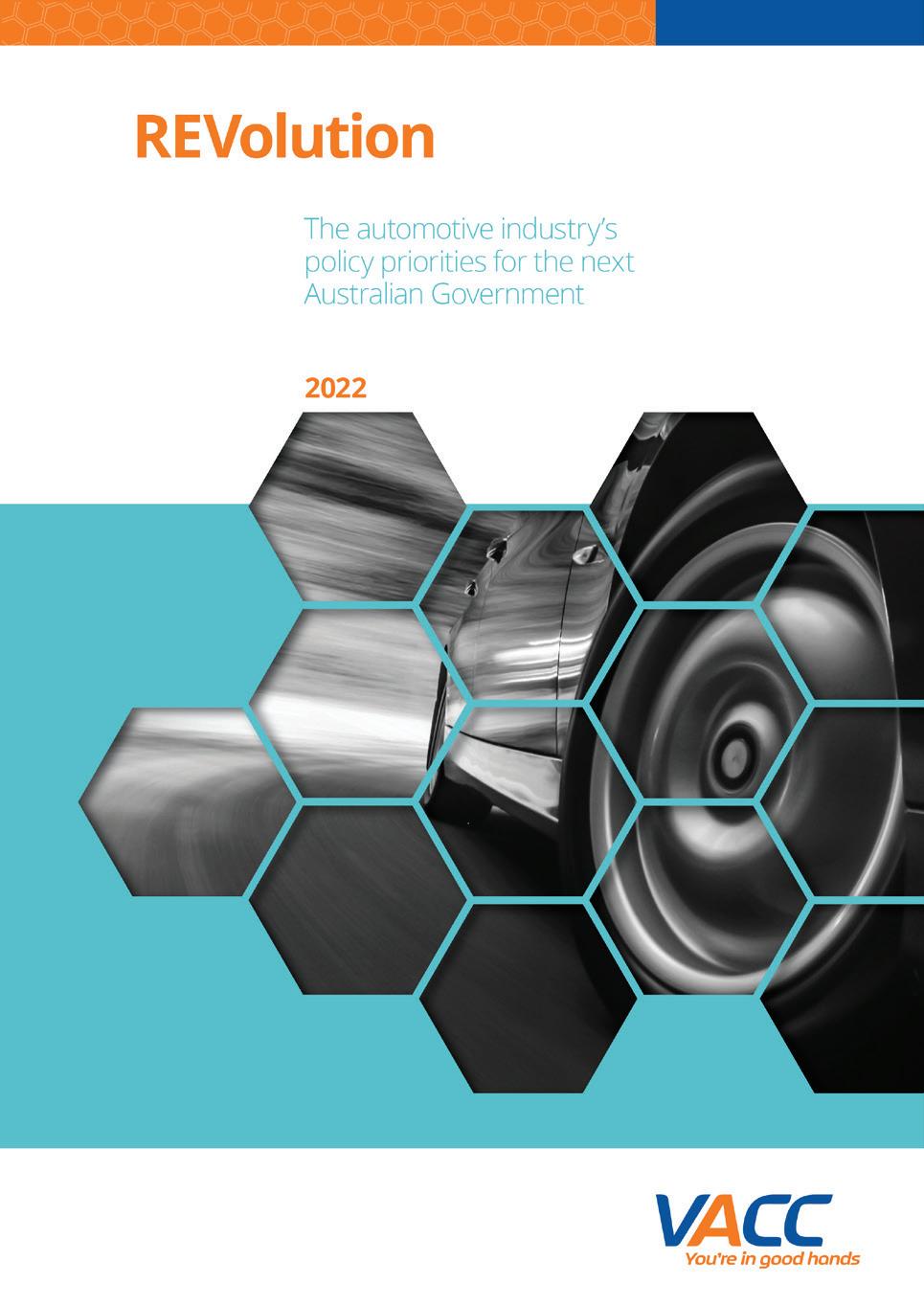
the training of a Zero and Low Emissions Vehicle (ZLEV) workforce. While it’s acknowledged there are no ‘quick fixes’ when it comes to skills shortages, VACC is doing all it can to support members and work towards a workable solution that will allow members to employ and grow. Further to the skills crisis, COVID-19 business recovery is also a priority. VACC argues that any future government COVID-19 relief or stimulus packages should be equitably distributed. Research conducted by VACC found at the height of the pandemic in 2020, approximately 70 per cent of dealers, nationally, did not qualify for three of the Federal Government’s key relief packages. This was based on the criteria of aggregated turnover, insufficient loss of business turnover (70 per cent in some instances) or staff levels being too high. As we move into the third year of the pandemic, it is essential the next Australian Government learns from previous experiences and ensures equitable support is delivered. Rounding out our top three issues is the imperative to future proof the Australian automotive retail industry. The industry has a significant role to play in the sustainably of our environment, which includes the promotion, sale and servicing of ZLEVs. As the phasing out of internal combustion engines (ICEs) draws closer, it is crucial government and industry is prepared for the changes (and
challenges) this will have on supply chains, businesses and the public purse. VACC argues that the next Australian Government must to take a leadership role, in collaboration with the automotive retail industry, in the implementation of a national ZLEV policy. This will provide clarity and harmonisation across jurisdictions as the country moves to upskill technicians, provide adequate infrastructure, align incentives (if any) and bridge tax shortfalls brought about by lost excise.
Other areas covered in the manifesto include: tax reform, red-tape reduction, environmental considerations, workplace relations and the need for fairer competition for some parts of the industry. It is a detailed document that, in our view, covers the many areas requiring urgent attention as we move towards a new post-COVID world. The document has been sent to all state and federal members of parliament and relevant stakeholders. It will also be accompanied by a comprehensive communication campaign, so please stay tuned and feel free to connect with any of the policy team to discuss any of its content. I invite members to download REVolution from the VACC website to read our priorities at your leisure. Once again, I thank those members who were actively engaged in providing feedback. Your input was absolutely essential and has meant our policy manifesto genuinely reflects the voice of our members. As the election draws closer we will ensure the voice of the automotive service, retail and repair industry continues to be heard.

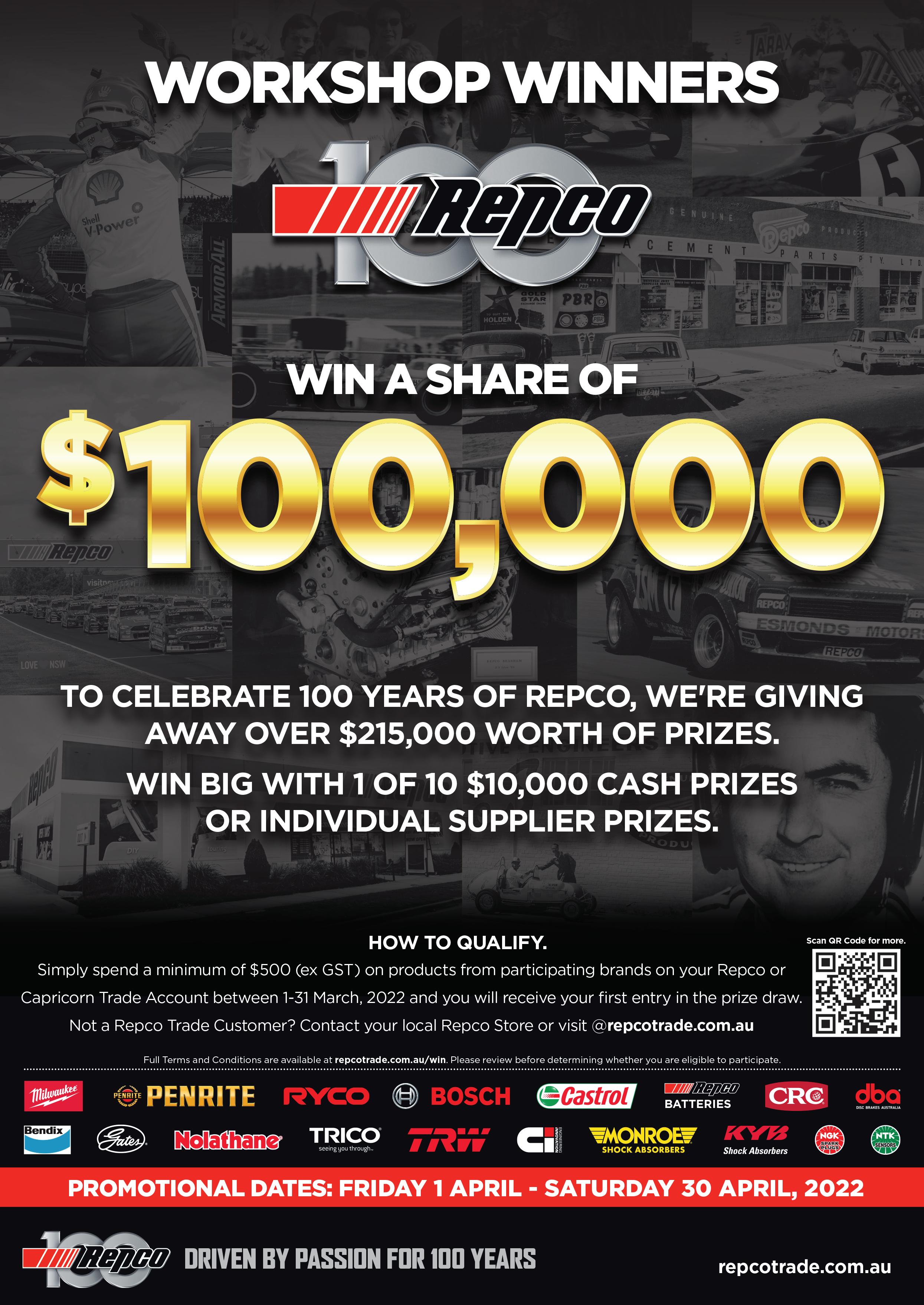
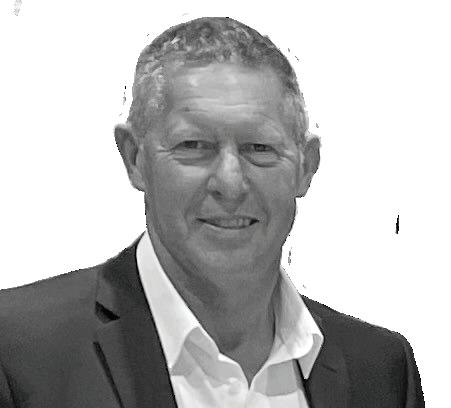
THE Tasmanian Automotive Chamber of Commerce (TACC) hosted its first member briefings for 2022, kick-starting member engagement activities following two years of restricted gathering protocols.
These events were conducted in Launceston and Hobart, for the convenience of both Northern and Southern member-businesses.
Supported by Victorian Automotive Chamber of Commerce (VACC) industry policy advisors John Khoury and Kathy Zdravevski, the briefings were an opportunity
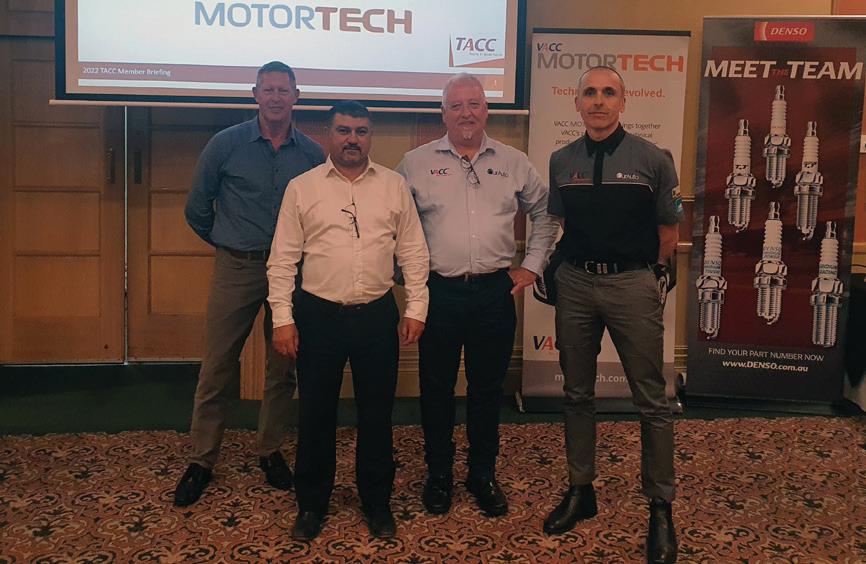
BRUCE MCINTOSH MEMBER RECONNECT
to reconnect with members and provide an update on legislative changes to the Vehicle Manufacturer Information Sharing Scheme and its national rollout later this year.
TACC area managers, Darren Anderson and David Goldstone were the conduits to the local discussion, while VACC technical advisors from the Chamber’s commercial arm, OurAuto and MotorTech – along with sponsors Spirit Super, DENSO and Exedy –presented their latest offerings.
Food and beverages from local suppliers were provided to the
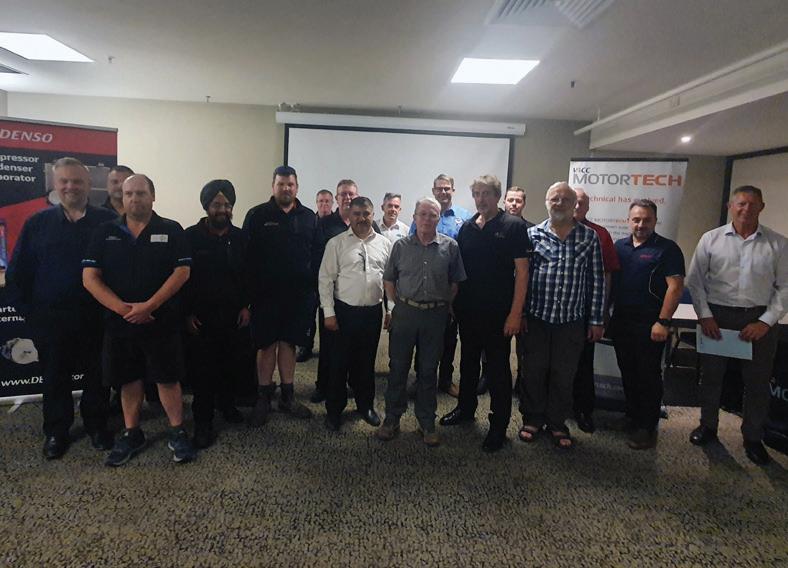
over 35 TACC members in attendance, with Kathy Zdravevski crowning the Hobart venue ‘best finger food’ winner.
I had the honour of running the obligatory business card draw and congratulated the winning members with prizes from MotorTech and TACC.
Both were nights of open discussion, industry updates and prizes, and I encourage TACC chamber representatives to keep an eye out for future invitations and get involved in our informative and engaging member events.
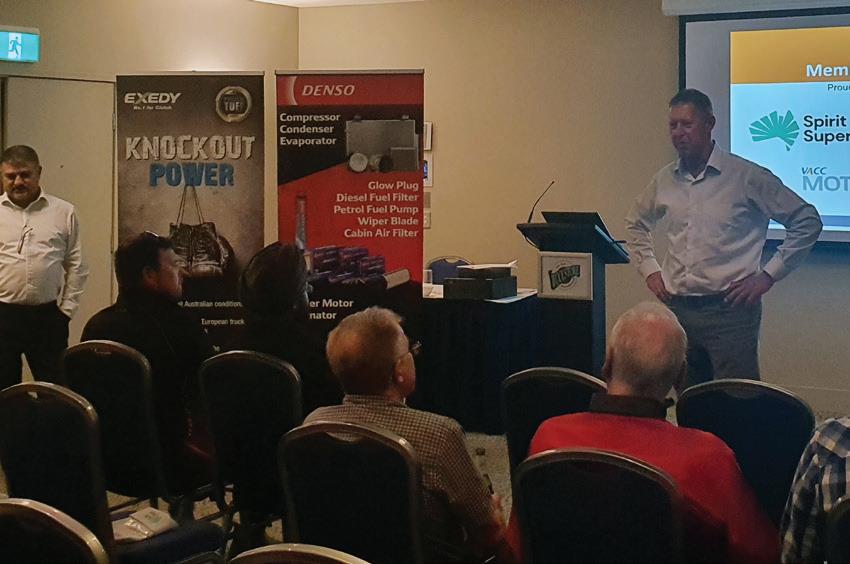
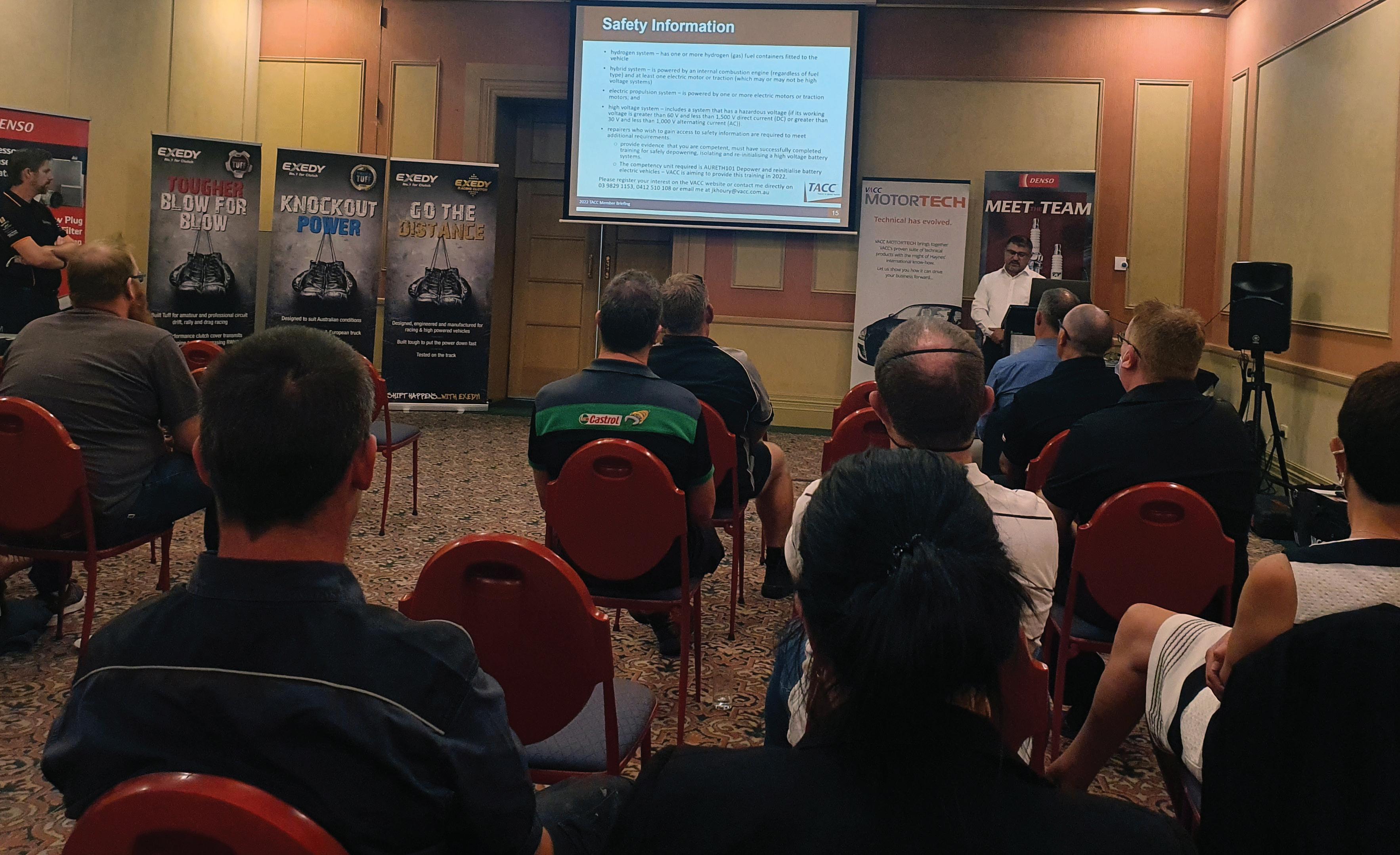
TACC Manager Bruce McIntosh, top right, and VACC Industry Policy Advisor John Khoury, above, update Tasmanian members on the latest news and trends

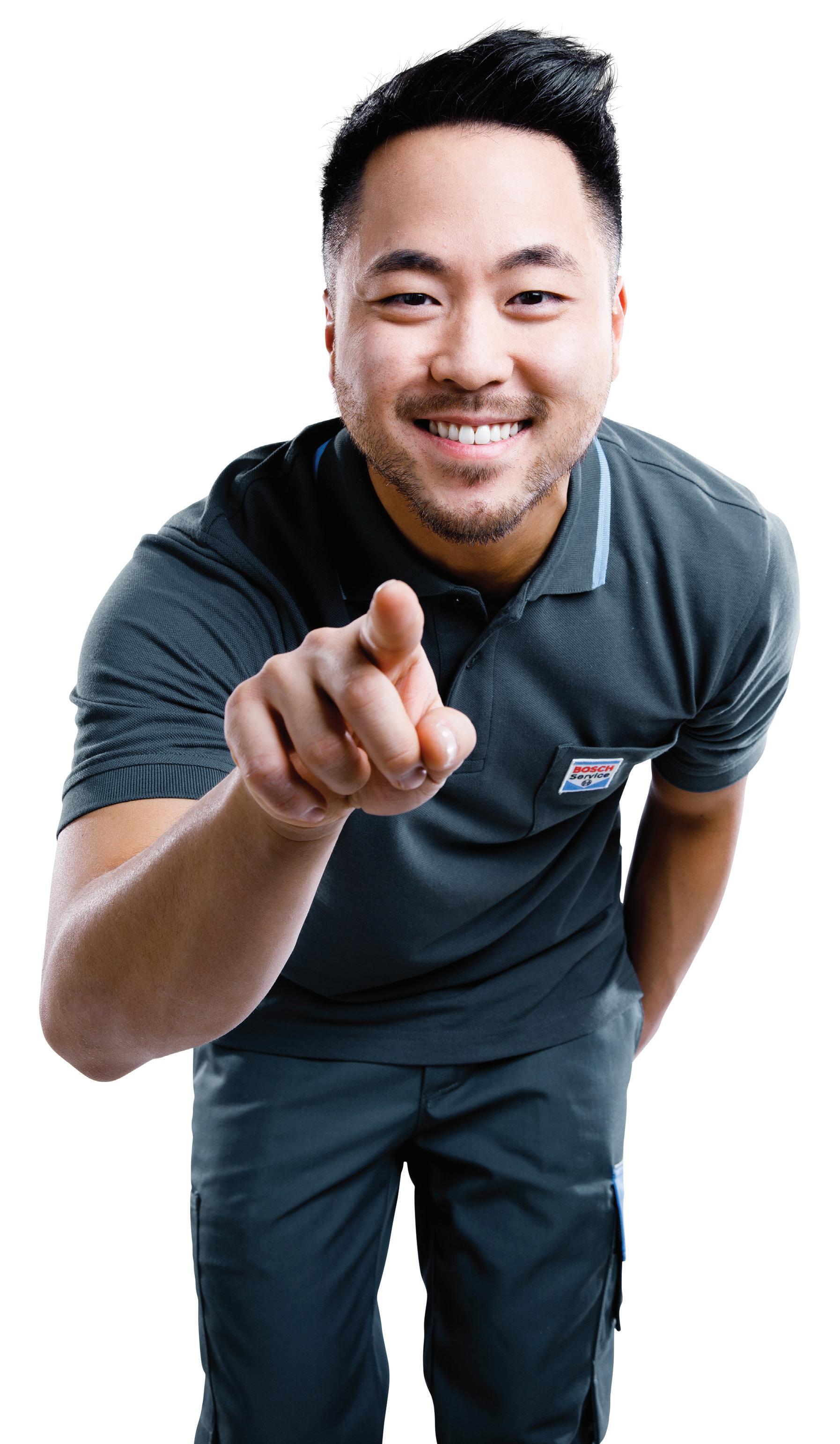
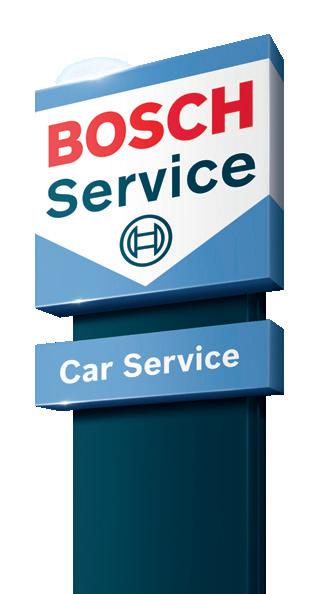
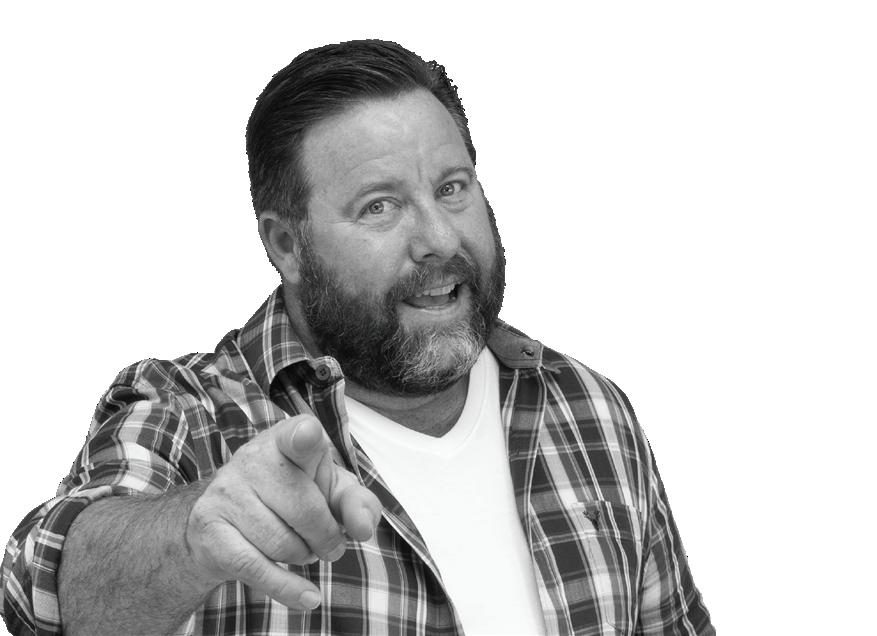
SHANE JACOBSON AUTOMOTIVE IS MAKING MOVES
OFTEN automotive isn’t front of mind when we talk about sustainability or the environment. But maybe it should be!
The automotive industry is driving important change and helping Australia clean up its act. My mates at the Victorian Automotive Chamber of Commerce (VACC) certainly take their environmental efforts seriously – that goes for the support, tools and advice they provide their member-businesses, as well as head office efforts. What’s that saying? Lead by example…
VACC has a dedicated Occupational Health, Safety and Environment (OHS&E) unit which provides overthe-phone, digital and face-to-face advice and information to help their member-businesses stay on top of OHS responsibilities and environmental law. They also drive a national program called Green Stamp, an initiative rewarding businesses that introduce environmental and sustainability
measures into day-to-day operations. Then there’s Tyre Stewardship Australia (TSA), formed to implement the national Tyre Product Stewardship Scheme. By choosing TSA Accredited participants, $0.25c from your new tyres goes towards finding sustainable markets and a new life for your old ones. Sounds pretty good to me.
VACC has its sights set on Canberra in a bid to up the ante when it comes to industry environmental efforts on a national scale. With a federal election looming this year, the Chamber has released its manifesto, REVolution: The automotive industry’s policy priorities for the next Australian Government – check it out on vacc.com.au – which includes specific environment recommendations. Did you know 750,000 vehicles reach the end of their economic lives every year, creating more than one million tonnes of waste? VACC dismantling and recycling member-businesses have dedicated
substantial resources and are currently collaborating with authorities to identify options for an End-of-Life Vehicle program in Australia. They want to stop this cycle – but the government needs to play ball. Even the Chamber’s new office in North Melbourne reflects the group’s values and environmentally conscious commitment. The building has a five-star green rating – representing Australian excellence in environmentally sustainable building practices. The basement car has electric charging stations. Can’t wait for a tour! Businesses being proactive when it comes to the environment, I love to see it. Just another reason to look for orange sign, I’d say. See ya on the road, folks! What to hear more from Shane? Visit: thegrillepodcast.com.au
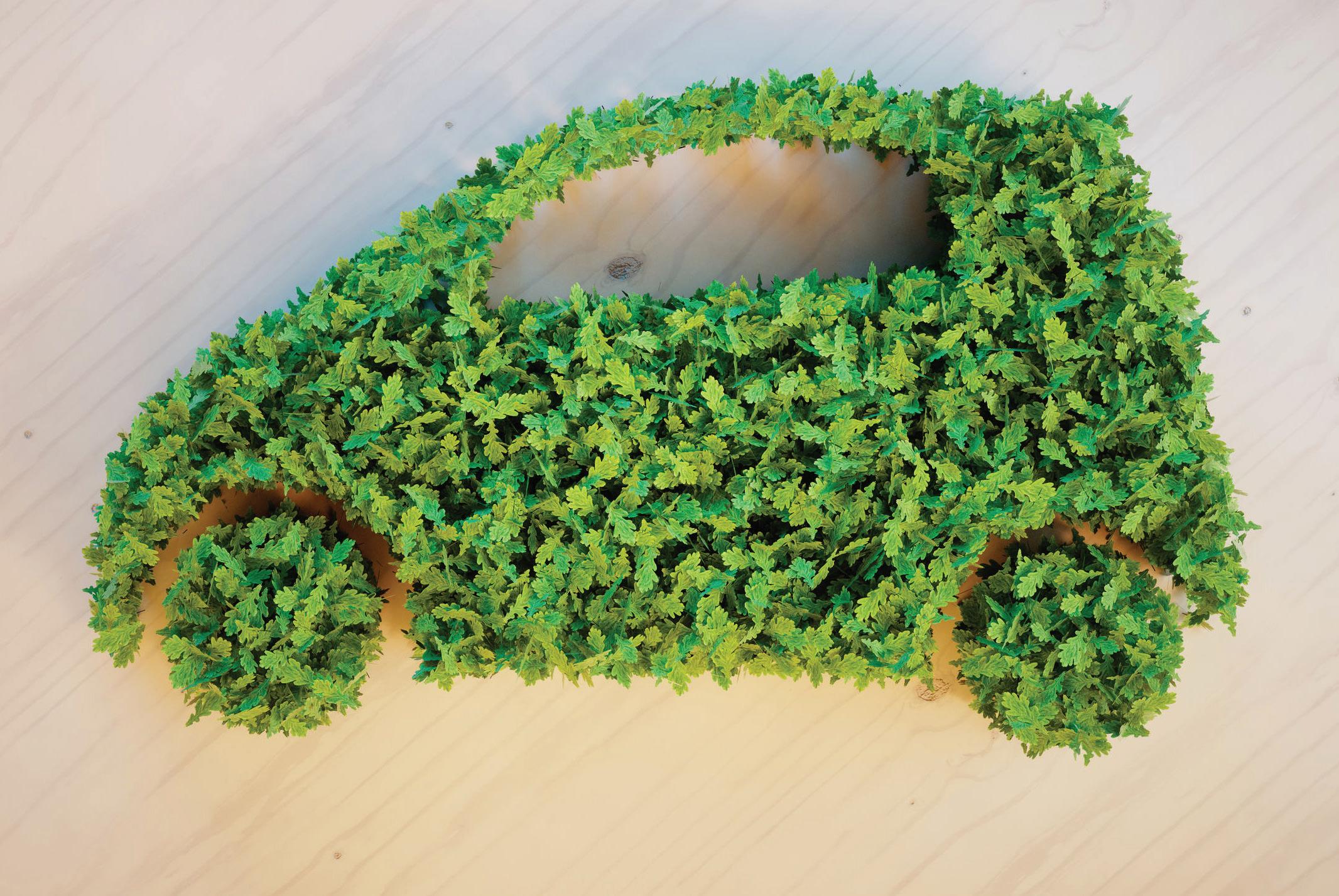

New home for VACC
THE Victorian Automotive Chamber of Commerce (VACC) has officially relocated to its purpose-built office in North Melbourne. The three-year project ended with the handing over of the building keys to VACC President Mark Awramenko, the occasion marking the beginning of an exciting new chapter for the Chamber. Representatives from the VACC House builders, Hacer Group; architects, Gray Puksand; and project managers, Case Meallin were in attendance.
While the old office on St Kilda Road had a rich history, the Chamber’s new home at 650 Victoria Street, North Melbourne positions VACC as a forward-thinking and contemporary association for its members.
The building is at the forefront of modern sustainable technology, with its architectural features a subtle nod to the automotive industry, including a facade inspired by the grille of the classic Ford Mustang.
VACC occupies 3,172 square metres of office space on levels one to three, and there is a rooftop balcony providing views across the Melbourne CBD – perfect for member functions. The office also features an inter-tenancy atrium staircase allowing natural light to flood into the building and
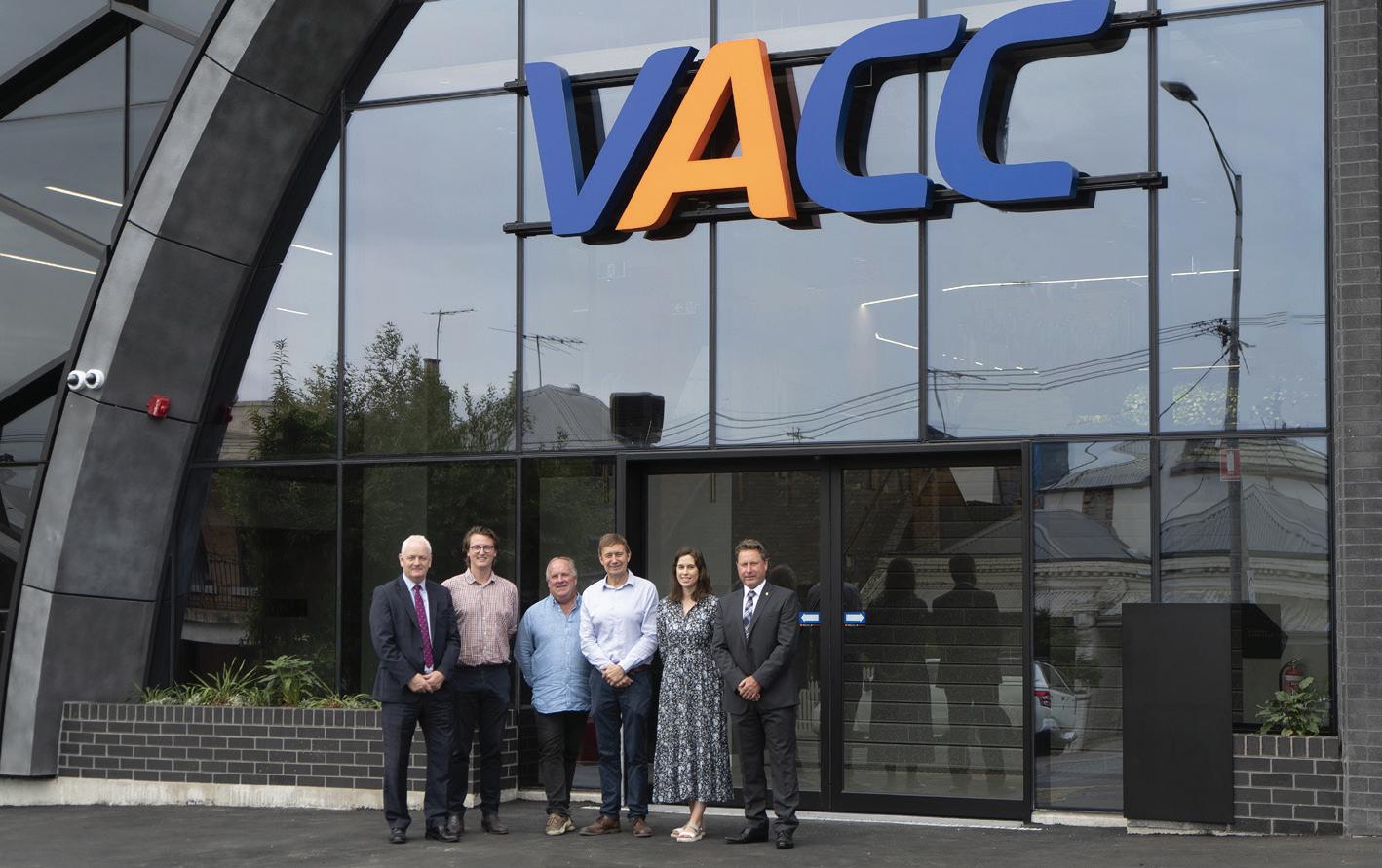
providing easy interaction and connectivity between floors. VACC will use the expansive level one lobby area as a function space and exhibition area to showcase new technology and automotive achievements. The property has 91 basement car spaces with five electric charging stations and meets a minimum five-star green rating, representing
Australian excellence in environmentally sustainable building practices.
VACC House 650 Victoria Street, North Melbourne Victoria, Australia 3051 P: 03 9829 1111 | E: vacc@vacc.com.au
All other contact details remain the same.
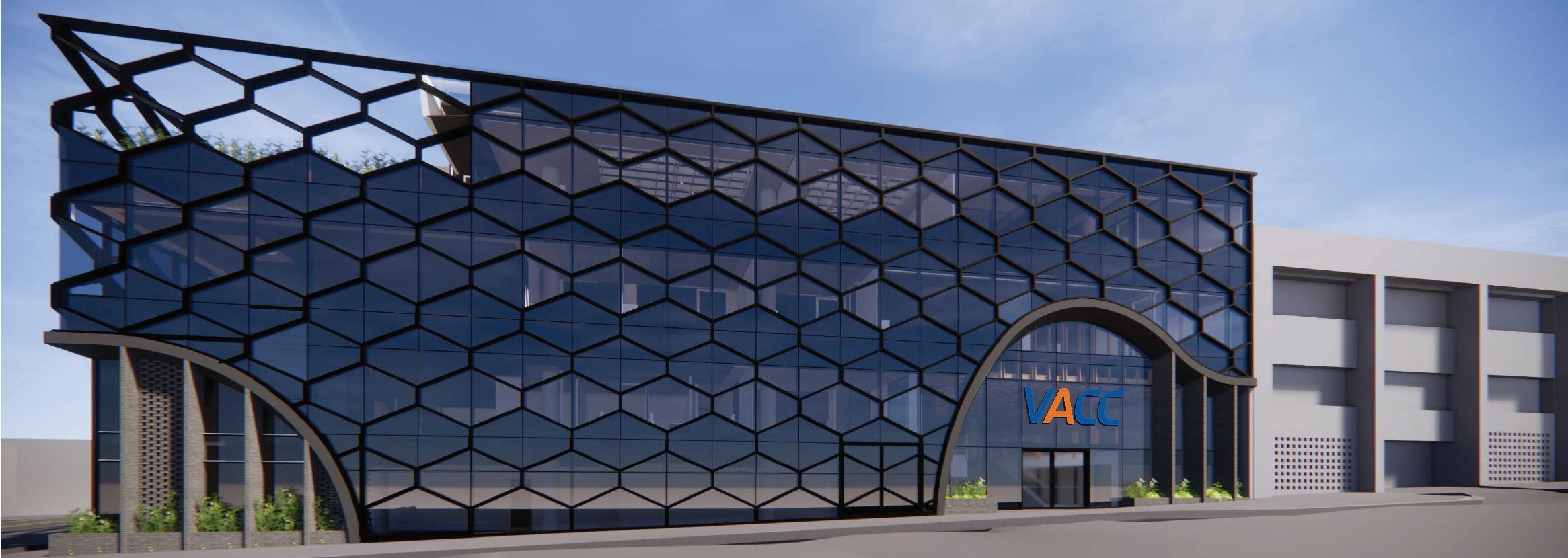
Driving diversity
ACCELERATING Women into Automotive (AWIA) is calling on women curious about an automotive career, and businesses looking for a new apprentice, to participate in the program’s next intake.
A Victorian Automotive Chamber of Commerce (VACC) initiative, AWIA was developed in order to help boost the number of women commencing apprenticeships in the industry.
The program provides a four-week, intensive and engaging introduction to the sector. Participants receive training at a Registered Training Provider and hands-on experience in a variety of workplaces. Automotive businesses that provide work placement to participants will receive free diversity training for their employees and, at the end of the placement, can offer an apprenticeship to their participant.
Program facilitators provide ongoing support as participants transition into their apprenticeships
To register or for more information, contact the VACC Skills Development Centre on 03 9829 1130 or AWIA@vacc.com.au
AWIA is funded by the Apprenticeship Innovation Fund.
From left: VACC CEO Geoff Gwilym, Hugh Moodie, Steve Emonson, Peter Meallin, Charlotte Ham, and VACC President Mark Awramenko
OurAuto Diagnostic Tool
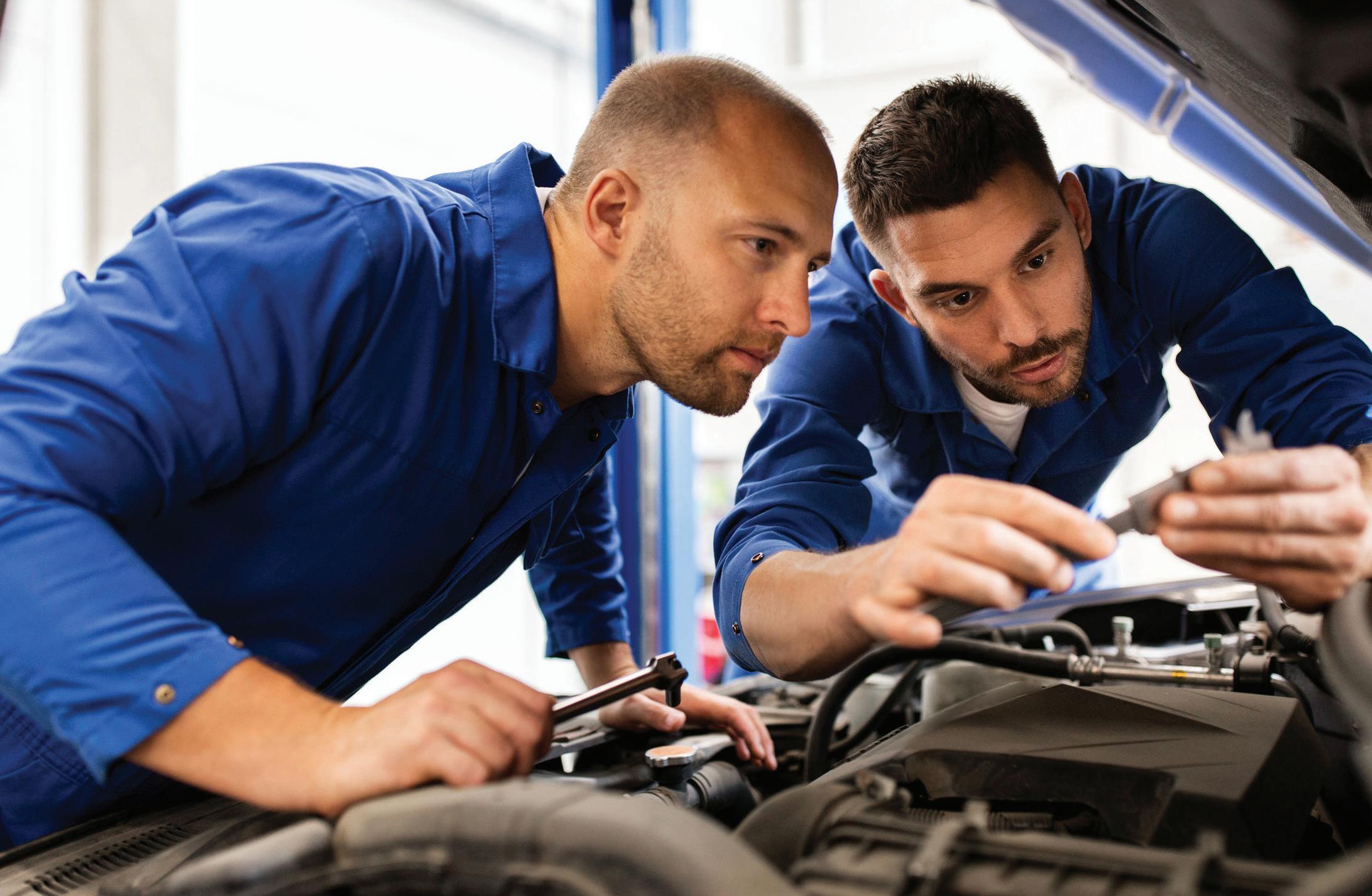
OurAuto Diagnostic Tool

OEM level access to module programming, resets, relearn, key programming and standard diagnostic functions.
Covering a large range of vehicles worldwide, with capacity to perform vehicle health checks on all systems on late model vehicles, checking all computers on the vehicle.
Alarms can be set for range sensor problems, quick resets of fault codes, along with automatic vehicle model detection on late model vehicles (mostly European).
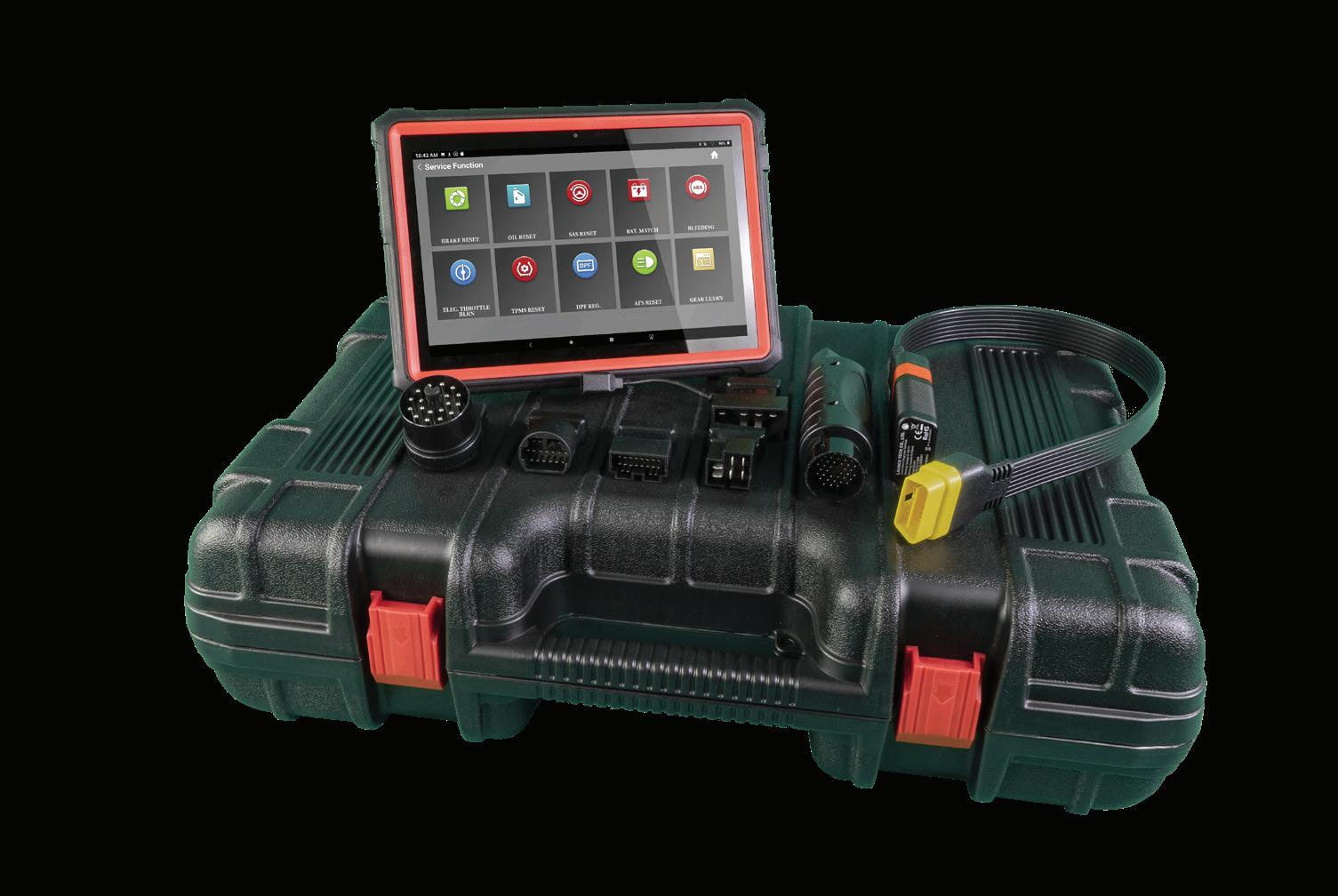
Dynamic health reports can be generated with the ability to email reports to customers.
The Diagnostic Tool has regular software updates and is available on a convenient monthly subscription plan.
Bright spark
SPARKS Auto Electrical recently celebrated 50 years as a Victorian Automotive Chamber of Commerce (VACC) member-business and VACC CEO, Geoff Gwilym met with owner Gary Marrocco onsite to mark the occasion.
Gary’s father, Luigi and his uncle, Joe, established Sparks Auto Electrical in 1968. The brothers emigrated from Italy and quickly set up shop in what would have been an industrious time for the automotive industry. A dynamic business-minded duo, Joe had training on the tools and taught Luigi the trade on-the-job. A successful venture from the start, in those early days, the business called 596 Sydney Road in Coburg home, before the brothers made the move to 1 Allenby Street in Coburg North where the business continues to operate today.
Luigi has three children, but it seems he only passed down the automotive gene to Gary. “My sisters are not into working on cars.” But, Gary started working at 14 years old, helping around the shop. “Even at this early age I was fascinated with cars and the way they worked. I wanted to be active in the industry and thought being an engineer would be a good start,” he said.
Gary attended St Joseph’s College in North Melbourne and, after finishing high school, started a diploma in electrical engineering at RMIT. However, despite his father’s encouragement, Gary’s time at RMIT was brief, as he was keen to get back in the shop. “I wanted to be hands on.” So, Gary left university to begin his apprenticeship and never looked back.
Gary undertook his automotive electrical training at the Batman Automotive College of TAFE. Coincidently, Geoff taught at the college in the early 90s, and they both fondly remember the teachers there throughout the years. Gary agreed that instructors including David Cox and George Pontikis really knew their trade. “Many of the skills I apply today came out of these great teachers.”
Fast forward a few decades and Luigi retired first from the business at 55 years old. Joe stayed on until he was 65, after which Gary took the reins.


When he first began his apprenticeship, could he have imagined one day calling the shots?
“Yes, that was always the plan. It was always going to stay in the family.”
Now a father himself, with a young daughter and a son at home, Gary is unsure whether he will pass Sparks Auto Electrical onto the third generation of Marroccos.
Gary sees automotive jobs in the future will be very different from what he has experienced in his own career. For example, with electric vehicles gaining popularity – the Federal Government aiming for 1.7 million Zero and Low Emission Vehicles on-road by 2030 – the tasks of an electric vehicle diagnostic technician would be “a lot cleaner work" compared to that of today’s technicians. The rise of the electric fleet is already changing the automotive industry landscape – with ground-breaking legislation to mandate providing motor vehicle service and repair information to Australian automotive repairers passing the Senate.
This world-leading legislation fulfills a government commitment for a mandatory scheme to compel car manufacturers to share technical service and repair information with all qualified Australian
repairers from 1 July 2022. Sparks Auto Electrical is counting down the days. Technical information is crucial when repairing vehicles today, and the new rules will even-up the playing field for independent repairers – a big win for business and for motorists.
On technical matters, Gary reveals Sparks Auto Electrical is already a VACC MotorTech subscriber and an avid user of Tech Online. In terms of VACC services, the Chamber’s technical offering tops the list and – while the team is happy – Gary insists the more technical information, the better...
With more than enough work and a loyal customer-base, Gary is content with current business operations, and, while he is not looking to expand the premises, he is open to employing an apprentice in the future. “I get a lot of phone calls (from young people looking to learn the trade).”
With progress being made at government levels and business full steam ahead on the workshop floor, Gary and the team have positioned Sparks Auto Electrical for many more successful years ahead
VACC MotorTech is a technical solution that combines VACC’s extensive online and physical repair, service and diagnostic resources with the global might of Haynes. For more information, call 03 9829 1268 or visit motortech.com.au
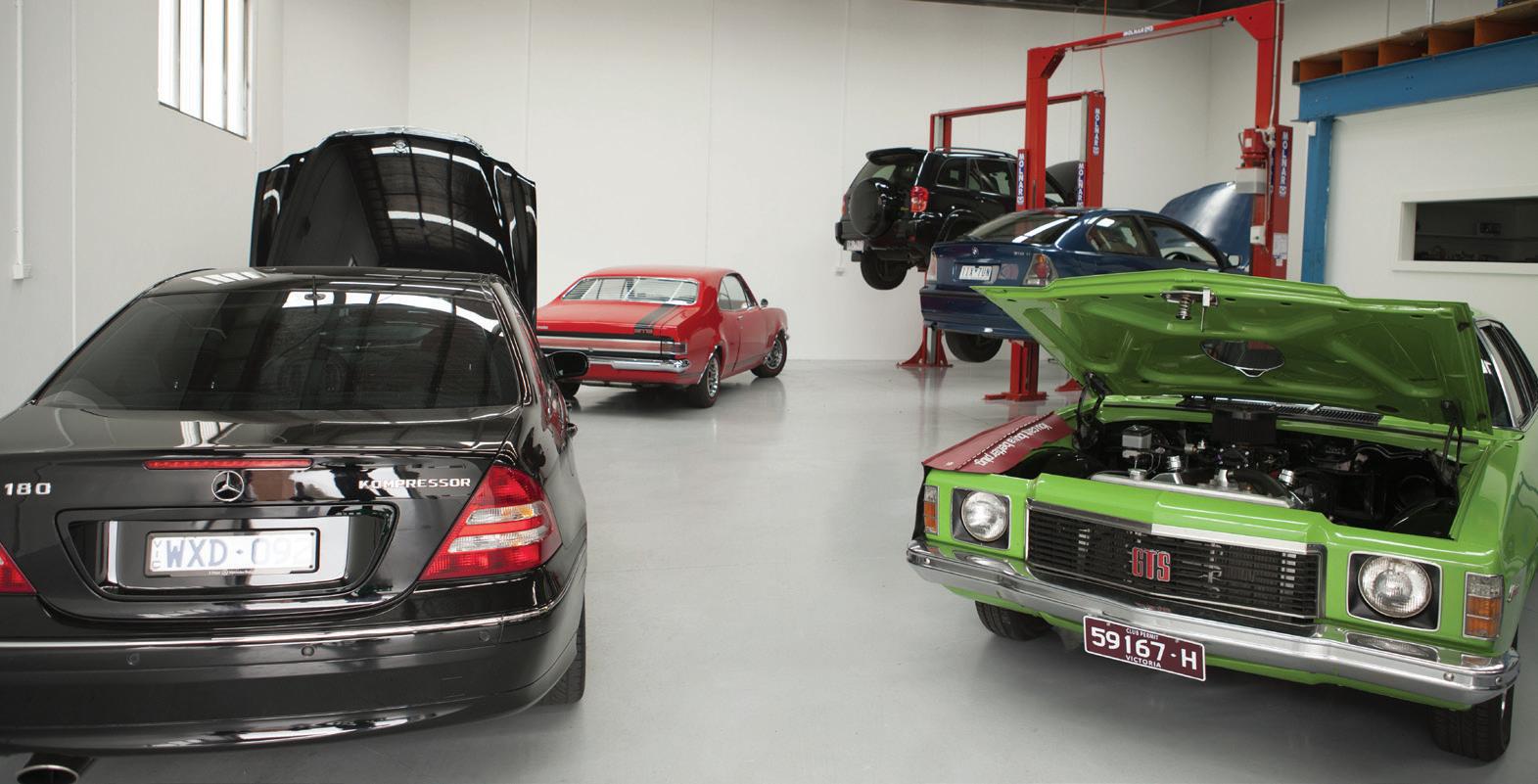
Gary Marrocco, his father Luigi and uncle Joe were presented with their 50-year membership certificate (above). The team has built a loyal customer base which keeps business booming (left and below)
Cool Cars with Dermott hits the road to promote auto careers
VICTORIAN Automotive Chamber of Commerce (VACC) member-businesses will star on the small screen this year with Cool Cars with Dermott, a brand-new television show starring Dermott Brereton and Elise Elliott. Both self-confessed rev heads, the duo will visit eight VACC and Tasmanian Automotive Chamber of Commerce (TACC) member-businesses across Victoria and Tasmania, sitting down with business owners and their apprentices to talk all things automotive, with a particular focus on skills and career pathways.
Eight businesses will be selected from different sectors such as mechanical, tyres, heavy vehicles, motorcycles, restoration, windscreens, body repair and towing to appear on the show. The Chamber has sent a call-out to its membership base, encouraging businesses currently hosting

ADVERTORIAL
an apprentice – and keen to show off their workshop on national TV – to register their interest to appear on the show.
VACC and TACC member-businesses can register their interest via VACC Automotive Apprenticeships. Call 03 9829 1130 or email jmokos@vacc.com.au. Help combat the automotive industry’s national skills shortage and spread the word about the exciting career opportunities within the sector!
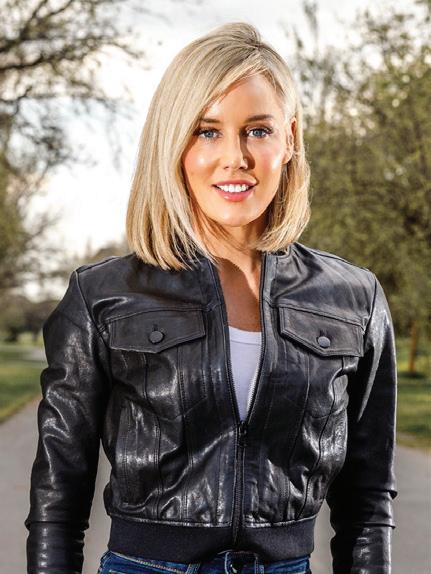
With agency focussed sales on the rise, dealers reminded
Words: Pitcher Partners
AS the auto industry begins the move to an agency-focussed sales model, leading auto business advisor Steven Bragg proposes dealers prioritise selling cars to drive revenue while not being overly distracted by pursuing litigation, which is vital to the future of the industry. By focussing on their own business’s financial wellbeing, the dealers are better equipped to support the industry.
Mr Bragg is the Motor Services industry lead at Pitcher Partners Sydney. He suggests that as the OEMs continue to increasingly take over significant elements of dealer revenue channels and profit centres, they should not be surprised to see their dealers move to importing cars from sources other than the OEMs themselves, including parallel importation.
Parallel imports are new or nearly new cars sourced from other right-hand drive markets where those manufacturers and distributors carrying excess stock in those markets export the vehicles to other right-hand drive markets. While parallel imports are largely limited (and in some cases banned) in Australia, if dealers were able to get Canberra to free the grip foreign OEMs have over the import trade, it could place dealers and distributors as direct competitors with the OEMs. “This looks to be one of the unintended consequences the OEMs face by pushing
to hold focus
further and further into the profit centres of the dealers while expecting increasing investments in representation,” Mr Bragg said. This commentary was in response to last week’s article in GoAutoNews Premium which reported that court papers indicated that Mercedes-Benz Australia (MBA) was acting under orders from head office Stuttgart to get the agency sales model in place in Australia and that it was going to adopt the model with or without the agreement of dealers.
The article said that discussions with dealers about the agency model, and suggestions that MBA would listen to their concerns, were just window dressing.
Most Mercedes-Benz dealers in Australia are pursuing MBA in the Federal Court to recover $650 million which they claim is the combined value of their businesses which they say they have effectively been forced to transfer to Mercedes-Benz Australia under their agency sales model agreements.
Mr Bragg said that the position in which Mercedes-Benz dealers in Australia find themselves “is really just a reflection of the position all dealers are going to find themselves in as the world gears up for EVs.
“Dealers deserve their goodwill for building the businesses and basically being asked to hand their customer base over to the OEM. But the problem is occurring at a time
when the OEM financial commitment is fully geared to developing EVs and associated infrastructure, not tidying up the past.
“This will play out with various OEMs, in multiple countries, for years to come. The dealers only bargaining chip is the customer through past service activities or by geographical positioning.
“My concern is that dealers will be so focussed on fighting city hall, they will not focus on their relativity going forward.
“Selling cars to their customers is still the main game and the dealer is now firmly in competition with the OEMs heading into agency.
“Parallel Imports, once the natural enemy of the new car dealer, should now be the preferred partner. Dealers sell cars to their customers, the agency removes that core premise, that’s why they become dealers not agents.
“Dealers can obviously act as agents if that works for them financially, but the main business must remain the dealership business. Giving customers access to various high quality, new or near new imports keeps them delivering for their customers.
“It will also keep the dealer in the ICE end of the business much longer than the OEMs who globally are legislated towards EVs.
“I think the biggest risk dealers face is distraction. Whilst they focus on agency-based litigation, they may potentially take their eye off the prize, parallel imports,” Mr Bragg said.
VACC Technical has changed
VACC Technical Services has launched into a new era of product offerings that will change the automotive technical information game in Australia.
VACC has signed a multi-year deal with the famous British-based Haynes Publishing Group, bringing to market a suite of products, unsurpassed in Australia, under the banner of VACC MotorTech.
VACC MotorTech brings together VACC’s proven Tech Online, Times Guide, Tech Estimate, Tech Advisory Service and Tech Talk products with the might of Haynes’ international know-how, to provide an enormous (and evergrowing) amount of technical service and repair information to subscribers. Available now for subscription are four ‘solutions’: Maintenance, Service & Repair, Diagnostics and Commercials. These new products are positioned at an unbeatable price and VACC members receive generous discounts of up to 50 percent. Haynes is best known in Australia for its Haynes manuals that have been in print since 1965 and have sold over 200 million copies worldwide. However, they
also provide automotive service, repair and diagnostic information via different online products, designed for automotive professionals under the HaynesPro brand.
Until the agreement with VACC, HaynesPro products have not been available in the Australian market in such affordable and convenient packages.
The HaynesPro products include:
• HaynesPro Manuals AllAccess Cars allows access to all Haynes manuals online, providing step-by-step repair and service information, along with extra details not published in the hard copy versions. The Haynes OnDemand video tutorials – available for many of the most popular models – are the ultimate aid to getting vehicles correctly serviced and repaired.
• HaynesPro WorkshopData Tech contains extensive maintenance information like repair times, timing belt
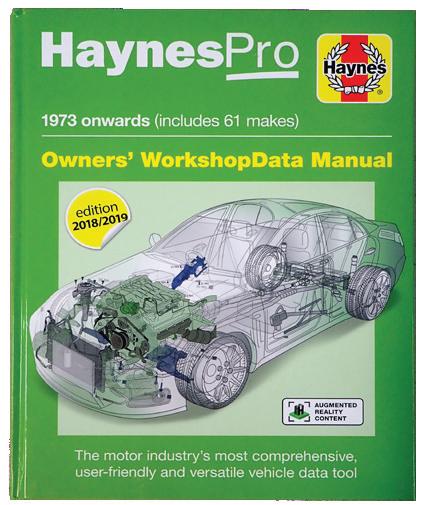
and chain replacement procedures, capacities, wheel alignment, torque specification and over 100,000 high-quality technical drawings.
• HaynesPro WorkshopData Electronics and Smart includes the VESA guided diagnostics system, wiring diagrams for most vehicle systems, fuse and relay locations, earth point and control unit locations, TSBs and known fixes.
• HaynesPro WorkshopData Truck includes WorkshopData Tech, WorkshopData Electronics and WorkshopData Smart. It is the most effective application from fault to fix.
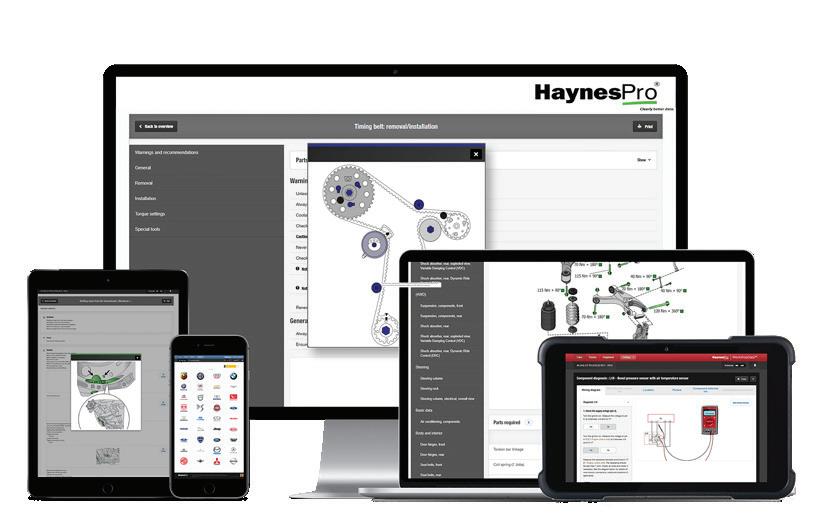
The agreement between VACC and Haynes provides automotive business owners new options and easy access to repair information and vehicle repair times not available previously, in bundles to suit every business’s needs.
Visit: motortech.com.au
Long-awaited reform edges closer
Words: VACC Industry Policy Advisor, John Khoury
THE implementation of the highly anticipated Competition and Consumer Amendment (Motor Vehicle Service and Repair Information Sharing Scheme) Act 2021 (the Act) is gaining momentum as vehicle manufacturers actively develop their information-sharing platforms to comply with the legislative obligations. From 1 July 2022, all service and repair information including diagnostic and reprogramming procedures provided by a vehicle manufacturer to an affiliated dealership or authorised repairer network must be made available to independent repairers and registered training organisations on fair and reasonable terms. Information relating to vehicle safety and security is restricted to persons who can satisfy specified criteria. There are penalties of up to $10 million for a breach of the provisions.
The Act only covers passenger and light commercial vehicles manufactured after 1 January 2002, although certain right to repair advocates are pushing for the inclusion of farm machinery.
Aimed at promoting competition, and establishing a fair and level playing field, this world-leading legislative framework provides small automotive business owners surety in an era of substantial high-tech advancements such as electric, connected, and autonomous vehicles.
The safety of motorists and the wider community is paramount, and this legislation also ensures people's pride and joy will be maintained and repaired in accordance with manufacturer specifications by the repairer of their choice.
In other major developments, the Australian Automotive Service and Repair Authority (AASRA), was established in late 2021 and has formally been granted the role of Scheme Advisor as outlined in section 57FA of the Act. AASRA is a not-for-profit industry body consisting of representatives from the Australian Automotive Aftermarket Association, the Australian Automotive Dealer Association, the Federal Chamber of Automotive Industries, and VACC’s national body, the Motor Trades Association of Australia. AASRA’s main functions will be to oversee and ensure the operational functions of
the legislation, including facilitating dispute resolution and periodically reporting to the relevant minister. The board is working on a major project in collaboration with the National Automotive Service Task Force (NASTF) that will ensure technicians are vetted and certified as vehicle security professionals in line with fit and proper person requirements. This will allow technicians to gain access to key codes and reprogramming information.
Technicians requiring access to safety information relating to hydrogen, high voltage and electric propulsion systems will need to demonstrate they have completed appropriate training such as safely depowering, isolating and re-intialising a high voltage battery. This outcome would not have been possible without the advocacy efforts of industry stakeholders and workshop owners, many of whom have given up their time to ensure a brighter future exists for future generations of automotive technicians. VACC once again thanks the Morrison Government, and in particular the Assistant Treasurer and Housing Minister, the Hon. Michael Sukkar MP for seeing this legislation through.
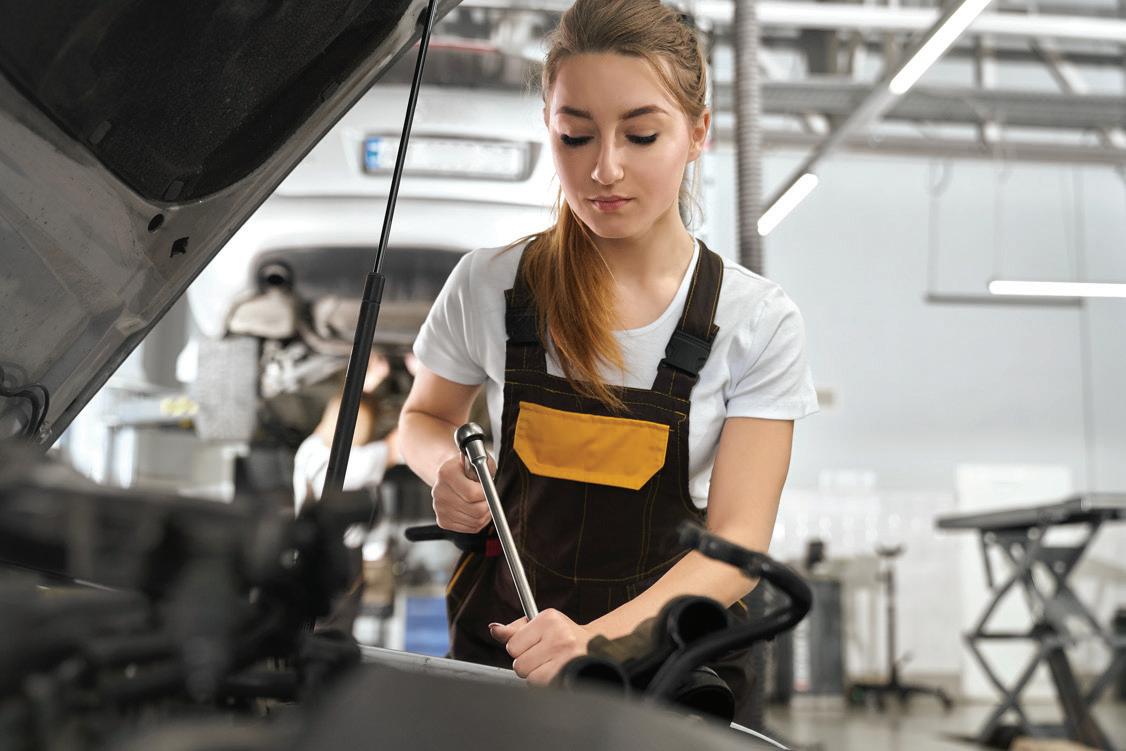
Whether you re star ting, running or growing your business, CommBank, proud Alliance Par tner of VACC can help you do business your way
D e d i c a
To help you take your business to the next level, VACC members can benefit from direct access to a dedicated CommBank Relationship Manager and team of banking specialists They ’ll work with you through every stage of your business life cycle You’ll also receive 24/7 Australian based phone suppor t for all your business banking needs
B u s i n e s s p
VACC members may be eligible to access the latest innovative business banking products and solutions with preferential pricing applied, making it easier for you to do business These include:
No merchant joining fee
Same day se�lement every day of the year^
Daily IQ - free business insight s tool with CommBiz and NetBank
Business Loans and Asset Finance
Overdra� Facilities and Bank Guarantees
Free business financial health checks
To find out how CommBank can help you do business your way, contact VACC on 03 9829 1152 or email marketing@vacc com au and they’ll put you in touch with a CommBank Relationship Manager.


Facilitators
•
•
•
•


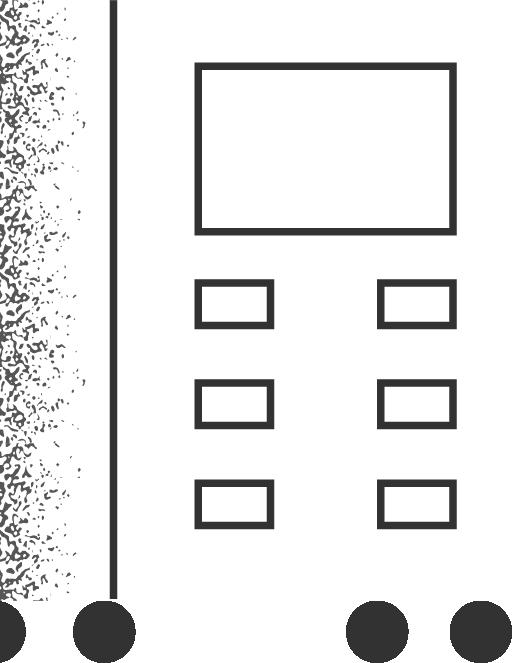
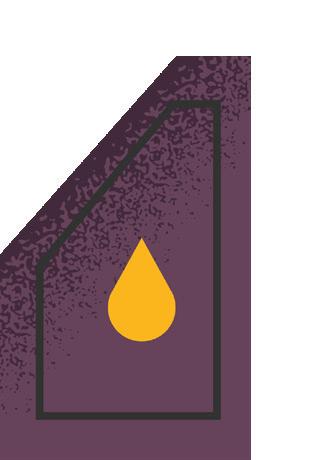
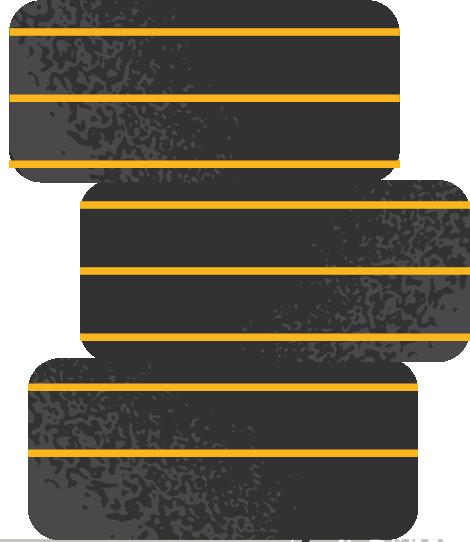

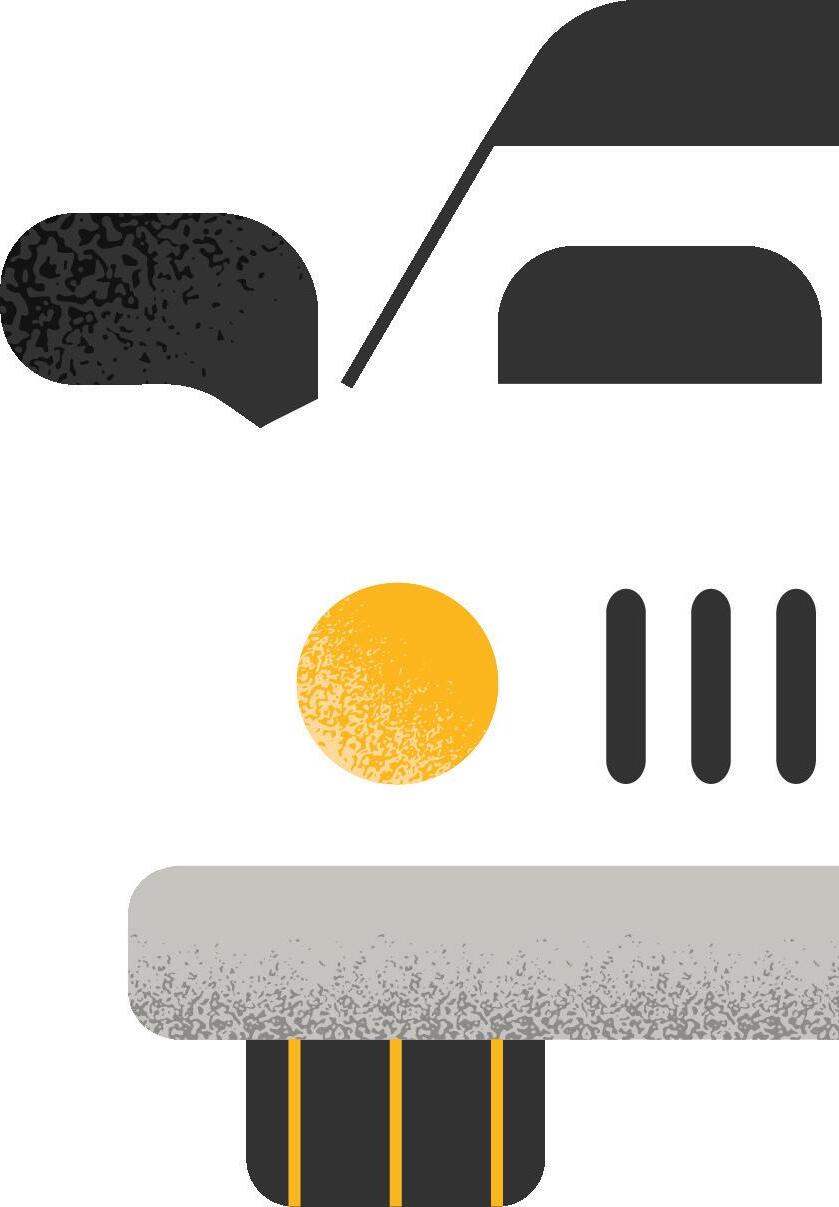
Toyota Australia engineers based in Victoria played a crucial role in the development of the new LandCruiser 300 series
THE publication of automotive ‘spy pics’ in print and online by photographers such as Hans Lehmann, Bernd Rauh, Jim Dunne, and Andreas Mau has made generations of motoring enthusiasts familiar with the idea of camouflaged mules undergoing hot-weather testing in Death Valley, or cold weather testing in some frigid Scandinavian outpost.
But Victoria’s role as vital automotive development testing ground for one of the world’s biggest car makers is less well known, as is the ongoing role of Australian automotive engineers in the development of the iconic Toyota LandCruiser. The arrival of the all-new LandCruiser 300 Series was one of the most widely anticipated new model launches of 2021, with legions of fans still keen to get behind the wheel of the supply-interrupted new model to experience the advances over its long-serving and highly regarded predecessor, the 200 Series. Despite looking like an evolution of the
200 Series, Toyota says the 300 Series is an all-new from the ground up model and sets new benchmarks for the nameplate in areas including performance, fuel efficiency, and the all-important offroad ability. And it’s in the dust, heat, mud, thump, and grind of off-road testing that Australia – and more specifically Toyota Motor Corporation Australia’s (TMCA) Australian development engineering and technical staff – have played a key role in the development of this new global model.
Australasian Automotive spoke with Manager of Research, Evaluation and Training within TMCA’s Vehicle Evaluation Group, Ray Munday, and his engineering colleague Kirstie Beugger from the Advanced Systems Development team, both of whom played significant roles in the development of the new Cruiser. The pair are part of TMCA’s 50-strong engineering and technical staff, based at the Toyota Centre of Excellence, on the site of the company’s former manufacturing plant in Altona.
While the LandCruiser 300 is still new news for Australian consumers, for Ray and Kirstie and the rest of the development team at TMCA, the 300 Series has dominated their working lives since as far back as 2015.
“In terms of this vehicle, we were involved all the way through the (development) process. The first prototypes arrived here in 2015 and we’ve had a vehicle here pretty much the whole time up until the launch,” said Ray.
He explains the 300 Series development cycle took seven years, and Australia played a crucial role in developing the vehicle’s sophisticated electronic off-road control system, dubbed Multi-Terrain Select (MTS), as well as its e-KDSS electronic stabiliser bar control system, and its all-terrain tyres.
“Our contribution started all the way back with the early target setting, to help define the basic scope (including) what kind of platform it was even going to be, all the way through to detailed development
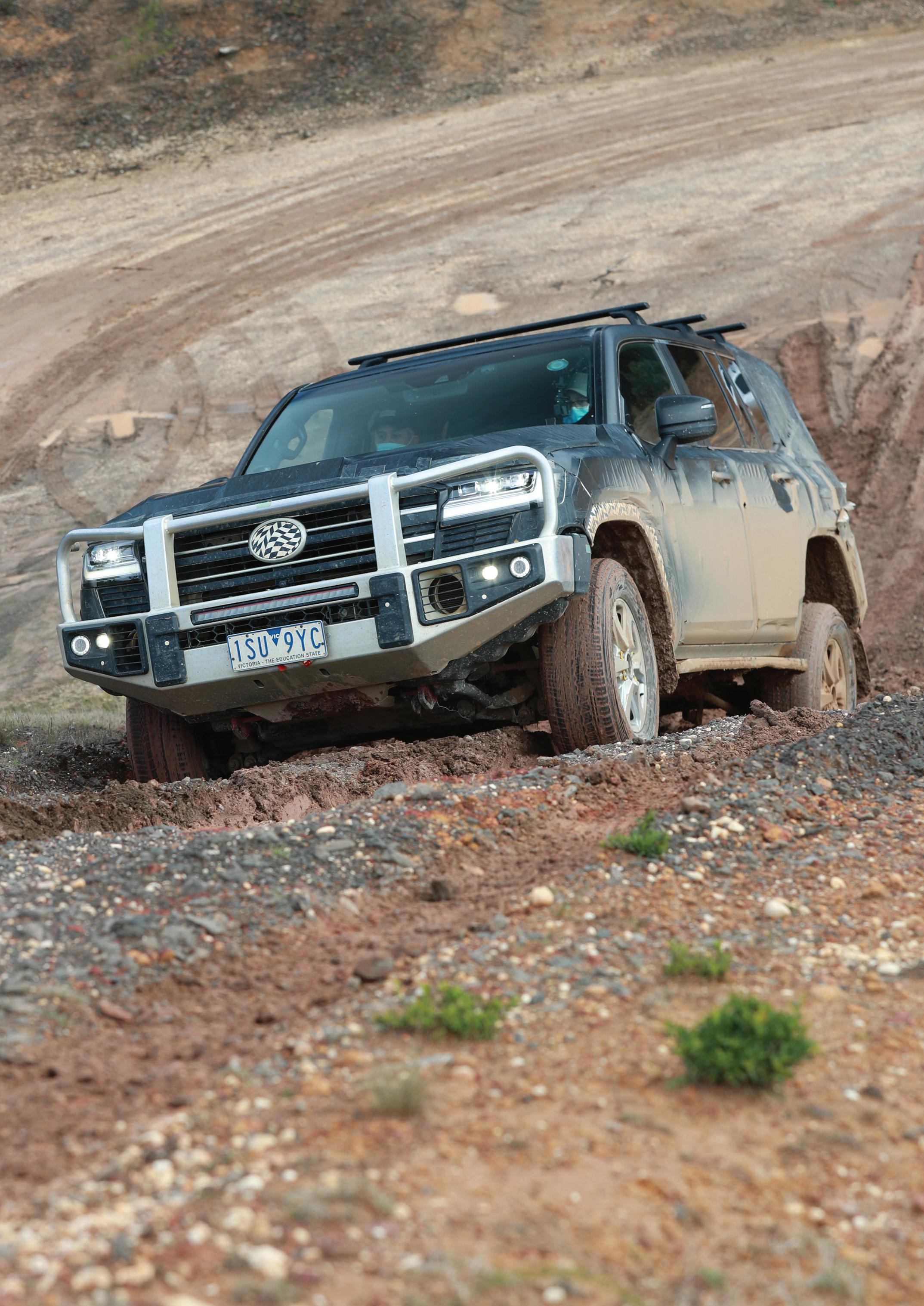



of control systems, and then through to the final confirmation of the total vehicle package. And it’s ongoing now into our production vehicles, to check that they meet the (final) prototype spec,” he said.
“In total, we had more than five prototype vehicles going all the way back to 2015. These started with vehicles that were technology evaluation vehicles and then, as the cycle went on, they became more and more the full platform, and then onto the full vehicle for final evaluation.”
Ray explains evaluation of LandCruiser models in Australia has been happening for several generations, but that TMCA’s technical involvement has grown significantly since the mid-2000s.
One of the big shifts driving this deeper integration was Toyota Australia’s designation in 2008 as a Centre of Excellence for four-wheel drive development within the Toyota world. This was due to the recognised skills of the local vehicle development team, and the fact Australia has around 80 percent of the world’s different onroad and off-road conditions.
“We’re the main centre outside of Japan for this role. Toyota Japan has amazing test courses and standards to develop cars to the very high quality they are, but when it comes to off-road vehicles it’s very difficult to replicate all the global conditions that customers drive on in a test course,” said Ray.
TMCA’s role in developing the new LandCruiser 300 Series began with its predecessor, the 200 Series, with Australian engineers providing valuable research, data, and customer feedback on how the product could be improved. Ray explains some of this came from Toyota’s 2014 Five Continents Drive, which saw Australia chosen as the first location for the gruelling 20,000-kilometre collaborative test event, involving local and Japanese engineers.
“The Five Continent Drive was an initiative by Toyota’s global president, Akio Toyoda, and it was for the engineers and technicians from Toyota Japan to understand the global conditions,” he said.
“It happened in 2014, just as LC300 development was about to begin, so it was perfect timing for the TMC members who came from Japan to not only drive (the LC200) around Australia, but also in conjunction with TMCA, interview a lot of customers and get a lot of feedback, which would have been very difficult to achieve otherwise.
“You can imagine for someone based in Toyota City Japan, that you don’t get those big outback roads, the long highways, you don’t get the same UV and temperature, so it was a chance for them to really experience, for days on end, what it’s like to be a LandCruiser driver in Australia.”
Kirstie picks up the story of how her Melbourne-based team helped shape the final tune of the LandCruiser 300’s advanced MTS system, which features six different modes for off-road terrain – five in high range and four in low range.
“We had a lot of input into the development of the MTS system, simply by virtue of the skill set that we have available here, and also the environments we have,” she said.
“The previous generation LC200 did have an MTS system but LandCruiser 300 is an entirely new vehicle, it’s got a new engine, transmission, brake actuator and so on, so all these new systems come with new processing power and new control systems, so all of the MTS from the ground up is completely new.”
Much of the development work was conducted in Victoria, thanks to the state’s wide variety of terrain and its ready access to the Australian Automotive Research Centre in Anglesea, explains Ray.
“We used (Anglesea) extensively for our evaluation. It’s a fantastic proving ground to do off-road evaluation; it’s got real world courses and a range of off-road conditions, so we used that, and we used a lot of the natural sites that also exist in Victoria. Within Victoria we have the High Country, the Toolangi Forest, you’ve got lots of farms, you’ve got the deserts, like the Big Desert around Mildura, and we can go down to Portland for the sand. There’s a massive range of terrain just within Victoria, and then we also utilise other parts of Australia, such as the desert and tropics in the Northern Territory, and the sand of outback South Australia and New South Wales.”
It was this ready access to such a wide variety of different off-road locations, both in Victoria and beyond, that contributed to the final MTS system being a significant advance over the system fitted to the 200 Series.
“One of the great things we were able to contribute to the MTS system was to go around to all our different types of test sites and all our different types of terrain and measure the grip-slip relationship.
“The vehicle that we got out of the box was already great, having incorporated all of that research. The next step in our process
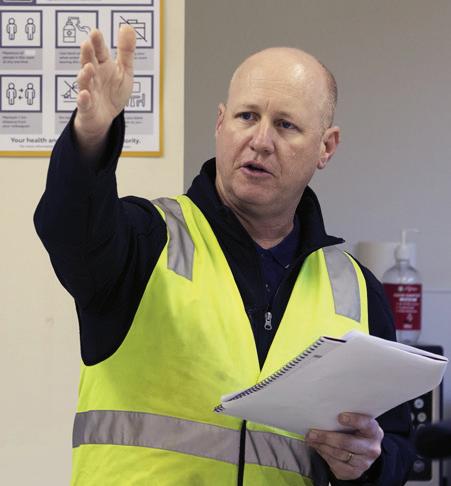
is when we get the prototypes here and we take them out to see if they meet or exceed the targets that we set for them, and then we start the process of tuning that system, making it smoother and more capable. That’s a closed-loop process, (so) we’re in direct communication with TMC during that process, so we’re out at our test site, we find a gap, we’re able to communicate that gap to them and then receive software back straight away that we can plug into the car and make sure that gap is filled,” said Kirstie. In addition to working on MTS, TMCA engineers were also involved in development of the 300 Series’ new electronic stabiliser bar control (e-KDSS), which is available on the new GR Sport variant, and developing its all-terrain tyres. The latter was described by Ray as “a huge challenge” given the competing priorities of efficiency, durability, plus on and off-road performance.
“This vehicle is also about high efficiency, so developing a high efficiency tyre that’s also good and durable off-road, that was a massive challenge, (and) required a lot of new technology from the tyre suppliers. Typical high-efficiency tyres are often very easily damaged off-road with existing technology, so there was a lot of iterations of new compounds, new tread designs, optimising those, and testing them in the real world. Australia was the place that we did all the off-road testing for those tyres. They are specifically developed tyres for the LC300 and with all the testing that was done, we feel that in the end they perform better than the previous model tyre.”
As to the question of whether TMCA will continue to have such deep integration into crucial TMC products in the years to come, given that Australia is no longer a vehicle manufacturing hub, Ray is in no doubt.
“We have a very strong technical skill base in Australia, we’ve got strong and passionate automotive people, we’ve got a fantastic environment, and we’ve had some people come across from manufacturing, retaining that skill. These core skills are already there and with all the new technologies coming out in the world now, and the need to make sure that they work properly in the real world, I don’t see that level of involvement reducing, in fact I see it increasing.”
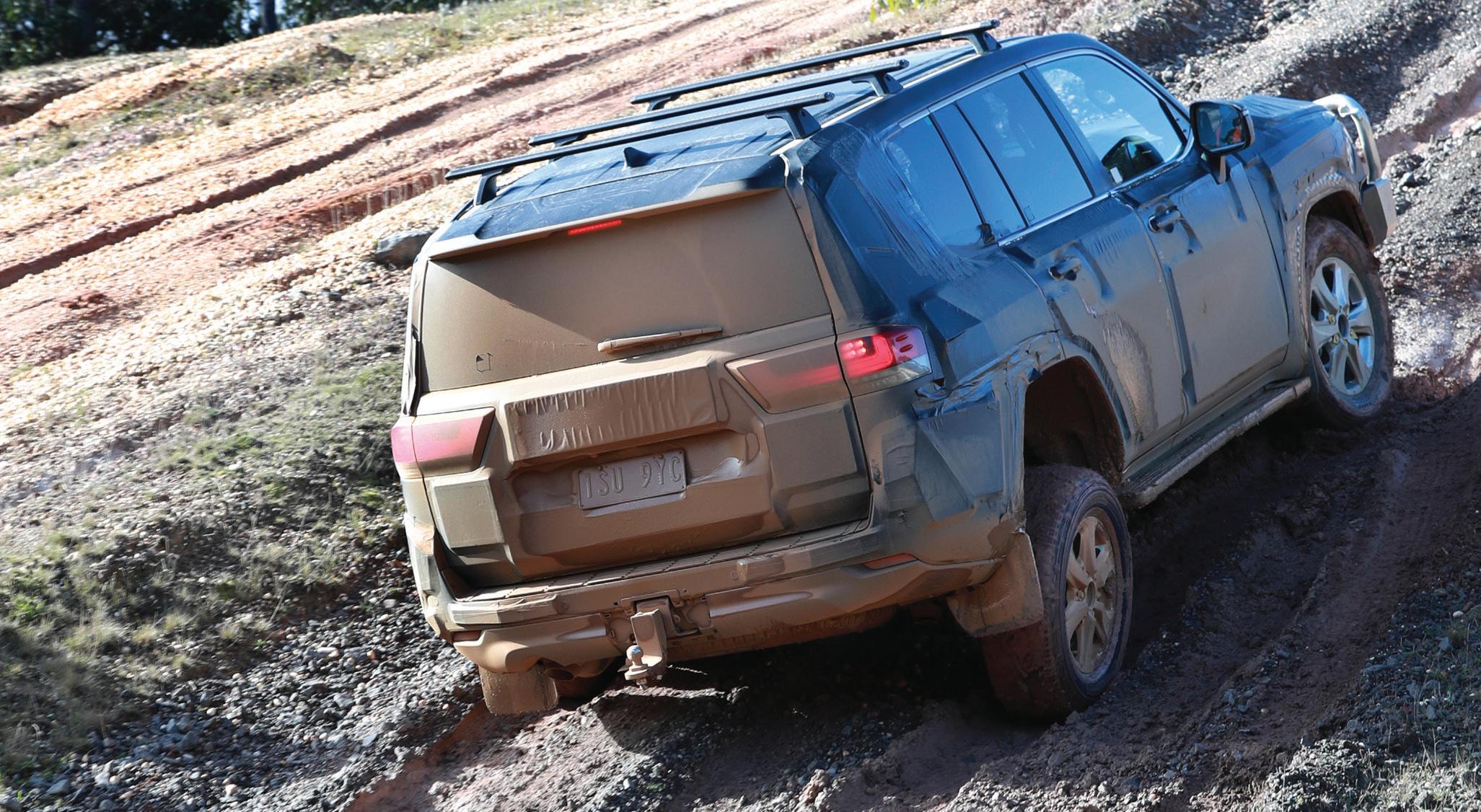
Victoria tops the list for trial terrains. Vehicle Evaluation Group's Ray Munday (inset)

STUART CHARITY
CEO AUSTRALIAN AUTOMOTIVE AFTERMARKET ASSOCIATION
Stuart Charity has served the automotive industry in a variety of roles and is currently CEO of the Australian Automotive Aftermarket Association (AAAA), which represents 4,100 member businesses across the entire automotive aftermarket, an industry which contributes $25 billion annually to the economy. Under Charity’s leadership, AAAA has championed many initiatives, services and regulatory reforms; improving the sustainability and growth of the industry. The association’s bi-annual AAA Expo is widely attended by professionals from all sectors of the aftermarket.
The relationship between VACC and AAAA is better today than it once was. What do you put that down to?
It is. I think that’s due to a number of factors. VACC CEO, Geoff Gwilym and I meet regularly and that’s good from a leadership perspective. Collectively, our organisations supported the industry through challenging COVID-19 times; there was quite a bit of coordination in regards to messaging, to ensure communication was consistent. Now, with mandatory data sharing and actively working on an industrybased solution, there’s a much closer collaboration too. There are a lot of shared challenges and opportunities. We will be much stronger if we work collectively.
How can VACC and AAAA best work together for the betterment of the industry in future?
We have some big challenges – and when I say ‘we’ I mean across the industry.
Just look at skills issues, that’s not just an aftermarket or dealer issue – it’s across the board. Same with technological challenges. I think the level of information sharing and coordination in the industry has to change, simply because of technology. The future of the industry is very different to the vehicles we have worked on in the past. I think we need a change in thinking because the industry is changing, whether we like it or not.
When mass car manufacturing closed, AAAA and its members went through a transition.
We represent parts, manufacturers, distributors, retailers and so on, and the simple fact is that car manufacturers make very few of the parts that go on the vehicle – build or genuine accessories.
So, many of our members are originally equipment suppliers at an OEM build level and aftermarket level. It was certainly an adjustment for our members to transition away from supplying the local building industry. Many members were direct OE suppliers for Ford, Toyota, Holden and Mitsubishi. We were advocating on behalf of our OEM members, when the car industry was still here, and we certainly did advocate for ongoing government support during the transition. When the car companies made their decision (to leave Australia), we had to support our OEM members to transition to pure aftermarket. We also changed our focus from an advocacy point of view. We always advocated on behalf of our OEM members, supporting the local car industry, but we always made the point that the government support never extended to the independent aftermarket from a parts and accessory point of view. There’s huge potential for growth in that sector, domestically and internationally. Tell us about your auto innovation centres.
There are two centres. The main centre is in Melbourne at the Mulgrave head office, and then we have a satellite centre in Adelaide. Essentially, it’s about providing all the vehicles state of the art equipment and engineering expertise to centres of excellence, to help reduce the time and cost of the product development process and to lift the bar in terms of how we develop and integrate test products for fitment for vehicles. I’ll give an example. We’ve got the LandCruiser 300 series that was released prior to Christmas. Our members need those vehicles in order to develop products for them. You do that with 3D
scanning (and so on). Then you need the vehicle itself to be able to do prototyping and product testing. In the past, we’d probably have 200 to 300 companies that would be wanting to develop products for the vehicle. Independently, they would all have to access a vehicle, scan it, (then there’s) product tests and validation processes. That’s a lot of inefficiencies. Now, (with the centres,) we got the first delivered product, our engineers scanned every bit of it for the data library, and then the vehicle was reassembled. (At the moment) we are (now) doing dynamic testing with it. (So) all those companies can buy near OE level scanned data packages (that suit their needs). Now we have put the vehicle together, we are doing a collaborative project with the majority of suspension suppliers (too), (for a) gross vehicle mass upgrade package which will be federally approved. With the centres, we have a lot of capability to collectively support our industry. An important part of AAAA’s activities is in the event space. COVID-19 must have knocked the organisation around. Yes, it did. I think we were all (wondering) with a fair degree of dread (about) what was going to happen (back in March 2020). From my point of view, because we have got so much industry at a service delivery level –independent repairers that are mostly small, family-owned affairs without a lot of cash reserves – I thought this isn’t going to go well if we are going to have to close down for six months or 12 months. By and large (though), automotive was categorised as an essential service and so, in the most part, able to stay open – albeit with restrictions. (However), from an AAAA perspective, a lot of what we do from a service delivery point of view is bring people together. We had a convention scheduled for June 2020 in Brisbane; we
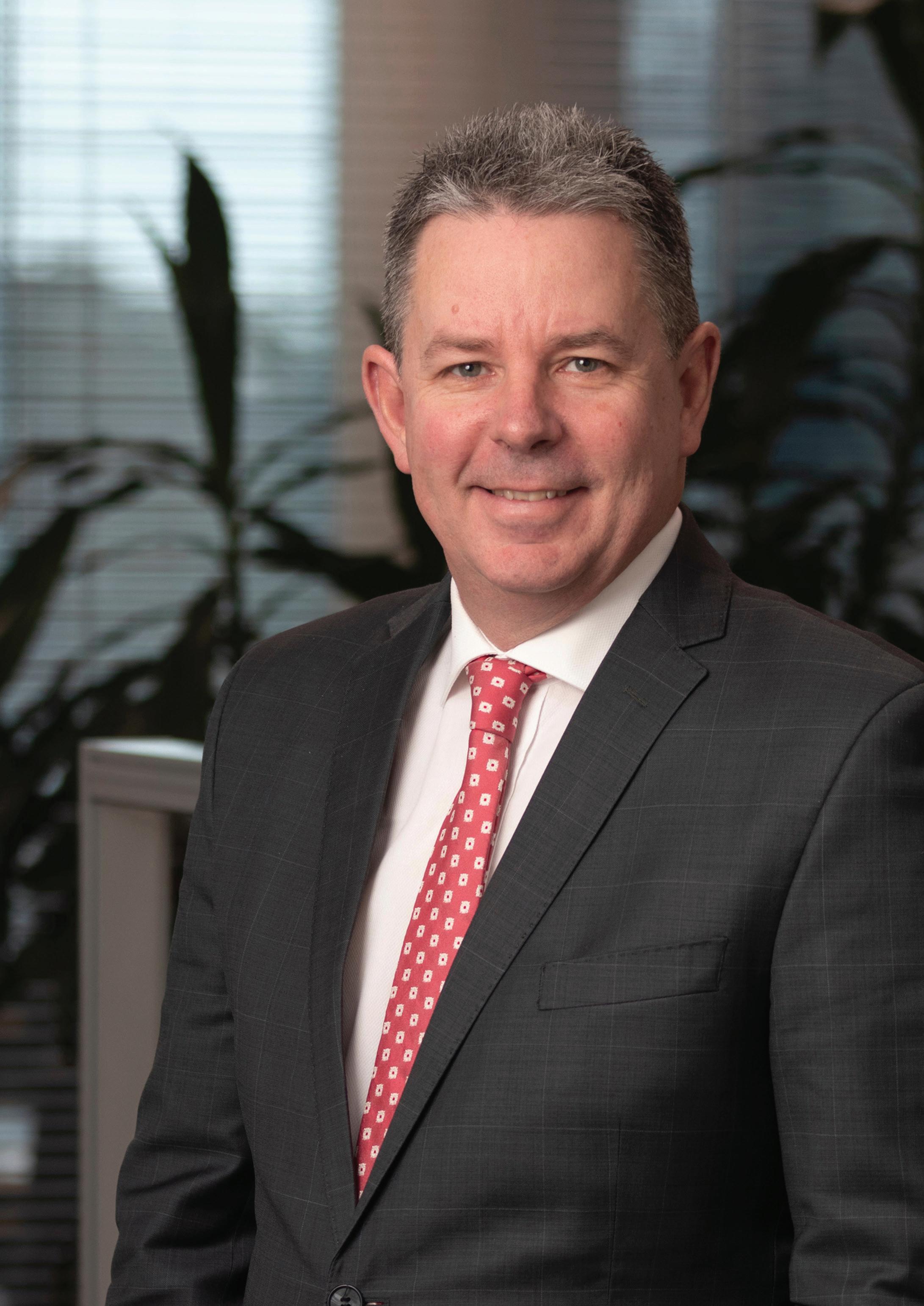
pushed it back to October before eventually having to cancel it. With our expo – 10,000 trade visitors, 300 exhibitors, a dinner for 900 people, a seminar program – it’s a massive event, and we just couldn’t do it. (So,) essentially we have had two years of not being able to run any major events. Fortunately, we had strong cash reserves, so we were able to ride out the storm and here we are on the other side. We have an amazing event (this month). Now, after two years, you are about to host the AAA Expo. How important is it for AAAA and the auto aftermarket?
It’s important to AAAA financially, but not just financially. I think reputationally, we have got – for the size of the market – one of the highest quality shows in the world. I travel to a lot of trade shows, and we’ve got a show we should be very proud of; it punches well above its weight. Trade shows are important in our industry, for a whole lot of reasons. We have such a diverse set of products across the industry that it’s impossible to get the trade to visit different manufacturers of different products. You physically can’t do it. (Instead) you need to bring all the products and the technical people to one place – and then bring the trade (to them). Trade shows are (also) important from an industry training, education and awareness point of view. Another thing – our industry loves and needs that networking opportunity. Many businesses, particularly at a retail level, are family-owned businesses. It can be quite isolating working on your own and only having your own staff to converse with (day-to-day). So, bringing people in and giving them the opportunity to share experiences is very important. It’s about bringing industry together every two years, under one roof. It’s an important show for the industry, not just AAAA. What’s new at this year’s expo. It will have all the major brands. We are 97 per cent sold out, which is pretty remarkable, given the last two years. I think that signals the importance our members and industry place in the show. We won’t have international pavilions this year. We’ve basically swapped them out for some new features. There is a Workshop of the Future pavilion, a dedicated space at the centre of the show. What we are doing here is creating a workshop environment. When we say ‘Workshop of the Future’, we’re not talking flying cars, we’re talking about what workshops need to do now to be able to prepare for what’s coming down the line. We’re looking at workshop management systems, customer experience, tooling and equipment – including programming. There will be a focus on electric and low emissions vehicles. So, what you need to set up an electric vehicle (EV) bay in your workshop in terms of equipment and training. Additionally, there will be
advanced driver-assistance systems and so on. (However), this isn’t just another pavilion filled with exhibitors and equipment, it’s going to be done in a very educational way. We aren’t pushing a particular product or service; we are trying to educate workshop owners on what’s coming and how to prepare for it. It’s all free of charge, everything at the show is free of charge for trade. We’ll have electric vehicles on the stand, and all the required equipment from a health and safety and standards perspective. We’ll be doing regular presentations over the course of three days, we’ll be bringing in (a variety of) presenters, and attendees can ask questions. It’s going to be a really popular feature and something that really makes a difference in this year’s show. The second new zone is (centred around) four-wheeldrive (FWD) innovation. So, we’re talking about the boom in the FWD sector, it’s about getting the best of the best in terms of FWD parts and accessory manufacturers – but with a trade focus. So, if you’re a workshop out there that’s been thinking about getting involved in either fitting or selling FWD parts, it’s an opportunity to talk to some of the manufacturers. We are going to be bringing in fleet buyers, through an alliance with the Fleet Managers Association, so we will have all the major fleet buyers coming through the show for our members. It really is about educating the industry on where the opportunities are in that growing FWD space, both at a recreational and consumer level, and at a fleet level. The fleet market in Australia is massive, over four million of the 20 million (vehicles) on Australian roads are owned and run by fleets, so there’s a real opportunity there. The other difference this year (and this change was based on past exhibitor feedback) is that we used to have a lot of seminars and other things in rooms away from the show floor. So, what we are doing this year is bringing a lot of activity to the show floor. We’ll have a dedicated stage and on the hour, there will be different activities – seminars, celebrity appearances, competitions and other demonstrations throughout the course of three days.
AAAA has worked hard lobbying government to bring about fair data sharing. As an aftermarket representative, why was that so important for your members?
The way vehicle technology is going, ultimately without full and fair access to repair and service information – and we are talking everything here, all the processes that are required to efficiently, safely and effectively repair and service a vehicle – without access, it was going to be death by a thousand cuts for the independent mechanical repair and service industry. With each new model year, there was more requirement for access to that information. We did a survey in 2016 that showed with one in 10 vehicles repairers were struggling to get access to information, and it was only going to get exponentially worse. (Without this agreement), independent repairers would have only been able to work on older vehicles and as those vehicles got retired from the fleet, the market would just have gotten narrower and narrower. AAAA could see that if something wasn’t done, it would ultimately spell the end of what we know as the independent mechanical repair industry. We’ve got a lot of linkages with international counterparts – so we knew exactly what was happening in Europe, in North America. So, we knew it was going to be a difficult path if we didn’t get (the agreement) in place. How many service and repair businesses does AAAA represent?
Directly, we’ve got about 3,000 independent repairer members. In terms of sites, we’ve got about 6,000 or 7,000. We predominantly have all the major chains. However, this (service and repair data) campaign wasn’t for our members only; it was for the entire industry. Our research shows there are about 26,000 independent repairer facilities out there, mobile and fixed sites. Every one of those is going to need access to information moving forward. Our supply base needs those businesses to be out there too.
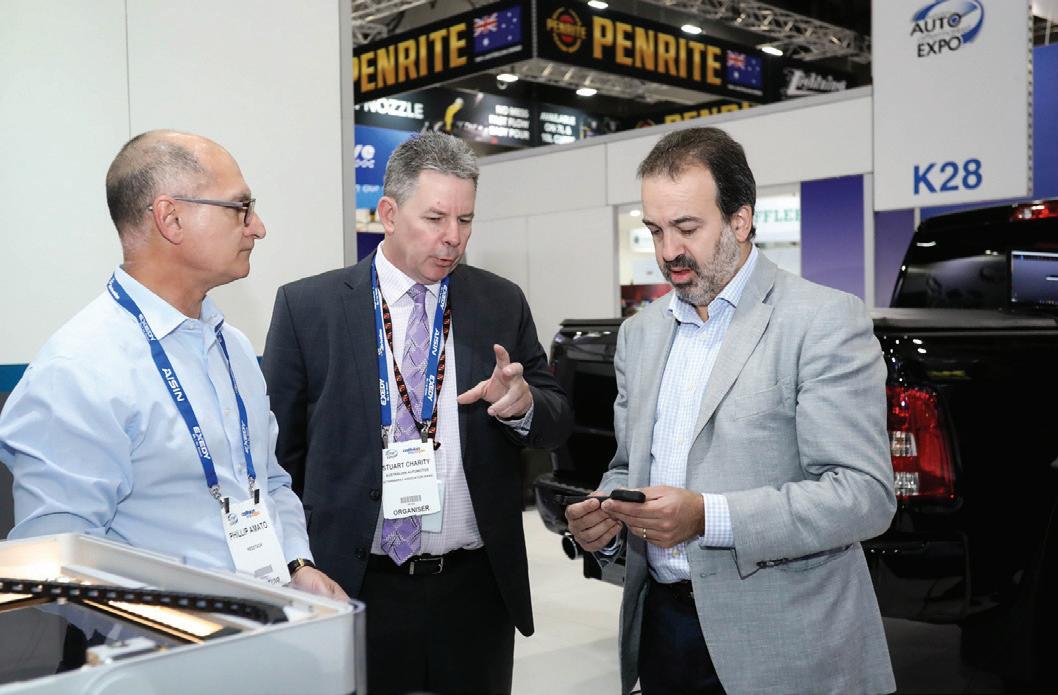
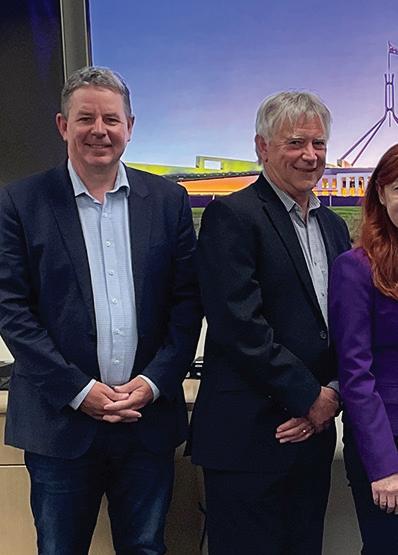
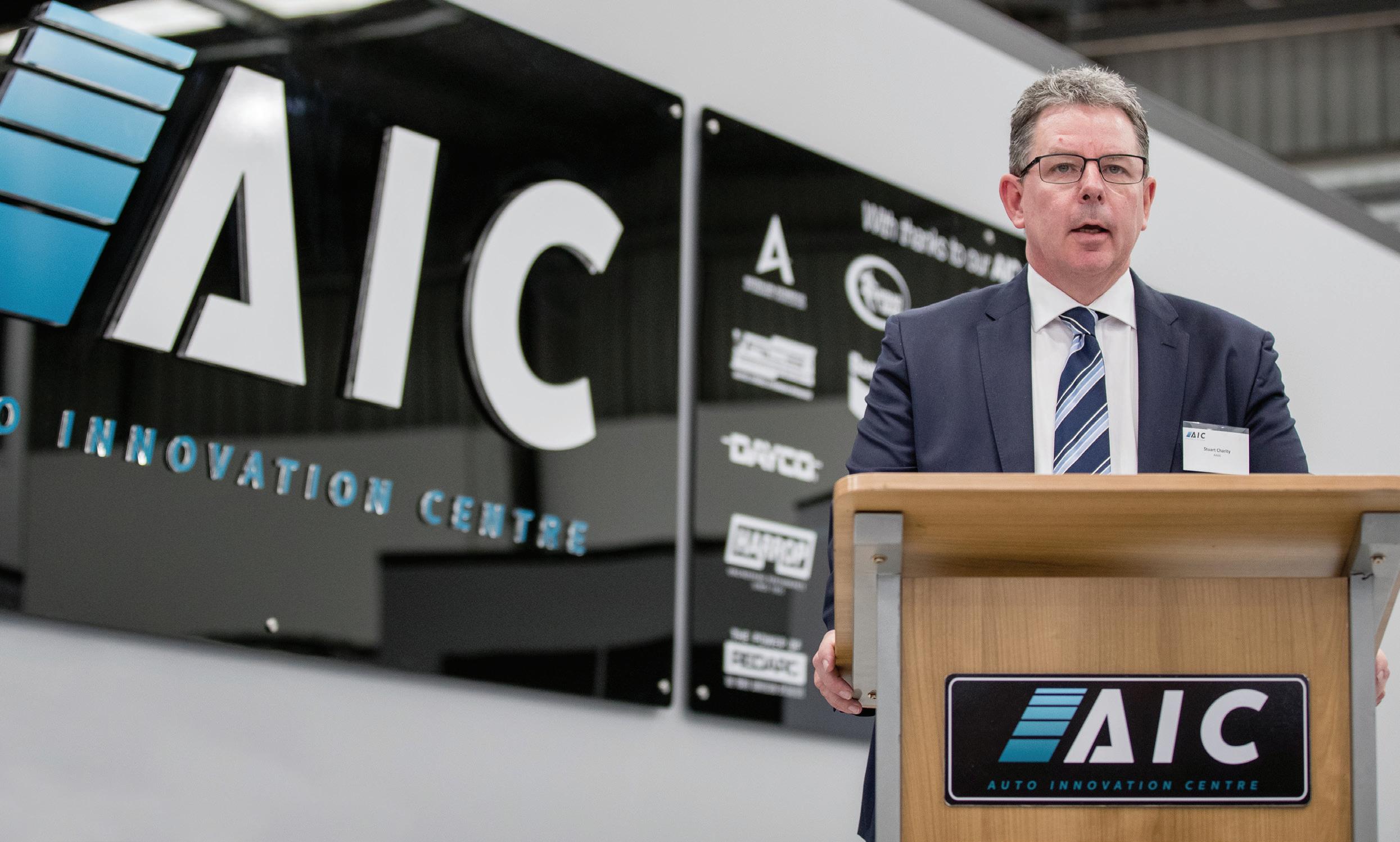
The Australian Auto Aftermarket Expo brings in trade, industry and political figures, including Martin Pakula MP; The AASRA board - Stuart Charity, FCAI Director Emerging Technologies Rob Langridge, AAAA Director Government Relations & Advocacy Lesley Yates, MTAA CEO Richard Dudley (on screen), AADA COO Brian Savage, and VACC Industry Policy Advisor John Khoury - missing are AADA CEO James Voortman and FCAI CE Tony Weber; Charity, Rex Patrick and Luke Trsukinger at the satellite Auto Innovation Centre launch in Adelaide
Tell us about the new Australian Automotive Service and Repair Authority (AASRA) and what it will mean for independent repairers.
AASRA is actually a company, another association. Its directors are representatives from the Federal Chamber of Automotive Industries, Australian Automotive Dealer Association, Motor Trades Association of Australia and AAAA. Under the legislation the government has drafted up, this organisation has just been conferred scheme advisor status. That’s bureaucratic-speak for a pretty powerful role for administrating schemes. So, AASRA will provide a portal for all independent repairers, and dealer technicians are covered under the legislation as well. There are certain requirements that need to be met to access the information. AASRA will provide that portal into each of the car company’s data-sharing platforms and in

particular, where there’s security-related information – so if there’s any coding that needs to be done on vehicles – we need to make sure it’s only shared with people who have authorisation. (Additionally) the government has built in a requirement in the legislation to ensure anyone who is working on high voltage vehicles has undertaken basic safety training, a 10-hour training course to be able to de-power, work on and re-initialise vehicles. So, there will be a pre-requirement for basic level training before you get access to the EV high-voltage information. If there is any missing information, so if a repairer contacts an OEM and something they believe should be shared is withheld, or they can’t find it, they can log a missing information report with AASRA – which has all the direct contacts needed to follow it up. (Based on) experience overseas, 90 per cent of these cases are misunderstandings. However, in

the case of a formal dispute, AASRA will run a dispute and mediation service and report to the Australian Competition and Consumer Commission accordingly if required. There is also a role for AASRA to report back to the minister of the day on operations and any improvements required. There is flexibility to be able to make changes to the rules of the scheme as we go, so we can adapt to new technology. In terms of the infrastructure to support the security and safety-related information, AASRA has formed a commercial relationship with an organisation called the National Automotive Service Task Force (NASTF). NASTF US has been running almost the exact same scheme, albeit without the legislation behind them, and its executive director is going to be the interim Executive Officer of NASTF Australia. At the moment AASRA is actively working with 37 car brands – representing 90 per cent of the new car sales in Australia – to effectively onboard them on the platform for a 1 July launch. Exciting times, it’s a complex process but AASRA will be the window into full dealer-level data sharing for all repair and service operators.
What’s the best life advice you have received?
Don’t let anyone tell you that something can’t be done. I think almost anything is possible if you’ve got the will to make it happen. Nothing happens without hard work; you’ve got to have determination and tenacity, and if you believe in something enough it will happen. I live my life by that, and I have applied that to the mandatory data-sharing project. When we initially launched it, people thought I was coming from Mars and to see it now only a few months away from being a reality, you pinch yourself.
Stuart Charity opening the Auto Innovation Centre in Victoria. Below, from left:

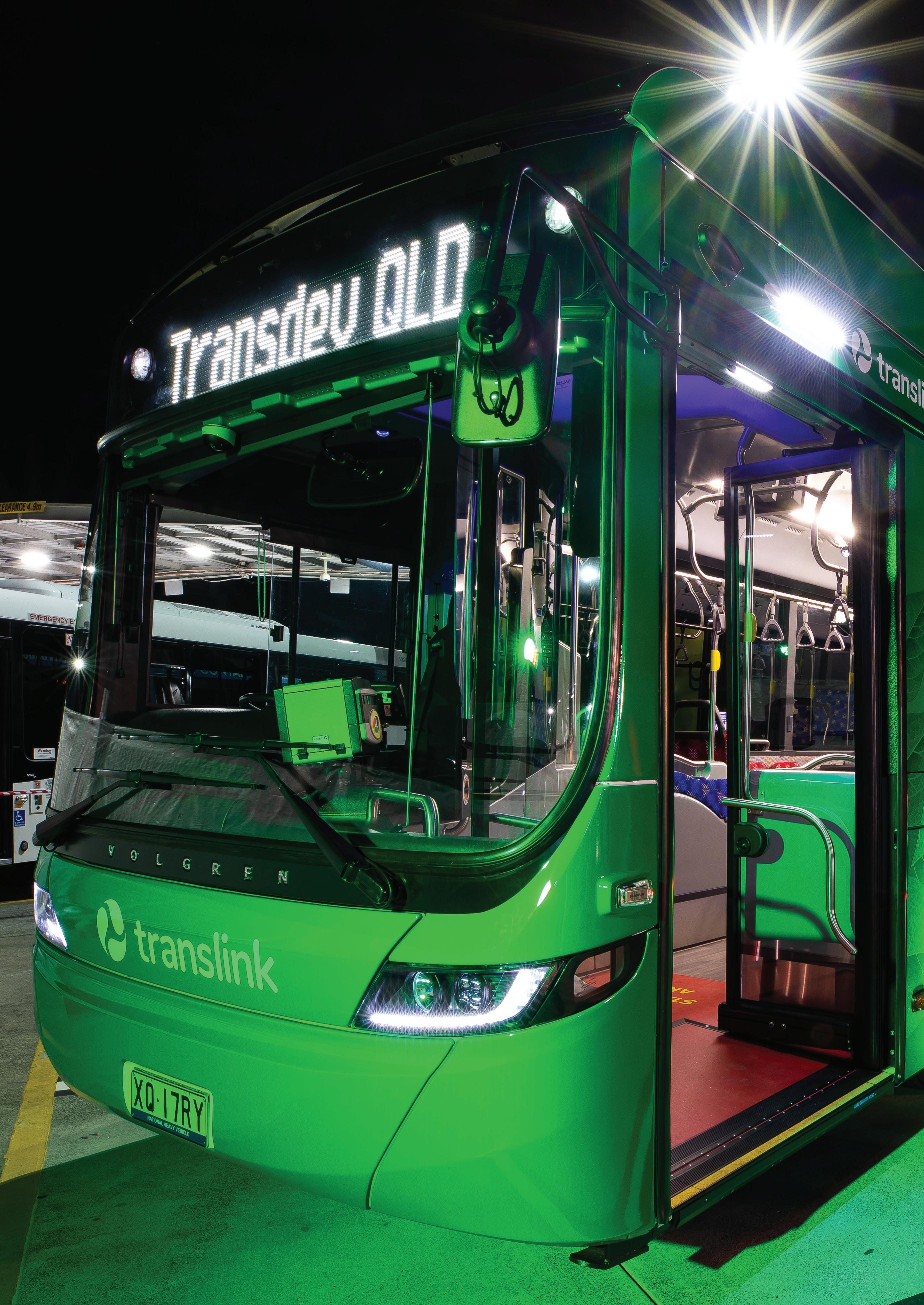
Building buses is not what it used to be. Neither is powering them.
WORDS Paul Tuzson
MANY consider the new Victorian distance tax on electric vehicles an outrage that will hinder the adoption of this important technology. On the other hand the government is doing other things to accelerate the adoption of emissions free transport. One example is the $2.3 billion contract awarded to national bus operator Kinetic last year to bring electric buses into service across the Metropolitan Bus Franchise. The contract runs until 2030 and will fund the introduction of hundreds of plugin battery and hybrid buses to routes currently served by diesel powered units. Thirty-six of these will be in service by 2025. Importantly, the bus bodies will be built locally by Volgren at its Dandenong South plant.
Other bus companies are also adopting electric buses and Melbourne operator Ventura is
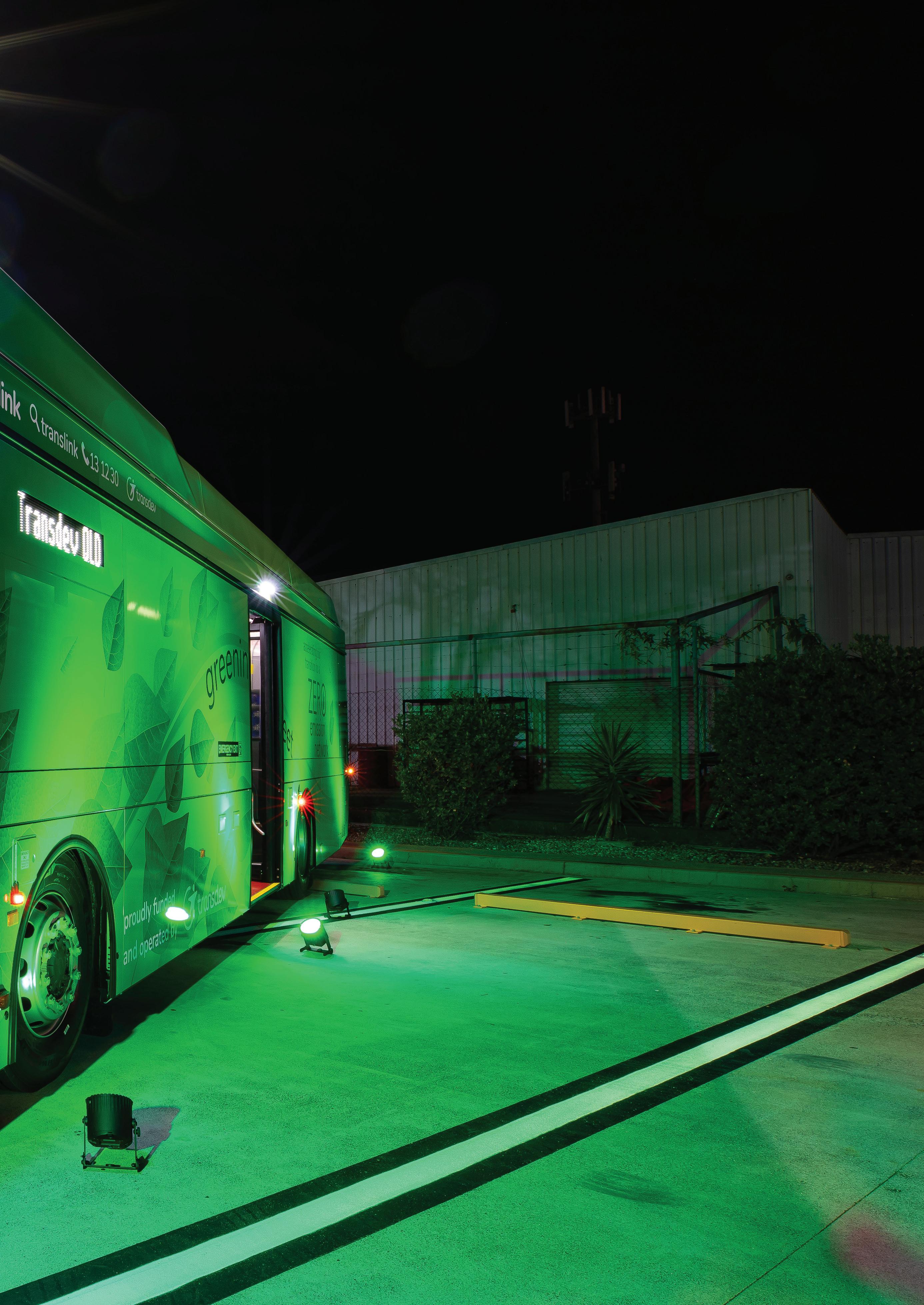
currently trialing a Volgren bodied battery electric bus out of its Ivanhoe depot. This, and other programmes around the country, all constitute the thin end of the wedge. What’s more, the opportunity for expansion in this transport industry segment is so great we’re going to be at the thin end of the wedge for years to come. Buses are subject to stresses similar to those in cars, only more so. Because they’re so long Z-axis bending, lateral bending and torsional twisting are all more pronounced than they are in cars. Monocoque construction isn’t an option for something as long as a bus with flat sides and a long roof line. This means a body built on a steel chassis is necessary, as with virtually all larger commercial vehicles. Volgren, as a bus body builder, works in partnership with the main global chassis OEMs. Volgren imports the chassis used in its electric buses. These are specialised units from BYD designed and built around electric hub motors and support components for them like inverters, controllers and batteries. The batteries in these buses are mounted on the roof, but more on batteries shortly.
Hub motors aren’t really suitable for cars because they contribute to unsprung weight, which is highly detrimental to handling. This is not such an issue in buses because they aren’t subjected to high speed cornering and other demands that require the nimble responses of a car. So, setting the electric motors in the wheels is an excellent choice for a bus. Doing so eliminates the need for mechanical transfer hardware like drive shafts and differentials resulting in less weight and reduced servicing requirements. Weight is an important consideration in any vehicle but particularly so in battery electric vehicles like these buses. Less weight means greater range from each charge. In turn, this means longer runs that can be a greater distance from charging stations at company depots. Given buses make regular stops at predicted locations, there are some quick charge options appearing in Europe that are of interest. At some stops, roof located arms (pantographs) are extended to couple with quick charge outlets that can push a significant charge into battery packs to extend range. The first of these flash charging pantographs
in Australia is being constructed right now as part of the $1.244 billion Brisbane Metro Project. Swiss company, HESS won the contract to deliver 60 biarticualted, 25-metre electric vehicles and work with charging partner Hitachi. HESS also offers a unique technology for bus construction called Co-Bolt. Volgren, who are responsible for two out of every three route bus bodies in Melbourne, has used this technology in the body construction since 1977. It’s a system of aluminium C-formed extrusions joined by cast corner pieces and clamping plates held in place with bolts. Importantly, welding is not required with the Co-Bolt system. Bolts may not seem like the ideal joiners for vehicles due to NVH concerns but the bolts in this system are fitted and held firmly in place using a two-part adhesive that prevents them from coming loose due to the rigours of operating stresses. Despite this, they are readily removable if necessary. No welds also means no cracks.
The exterior panels of buses built using the Co-Bolt system couple with the frame fairly simply. They are made to be easily removable in case of damage. Removing and replacing a plain side panel is said to take only a couple of minutes and hinged access panel replacement takes just five minutes according to HESS. The Co-Bolt system has been extensively tested and used to construct more than 20,000 bus bodies worldwide. As you’d expect, crash, roll-over and stress tests are among those that various authorities have imposed on the system. In fact, aluminium demonstrates very good energy absorption in crash tests and doesn’t suffer from corrosion like steel. Also, in keeping with environmental concerns, aluminium is completely recyclable. These days mention of anything battery electric brings to mind Li-ion batteries. Li-ion is a generic term covering batteries that use a number of different materials.
Volgren uses Lithium Iron Phosphate (LiFePO4 or abbreviated - LFP) types. These are becoming increasingly popular. LFP is a type of Li-ion battery but with its own particular chemistry.
Volgren makes buses for operators right around

In an LFP battery the positive electrode contains a thin layer of LiFePO4 deposited on aluminium foil. The negative electrode is made from graphite deposited on copper foil. The graphite is specifically engineered to receive lithium ions. These positive and negative plates are immersed in an organic solvent-based electrolyte that also contains a microporous sheet called a separator. The microstructure of the separator is such that it allows lithium ions to pass but blocks electrons. So, apart from the materials used, a LiFePO4 battery is broadly similar to any other battery. Charging current releases lithium ions from the LiFePO4 into the electrolyte where it passes through the separator and into the graphite layer of the negative electrode. The electrons in the charging current flow into the negative electrode where they combine with the lithium ions. This process removes electrons that were associated with the lithium in the positive plate.
The cell is now charged. In this condition the positive plate has become electronegative. That is, it attracts electrons but there are none to be had. They’re over in the graphite matrix at the negative electrode. As with any battery, when the positive and negative electrodes are connected via an external load, like a bus motor, the electrons flow back into the positive electrode. The lithium ions flow back to the positive plate through the electrolyte where they recombine with the electrons and iron phosphate to recreate LiFePO4 once again. This back and forth transfer of lithium ions gives rise to the term ‘rocking chair’ battery. The composition of the electrodes and electrolyte in Li-ion batteries don’t undergo chemical changes during charge and discharge in the same way they do
chemistries. This means it doesn’t support the sort of self-sustaining combustion we’ve seen in some vehicles when the battery packs are damaged. It’s true the electrolyte in an LFP cell can still burn, but reducing the likelihood of a vigorous fire that’s difficult to extinguish because it’s fed by internal oxygen is an excellent idea for a bus full of people. Last, LiFePO4 cells don’t contain cobalt or manganese, which is excellent for the third world labourers who have to mine these metals under back breaking conditions. The materials used in BYD LiFePO4 batteries are also highly and cleanly recyclable, another win for the environment. In most battery electric vehicles the battery forms part of the floor. However, no one wants to climb a staircase to get a seat on a bus so the lower the floor, the better. Placing the
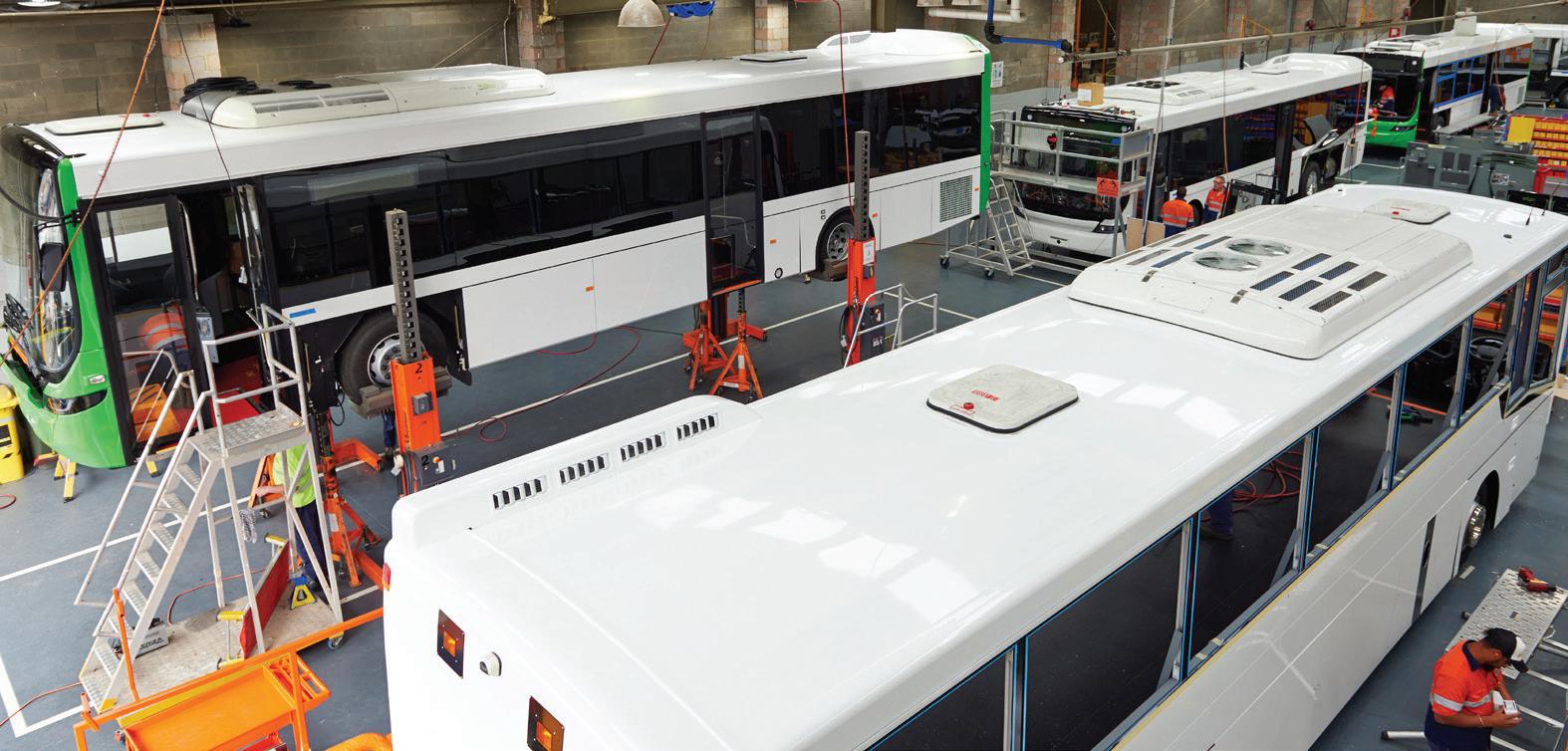
in, say, a lead/acid battery. This is one reason Li-ion batteries generally don’t have memory effects and why they have a longer service life than other types of cells. It’s important to note that the description above is highly simplified with many details omitted. There’s a great deal more going on in the electrolyte and at the separator. More important here than all the details of the processes at work in a lithium iron phosphate cell are the overall characteristics of LiFePO4 cells. First, they have a lower charge density than other types of Li-ion batteries. That means a vehicle equipped with them has a shorter range than one powered by more common Li-ion cells. So, why does BYD use them? Well, LiFePO4 cells can be charged about twice as many times as other Li-ion batteries. That’s obviously an advantage for a bus that’s likely to run down to minimum voltage or close to it every day. At the moment these buses have a range of up to 300km per charge. The oxygen in LiFePO4 is more tightly bound to the molecule than in other Li-ion

Ventura has been trialing a Volgren built battery electric bus out of its Ivanhoe depot (top). All sorts of buses are produced at the Dandenong South plant. Eventually most of them will be electric (above). Local production means local jobs. Local electric bus building is going to grow enormously over the coming years (below)

batteries on the roof of a bus helps keep the floor as low as possible. Now, it’s also important to keep the centre of gravity of a vehicle as low as possible for stability, yet putting a heavy bank of batteries on the roof contravenes this basic automotive design principle. Again, though, things are different with buses. They certainly go around corners and curves but at speeds and turn radii that create far less roll.
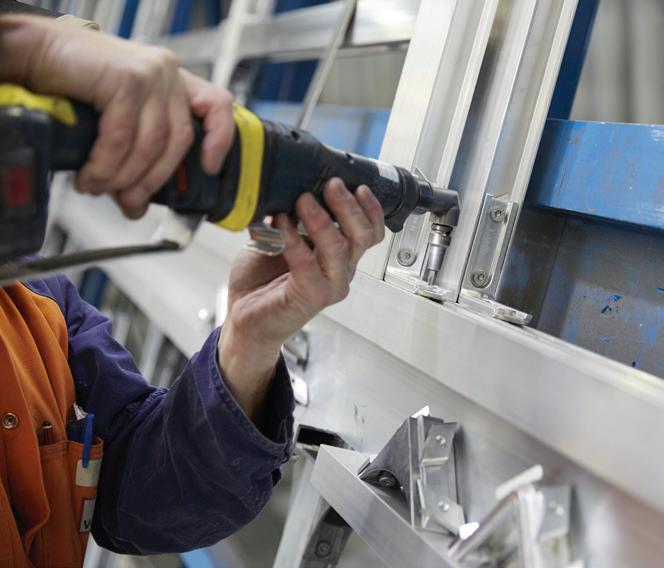
Clockwise from above left: Extruded aluminium sections that form part of the Co-Bolt framework for the buses. Extrusions are bolted together with pressure-cast joiners and preformed bracketry as shown. Cutting holes in the panels to match functional gaps designed into the body frame. Fitting the interior elements while access is still easy at this point on the line. The Co-Bolt system removes the need for welding on the frame and in other sections. Setting the batteries on the roof is an obvious way to maximise passenger space in a bus, which is the whole point
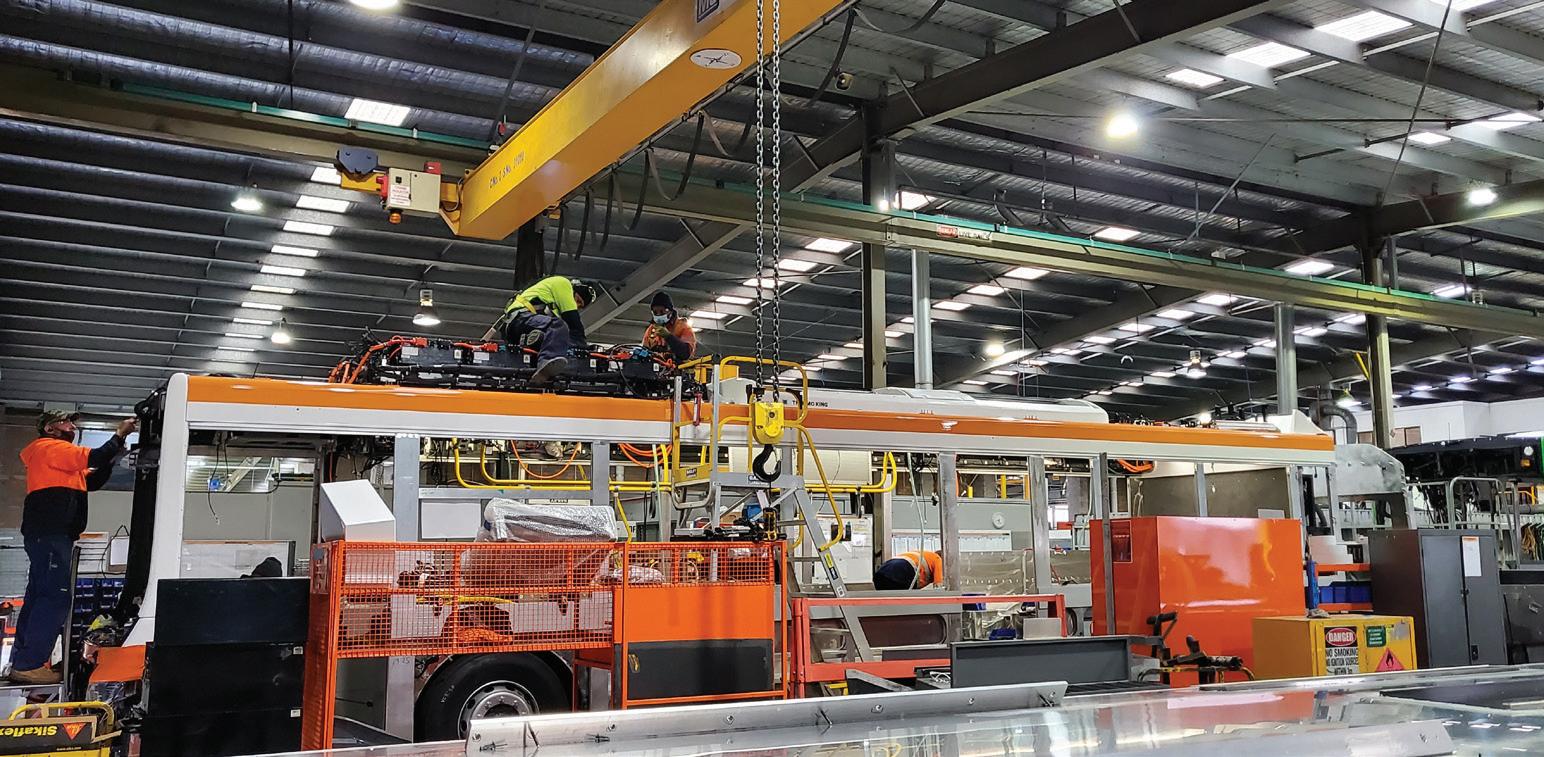

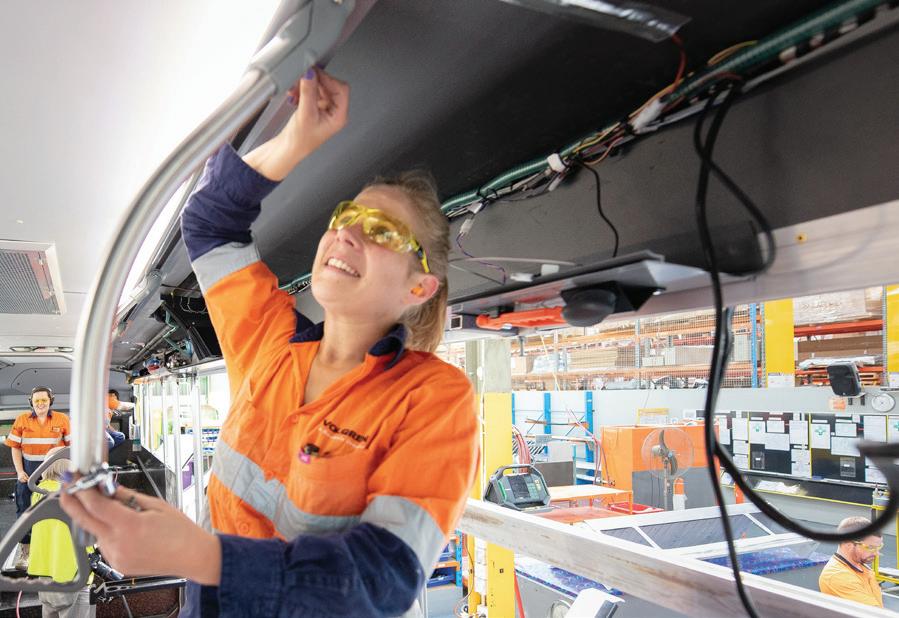
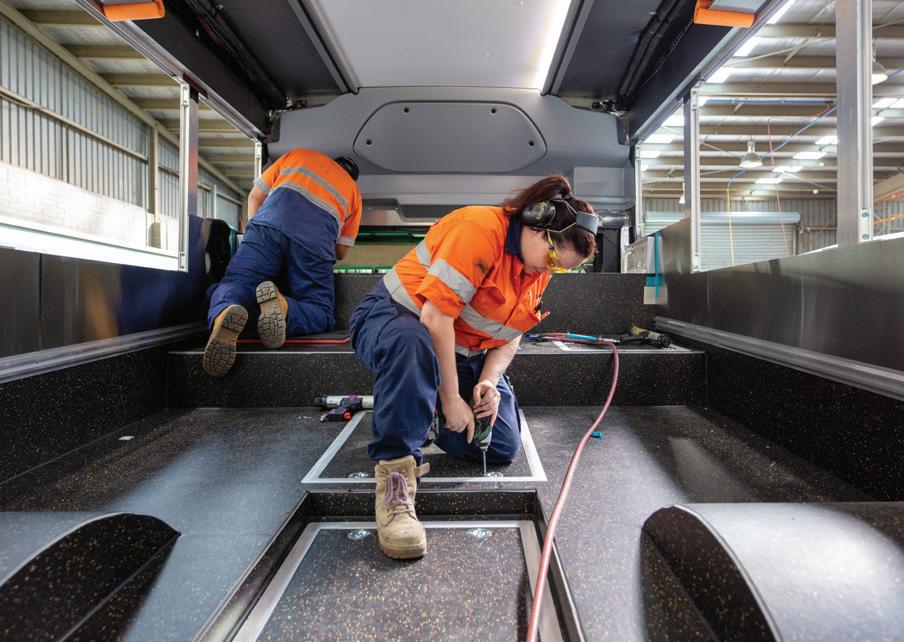
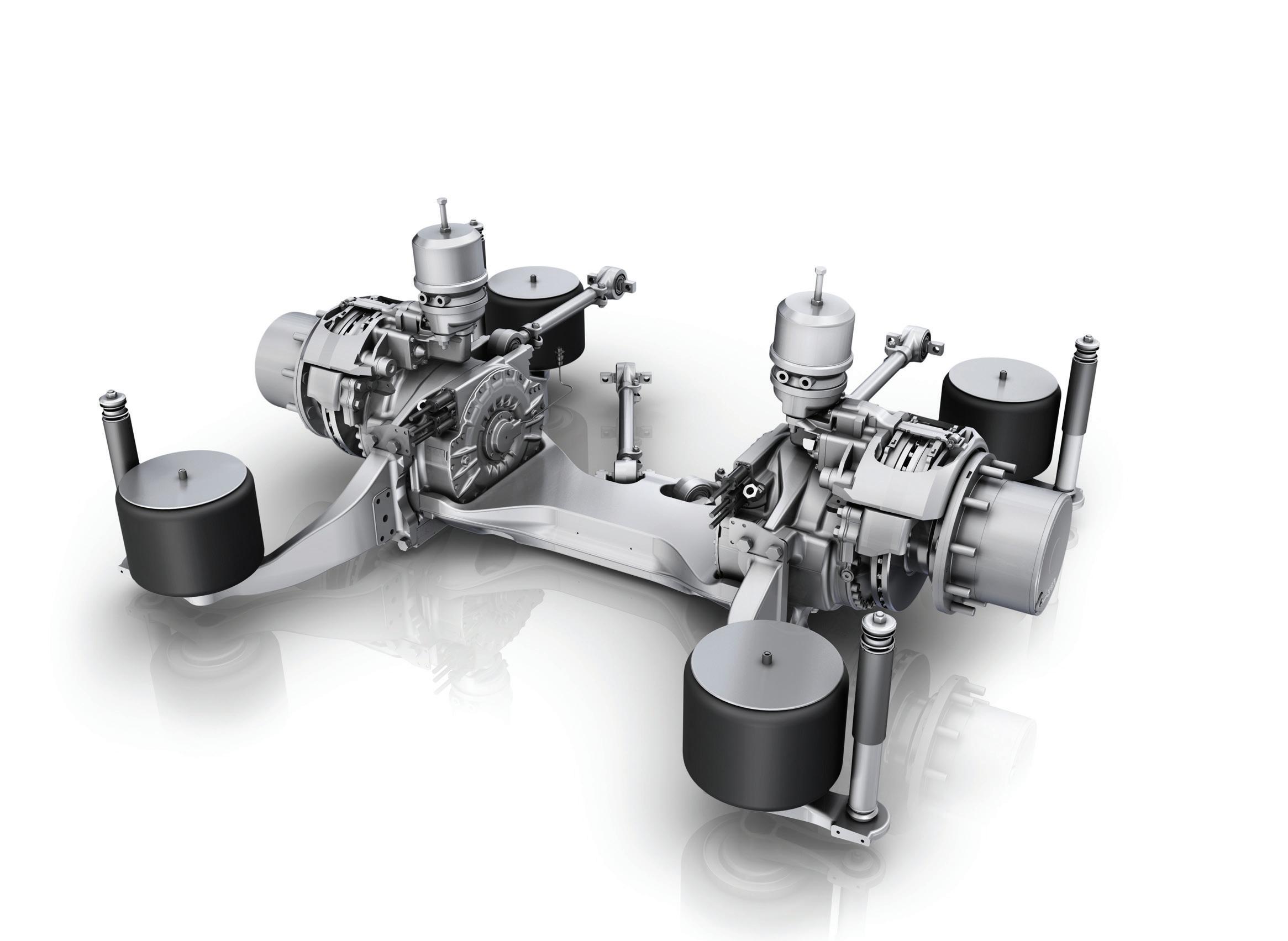
A number of companies supply ready to fit electric hub drives. This one is from first tier supplier ZF. The company points out it can be retrofitted to existing buses, which is another area of opportunity in the transport sector (above)
As mentioned above, the BYD chassis Volgren uses for these buses has two AC synchronous hub motors at the rear wheels. Although batteries supply DC electricity, virtually all modern electric vehicles are powered by AC motors. This is because the speed of AC motors can be very finely controlled by adjusting the frequency of the AC power fed to them. Like common industrial induction motors, the rotor in an AC synchronous motor is driven by rotating electromagnetic fields in the stator, or at least that’s how it’s commonly described. The fields don’t really ‘rotate’. Rather, an AC motor has a number of field windings forming poles in the stator. These are switched on and off sequentially in the right order and with suitable timing to create the so-called rotating field. The rotor holds a number of permanent, extremely strong rare earth magnets that are attracted to the fields in the stator and the rotor rotates to keep up with them.
We mentioned switching. At its simplest, that’s what a motor controller is, a box of cleverly arranged switches that energise sets of windings in the stator at just the right time. They create simulated AC output by pulse width modulation. At the beginning of the simulated sine wave they switch on and off very quickly. As they stay on for longer they simulate the increasing profile of a sine wave and finally at the peak of the simulated sine wave they stay on for the maximum amount of time. Then, they reduce in duration until the simulated sine wave reaches zero. At that point another set of switches takes over to emulate the negative, or reverse, part of the simulated sine wave. Thus, one AC cycle.
As the sine wave is digitally simulated its profile can be tailored to the exact speed and torque requirements needed
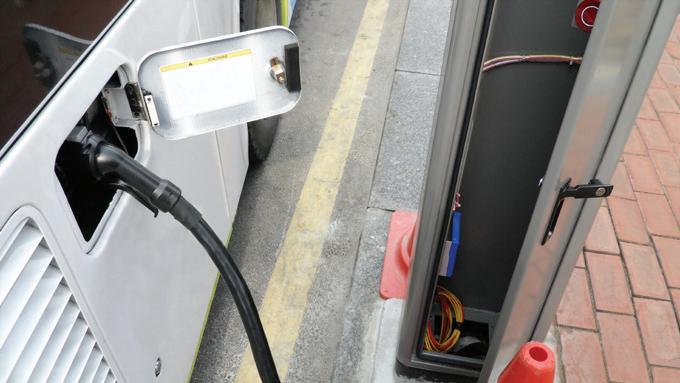
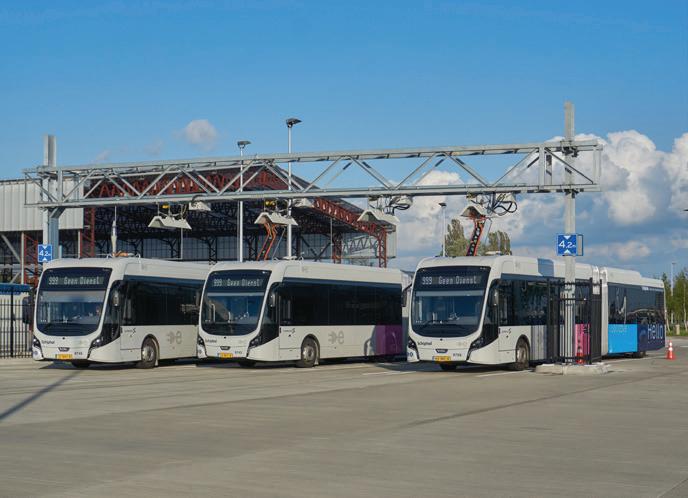
embedded AI can learn and make predictive assessments of how to deliver power for the most effective performance and in a way that will maximise utilisation of available battery capacity. Again, this is just the most basic description of how motors and controllers work. We’ll cover variable frequency drives in a more detailed article soon. The most important factor in this story is what’s going on inside the bus from the passengers’ and driver’s perspective. Specifically, not much. Just comfort, smoothness and a considerately quieter ride.
It’s true buses can be charged by plug just like electric cars but in the long run this method will probably be replaced (top). Overhead charging at bus depots will be the way of the future (left). On-route overhead charging at bus stops will mean practically unlimited range and routes (below)



Other chassis manufacturers supply units with batteries in the roof. This is Volvo’s BZL electric chassis. Ready to run chassis like this are a boon for bus builders (below)

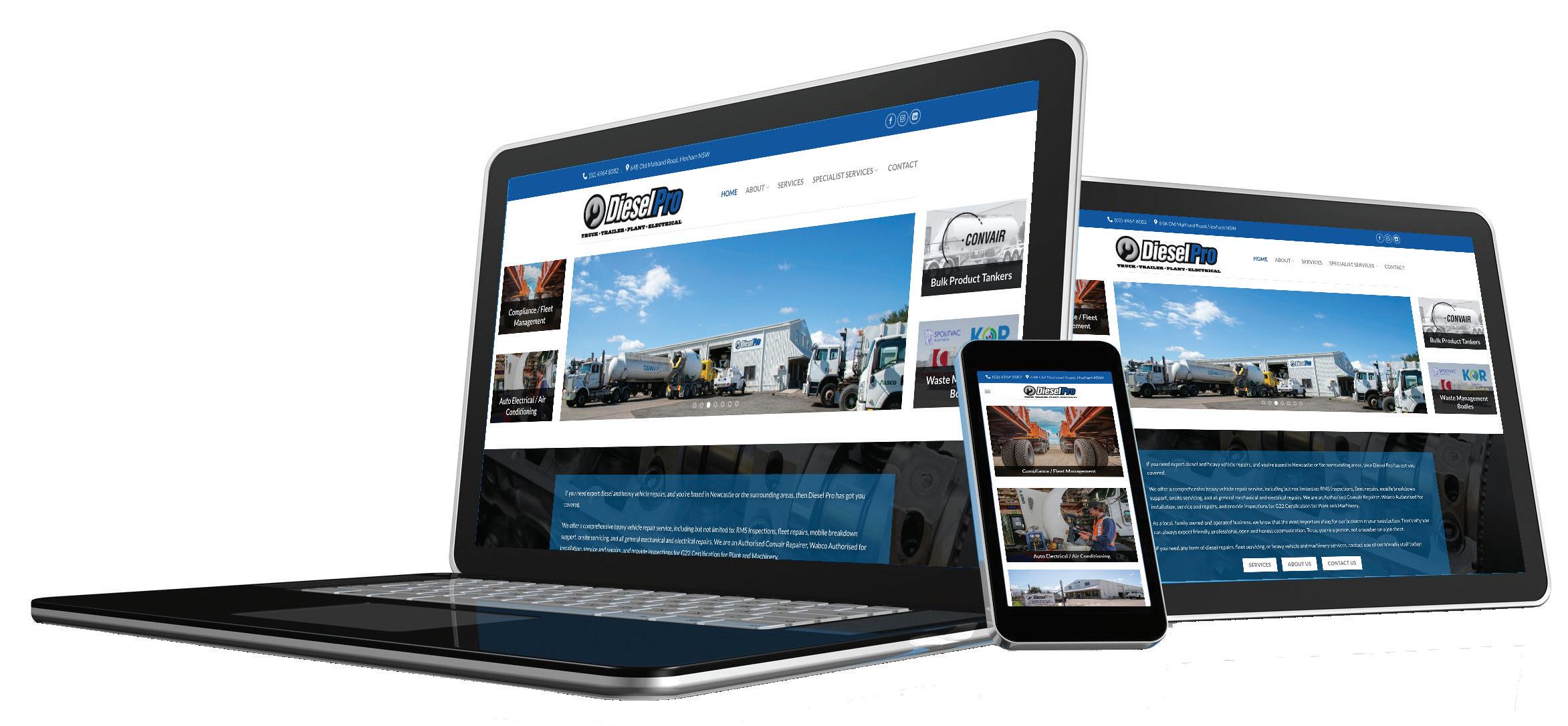
OurAuto Digital
Flexible options specific to your business needs
Whether you want to display inventory, feature a blog or have a functional website that promotes your business, we’ll build your website specifically to cater to your business requirements.
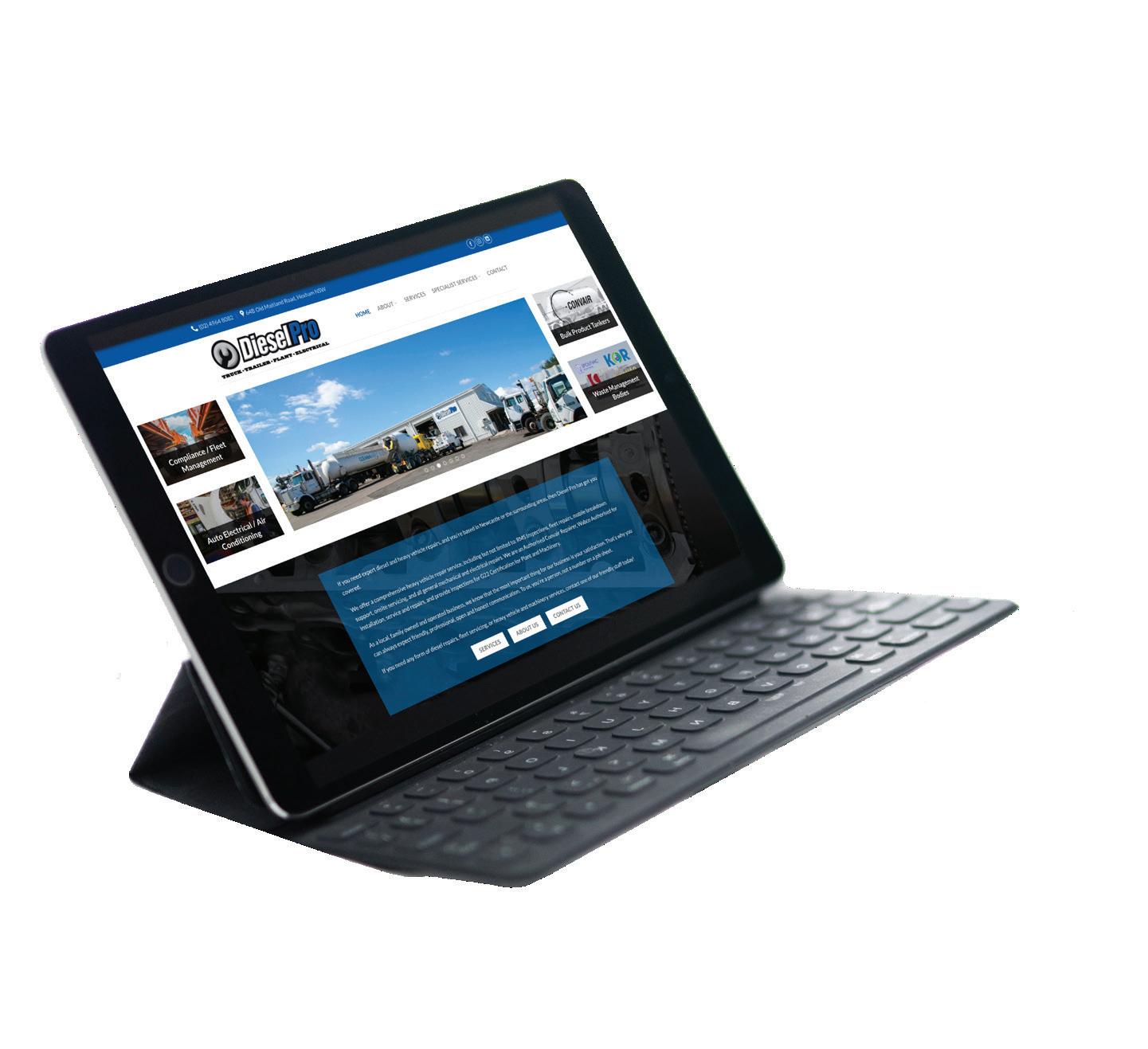
Our specialist team do most of the work for you
Our design team and content writers will ensure your website tells a story about the strengths of your business, making it easier for customers to understand how you can help.
World class hosting means your website will be faster and easier to find
All our websites are hosted by world-leading providers, which means your website will have faster load times for your customers and you’ll get better local search results.

Dynos. Everybody needs one and almost everybody wants one
WORDS
Paul Tuzson
AUSTRALIANS have always been innovative. This is particularly so in the automotive industry. Given the size of our population it’s remarkable how many manufacturers of automotive aftermarket products we’ve had over the years, and still have. ECU systems come to mind as one example and you’d have to add dynamometers to the list. A number of dyno manfuacturers have come and gone over the years. The lack of any new Australian manufacturers in recent times might be taken to be an indication that there’s no room for another. Melbourne company Dyno Innovations disagrees. The founders of this new company have been selling and developing chassis, engine and hub dynos for other companies and organisations for decades. They’ve also been using them for just as long. Now, they’ve decided to make their own so we thought we’d visit. Their assessment that there is room for another manufacturer has
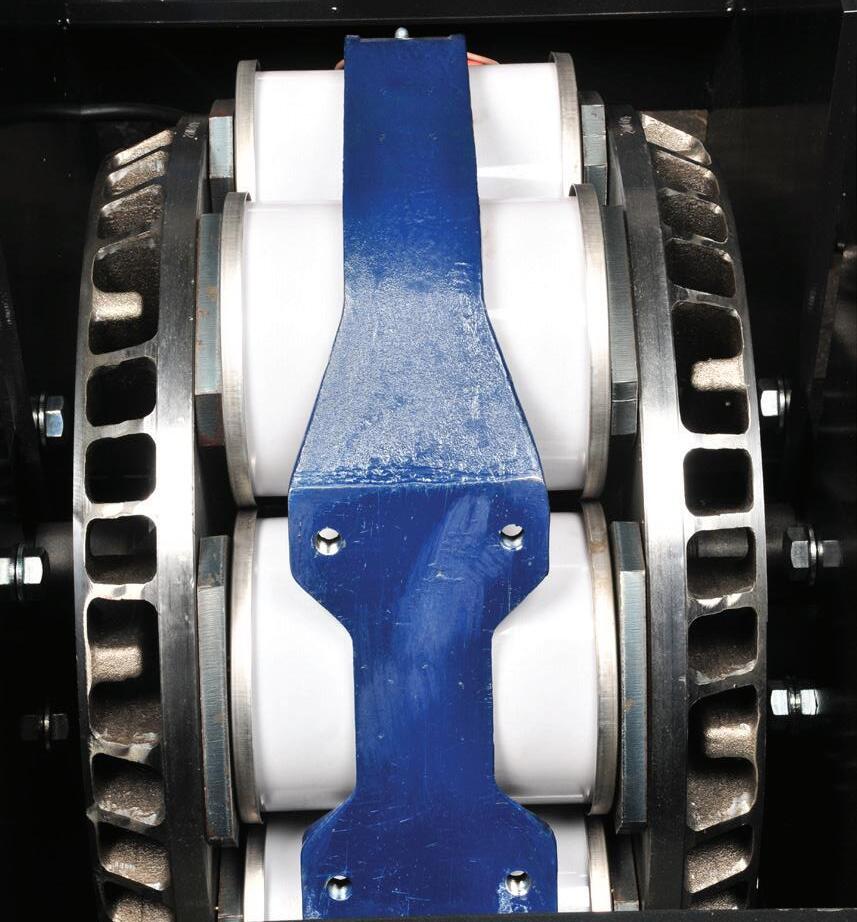
proven correct. Who’d have thought? With such well established local manufacturers like Dyno Dynamics and Mainline/DynoLog producing high quality products for decades it doesn’t seem possible. Yet we’ve seen confirmation that it is possible on the orders/progress board in production.
Many workshops have known the value of dynamometers for years and already have one. A good number have even upgraded to their second machine. Others, though, have felt they didn’t need one. They’ve been of the opinion that street tuning gives them everything they need. Some still hold that opinion. They argue that street testing is a more realistic diagnostic and tuning method because that’s where a car is going to be driven. However, this is an outdated attitude that’s gradually passing away.
A modern chassis dynamometer is seen by workshops that have one as an indispensable tuning tool capable of virtually anything a tuner could want to do. Not many workshops buy a chassis
dyno and then leave it in a corner unused. Apart from operational versatility there’s the benefit of not taking customers’ cars out on the road where all sorts of unfortunate things can happen. Dyno Innovations said they were talking to a potential customer who had the old attitude. He was tuning a performance street car and things went horribly awry. The end result was a lot of expensive damage that the workshop had to fix. Shortly after, the owner bought a dynomometer. True, performance tuning on the street shouldn’t have taken place to begin with, but even with sedate runof-the-mill testing things can go wrong. So, the two main reasons for getting a chassis dynamometer are its extreme usefulness and the reduced likelihood of damaging customer cars.
Of course, a dynamometer is an expensive acquisition.
A two-wheel-drive unit is usually around $50,000 to $60,000 with a four-wheel-drive version costing about twice that. But they’re most usually purchased using finance, which makes the financial outlay much more manageable. Independent finance specialists usually handle the details rather than the manufacturers themselves. What’s more, the fact a dynomometer is expensive can indicate to your customers that your business is prosperous enough to afford one. Problems can often be solved much more quickly with a dyno than without one, which leads to improved customer satisfaction. In turn, getting work done more quickly and more effectively leads to increased turnover and, of course, more profit.
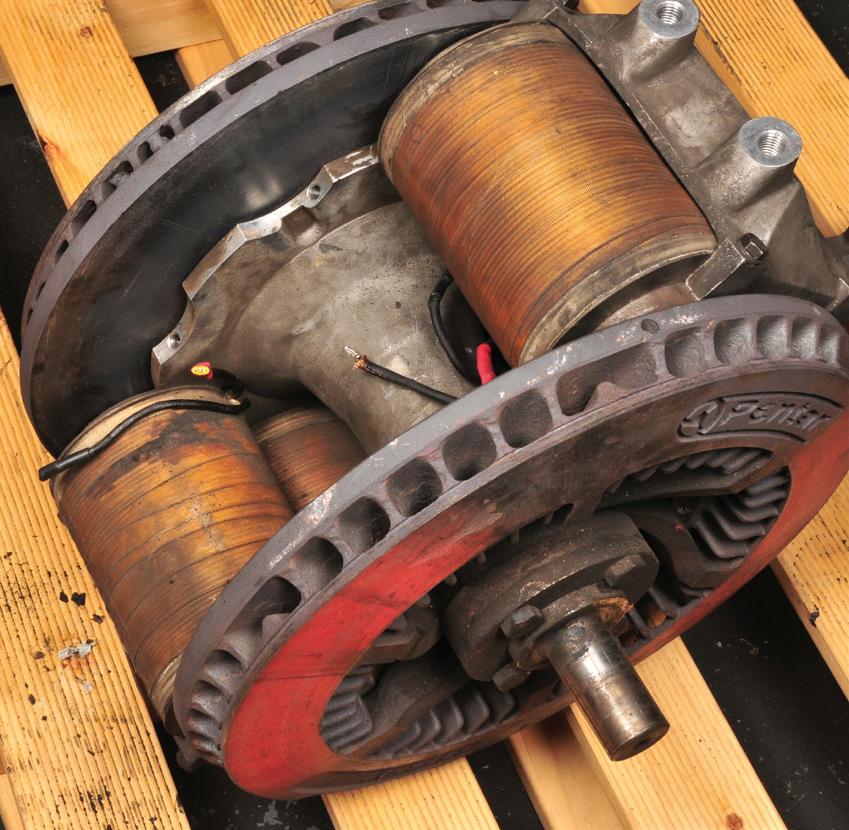
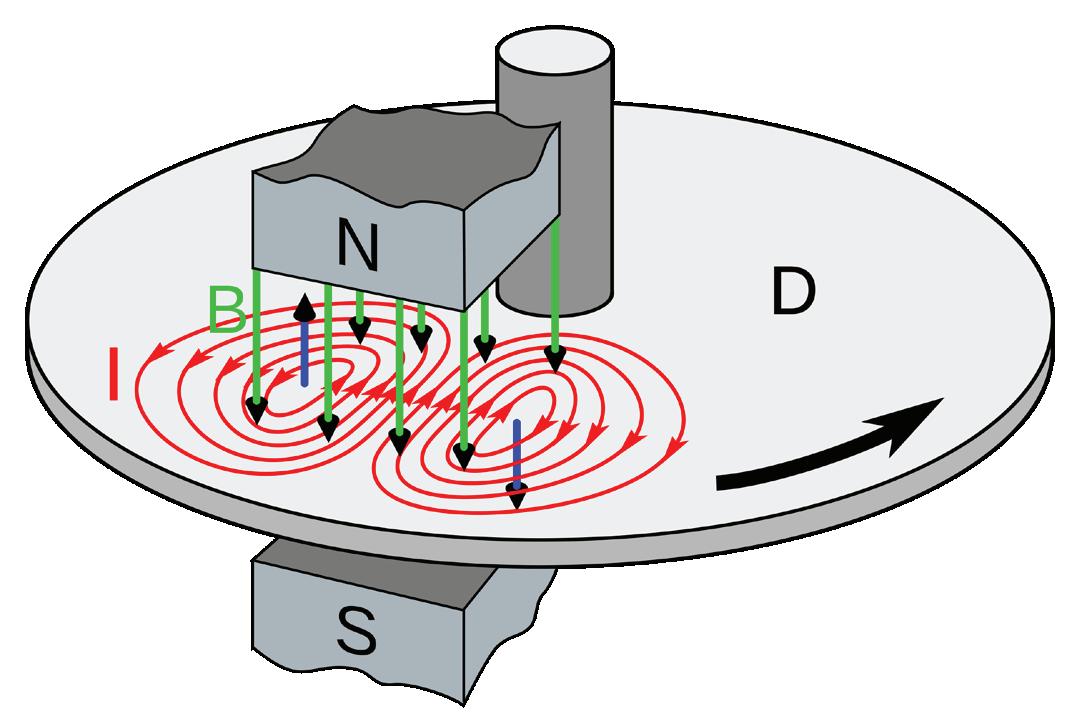
This dynamometer from Dyno Innovations can handle the biggest trucks as well as general fourwheel drives and ordinary cars. It's at O'Diesel in Koo Wee Rup (far left). A retarder of some sort is the backbone of all dynamometers. This is a fairly big eddy current retarder custom built for Dyno Innovations (left). The relationship between coils and magnets can be seen even more clearly here (top). This illustration shows the basic elements of an eddy current retarder, or brake. The green lines are the primary field, the red ones are the induced eddy currents and the blue fields are the secondary fields (above). Electromagnets are the foundational elements in eddy current dynamometers. They come in different sizes depending on the application (below)

Image: Chetvorno from Wikipedia

Dyno Innovations explained that the market for dynos has changed over the years. A couple of decades ago it was all Fords and Holdens with the occasional Japanese car. Now, there’s a much wider variety of cars being diagnosed and tuned, like Rangers, HiLuxes, diesels, etc. Linked front and rear roller beds are important because even some 2WD cars can’t be tested unless all the
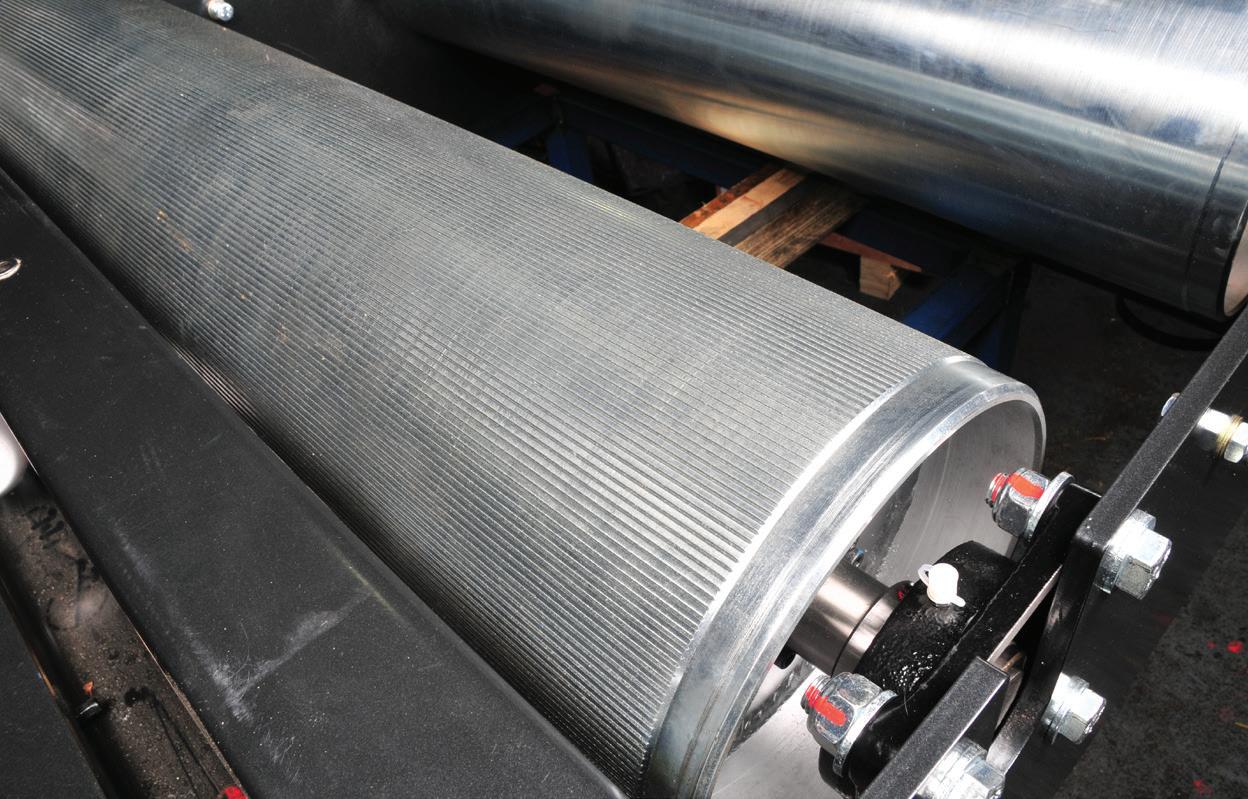
problem that only occurs under particular conditions. It can also be used to tune for specific circumstances, all while the vehicle stays in the workshop. One race team got a dyno just to tune for coasting down the hill at Bathurst. The idea was to trim the fuel under those conditions so the car might get an extra lap or two from each tank of fuel. Now that’s what you call specific.
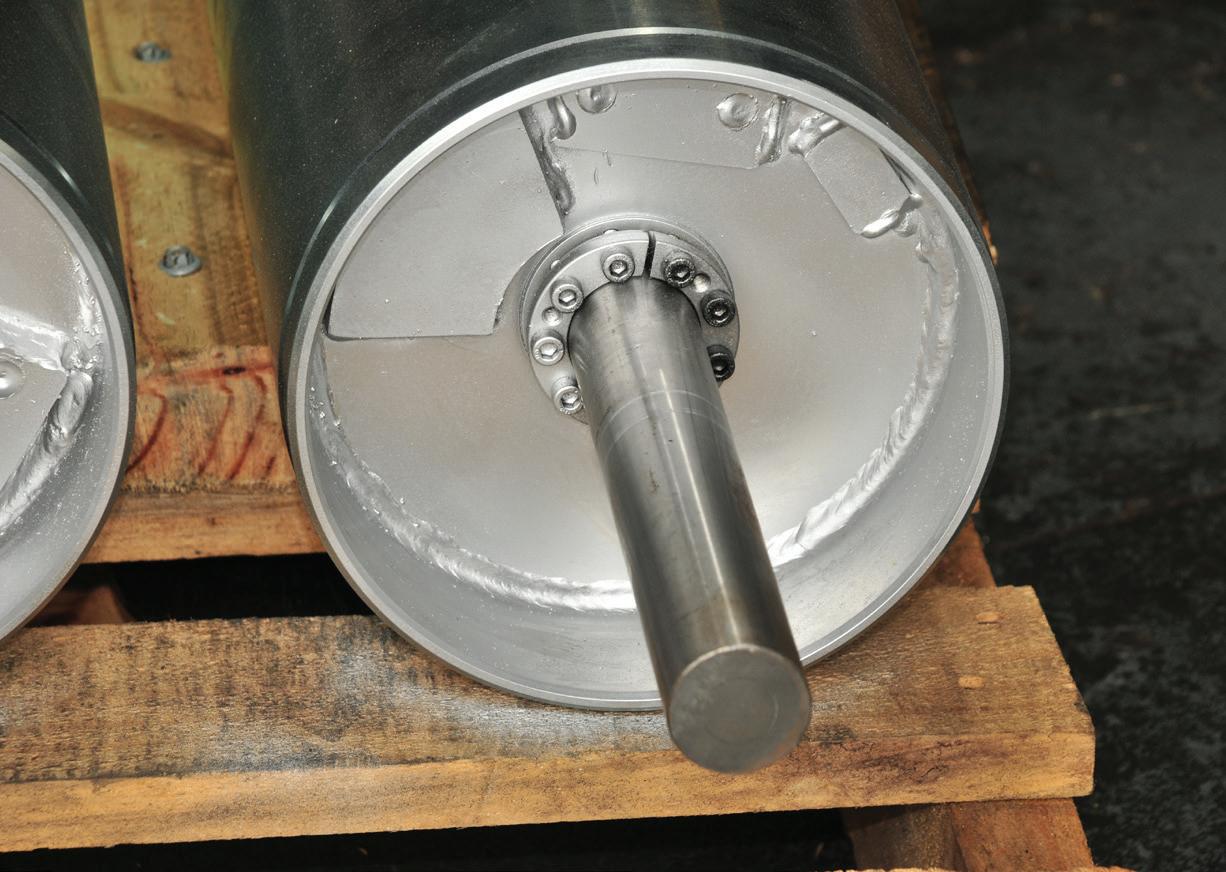
wheels are turning. Some cars with this requirement don’t have dyno modes and you can’t take tailshafts out, so there’s nothing that can be done. Linked beds are the only solution for such models. In the past, a good many dynos were used mainly for power runs at wide open throttle. Such testing results in pretty graphs that show where maximum power and torque occurred. Because power runs are made at wide open throttle there isn’t much that can be checked except perhaps mixtures at full power. This is the so-called ramp run but it’s a limited way of thinking about dynamometers. A car may run perfectly at wide open throttle but cars are rarely driven that way. Steady state testing and tuning on the other hand occurs at particular revs and loads. It’s much more useful for getting a car to run properly right throughout its rev range. This is the very definition of driveability. Steady state testing also allows an operator to zero in on a
Trailing rollers are smooth. Driven rollers are textured for grip (above left and right). The shafts in Dyno Innovations rollers are held in with taper locks. If they have to be removed for any reason doing so is easy. A shaft welded in place is much more difficult (below left). Roller beds have to be adjustable and linked for proper measurement (below). Lateral rollers also have to be joined. Usually this is done with a chain coupling but these can break. Dyno Innovations has developed this vibration resistant coupling to do the job (bottom)
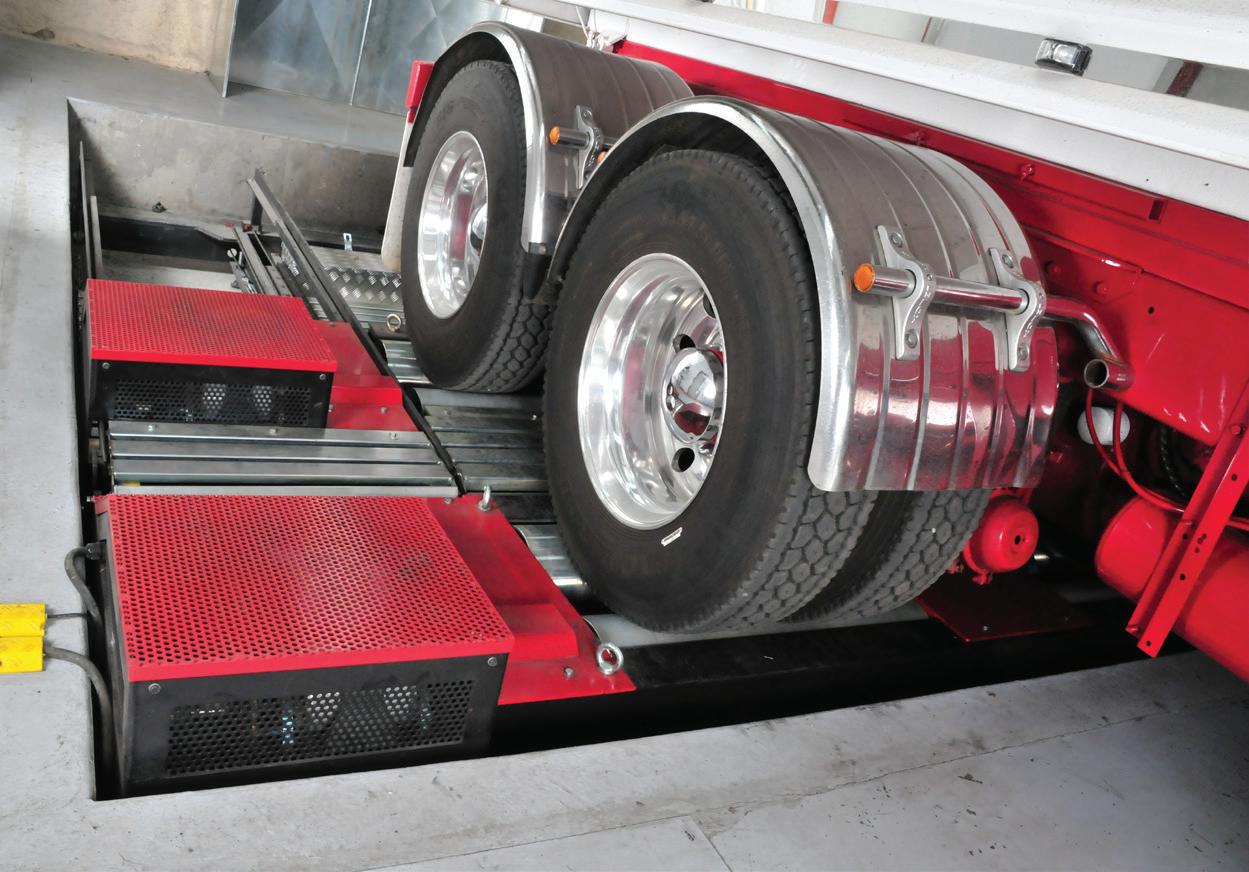
While roller dynos simulate road conditions they can only do so if the rollers offer a surface that emulates road grip. The pattern cut into the rollers to offer such grip is important and throughout the history of the chassis dyno all sorts of patterns have been tried. Standard knurling didn’t work that well and used to shred tyres. Now, long grooves with particular profiles like those shown have proven to be the most effective. However, even these have their limits. If a vehicle has too much power the tyres will exceed the available grip and the tyres will start to turn faster than the roller. This is known as slip and it obviously effects the accuracy of the data gathered by the system. Such slip has to be eliminated, which brings us to hub dynamometers. The most effective way of eliminating slip is to remove the wheels and bolt the dyno directly to the hubs as shown. As cars have become more powerful hub dynos have grown in popularity
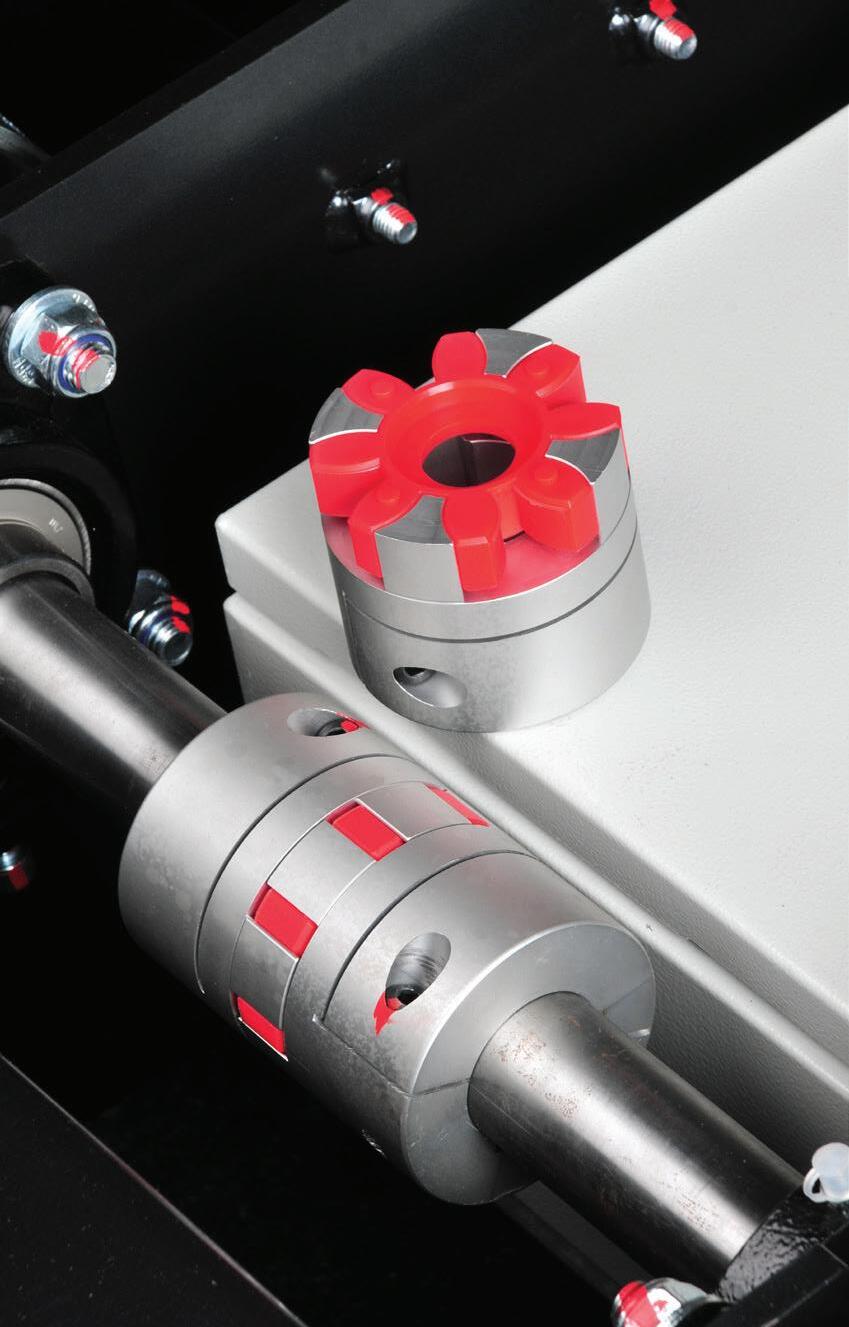
and continue to do so. Also, many track cars, particularly high powered drag cars, can be tested on hub dynos in any gear and at any speed. This is completely impossible with roller dynos. However, it’s not just track cars that benefit. Many workshops are choosing hub dynos for their general tuning work. There’s no doubt a roller dyno is easier to use but many more powerful cars have to be firmly tied down to hold the tyres in the rollers properly, and this takes time. Hub dynos aren’t that difficult to set up and like anything, the more it’s done the easier it becomes. Some businesses are replacing their roller dynos with hub units but others are keeping both types to retain the advantages of each.
However, designing and manufacturing one is much more than simply copying the dimensions and locations of components. If a potential manufacturer didn’t understand the market, didn’t know how to tune a car and had to learn about things like OBD2, rich and lean mixtures and any number of other things related to automotive technology, they simply wouldn’t be able to manufacture a dynamometer successfully. Nor would they be able to sell dynos into the local market. The team at Dyno Innovations has this expertise built in. We must also say that the other Australian and international manufacturers also have such expertise. Dyno Innovations is a new company. Operations were just getting under way
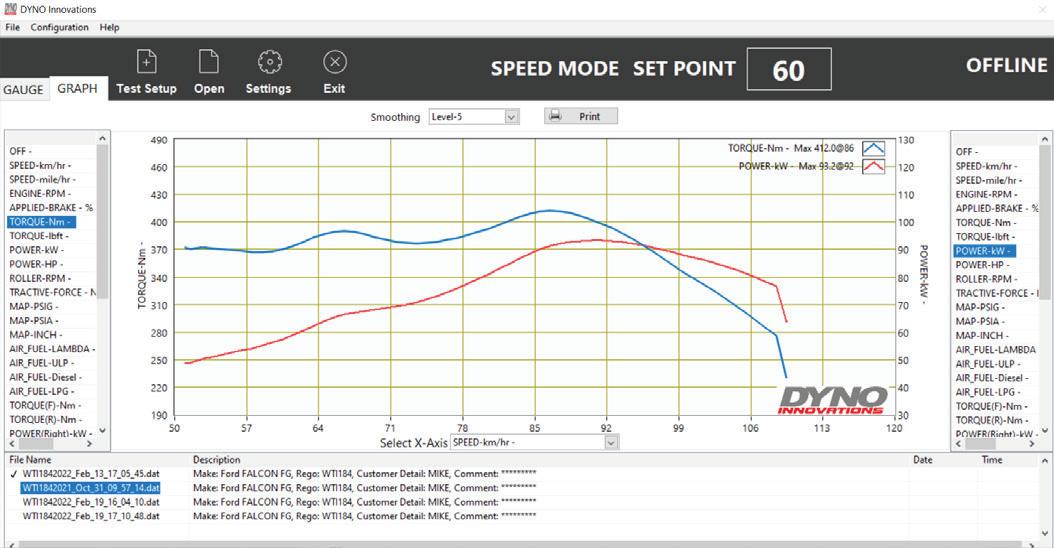
Dyno Innovations said there have been about 4,000 dynos sold in Australia. So, is that it? Is the market close to saturated? No. In Victoria from Warragul in the east, to Werribee in the west, to Campbellfield in the north, there are about 5,000 workshops. In a similar region around Sydney there are roughly 10,000 workshops. These numbers have been constant over the years. One may close but another opens. So, in the two states that’s about 15,000 to say nothing of the rest of the country. This begs the question, why aren’t there more dynamometer manufacturers? From an engineering perspective, dynamometers aren’t that complicated.
There’s also the price difference between imported components and locally manufactured versions. Dyno Innovations found, in the case of one major component, the cost of the imported version was just one per cent of the price for the local unit. This added up to a decent handful of thousands of dollars cheaper for each unit. The catch is that imported components have to be purchased in greater quantities than a local manufacturing operation might be able to handle. For the item mentioned above, the minimum order was a thousand units. This was far too many for Dyno Innovations’ needs. They asked if they could get away with 50. The supplier said they’d be willing to do a hundred. So, even
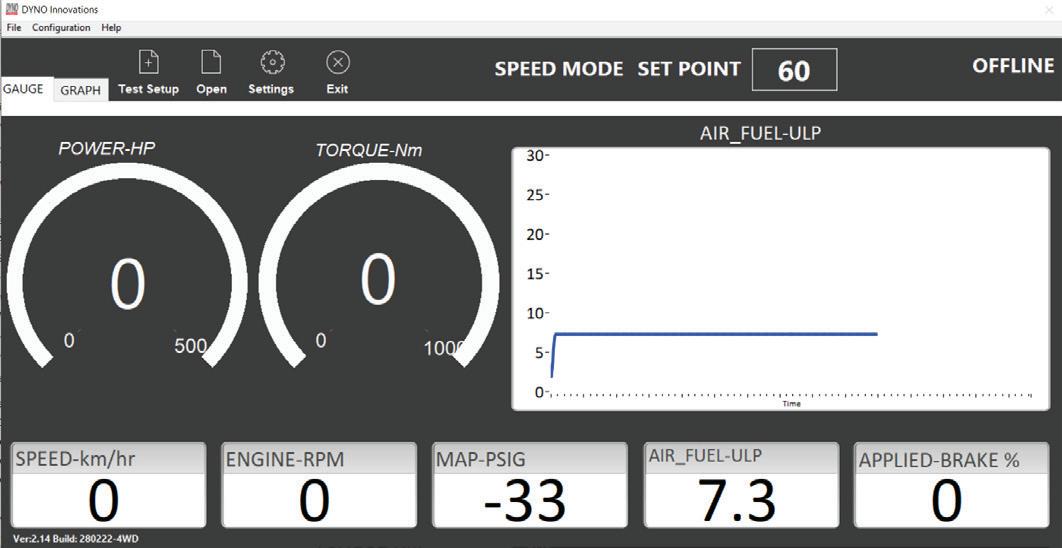
when COVID hit in 2021, which imposed difficulties. It definitely wasn’t the ideal time to start a major manufacturing business. In the end, though, the company pushed through. The original notion was to source everything locally and to build everything locally. Nice idea but wholly impractical in today’s manufacturing environment. For instance, there are no locally built eddy current retarders, so these have to be imported. There are other components available locally but upon further investigation such components are discovered to be manufactured overseas and then imported by local suppliers. So, not Australian made.

quantities can be bartered. We should also point out the engineering support from this supplier was superior and the upgrades suggested by the offshore engineers were included at no extra cost. Dyno Innovations was a bit vague about the details of the product mentioned above for trade secret reasons but the example makes the point.
Dyno Innovations designed the operator interface to be as simple as possible. It only takes about five minutes to get a new owner up and running with a machine. Any CAN based device can be added (above). This is the controller for the dynamometer. It’s deceptively complex for such a simple looking box (below left). A hall-effect sensor reads the speed of the rollers (below right)
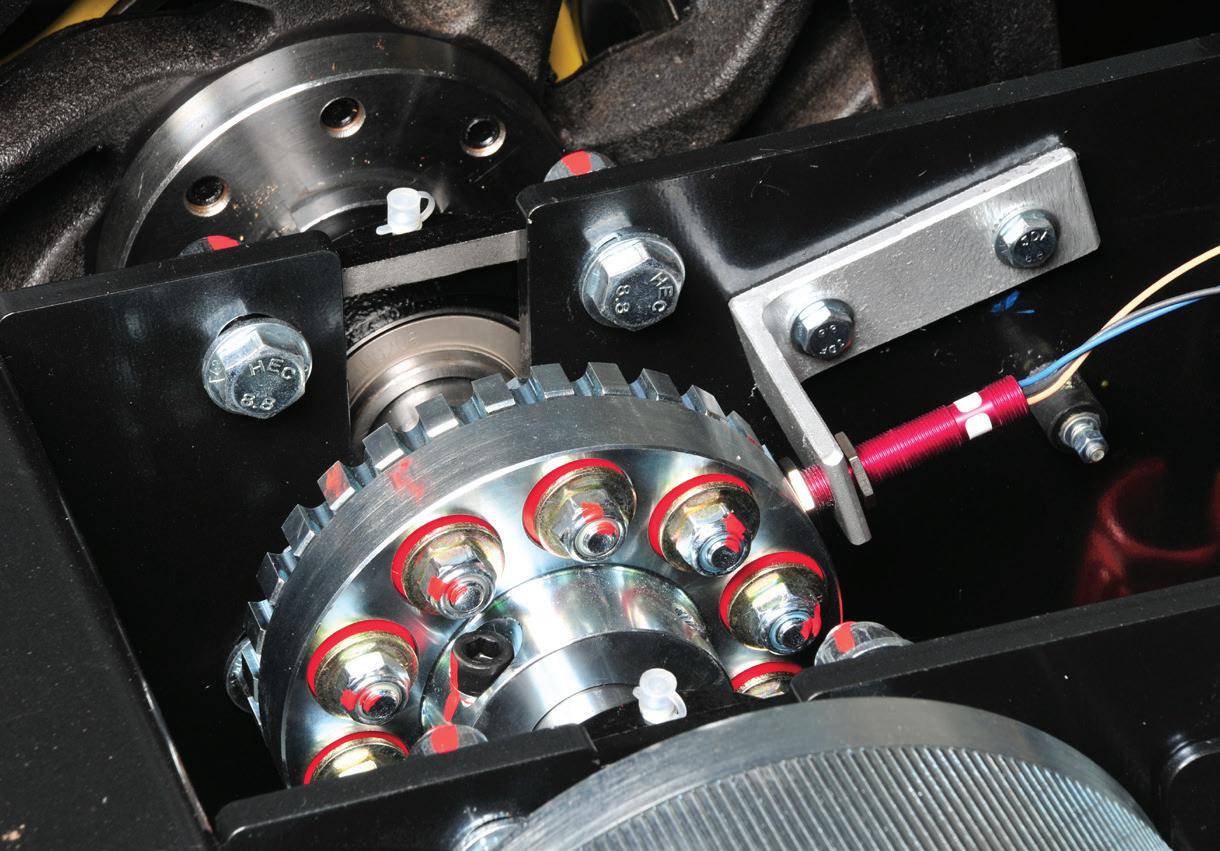

On the other hand, everything that can be manufactured here is. The chassis, rollers, bearings, shafts and other hardware components are made here and the company is adamant they always will be. Both the roller and hub dynamometers from Dyno Innovations are built around eddy current retarders. Almost everyone in the trade knows these work by means of magnetism. Often, though, that’s about as deep an understanding as an operator has. However, the details are interesting for those more curious. When an electric current flows, it creates an electromagnetic field around the conductor through which it passes. Importantly, an electromagnetic field generates current in any conductor that passes through it. So, the initial electromagnetic field creates a current and then that current creates a second electromagnetic field. This is the backEMF mentioned in discussions about electric motors, transformers and the like. In these applications it is undesirable. In eddy current retarders it is essential.
In 1834, physicist Emil Lenz discovered that when a magnetic field (the initial field) induces current, the field created (the second field) by that current opposes the force from the initial field. This resistance between the initial and second electromagnetic fields is how an eddy current retarder creates a drag/load against which a drivetrain has to work.
As the photographs show, there is a ring of powerful electromagnets around the periphery of each retarder. Iron rotors set very close to the ends of these
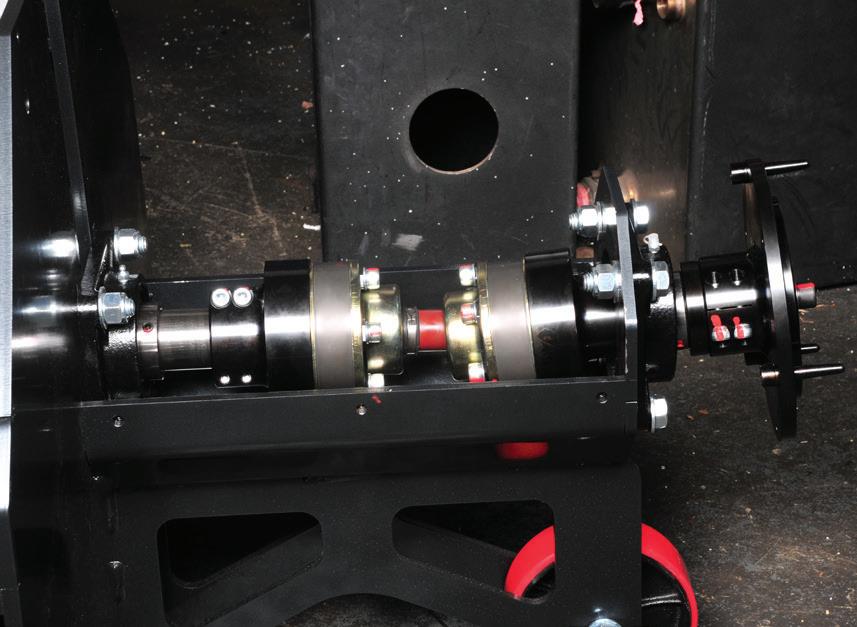

electromagnets turn through the fields created by the magnets. This induces current in the rotors. Because such current has no circuit through which it can flow, it turns in circles/rings, like eddys in water. So, to repeat, the fields created by these eddy currents oppose the fields that created the eddy currents in the first place. The strength of these fields is varied by altering the current passing through the electromagnets, which varies the load against which the drivetrain works. This brings up the matter of dynamometer control. The user interface of the Dyno Innovations system occurs through a wireless keyboard. Operationally, the control system is designed so any action can be performed with the minimum number of keystrokes. Four is the maximum for any action. There’s a screen interface as with all modern dynamometers (they used to have big mechanical needles and dials). However, that’s just a basic description of high level control. At the deeper, lower level there’s more going on. The control system for a dynamometer has to be as responsive and precise as possible. Achieving this requires the balancing of certain parameters. Two of the most important are the speed of the settling time (at the target speed) and overshoot. When
Development is constant. An earlier newer model in front with an earlier unit behind. A hub dyno with the cover removed (above left to right). CV joints allow flexible coupling with axle hubs (below left). Veloce Tuning chose a hub dyno for the highest accuracy (below centre and right). Clearance between the electromagnets and rotors is tiny (above right)
a speed is set and the throttle opened the controller should manage it with minimum overshoot. However, eliminating overshoot can mean the controller will be slower. But a faster controller may result in oscillation, which is the very definition of an unstable controller. Balancing these and other parameters for the wide range of cars that will be tested on an average dynamometer is the challenge. As with all engineering problems, it’s a matter of appropriate compromise. Judging by market penetration, Dyno Innovations seems to be the latest local company to find the balance. You can reach the company on: 0403 994 148 or 0438 343 148.
Mainline is on: 02 4648 0612
Dyno Dynamics: 03 9735 8900

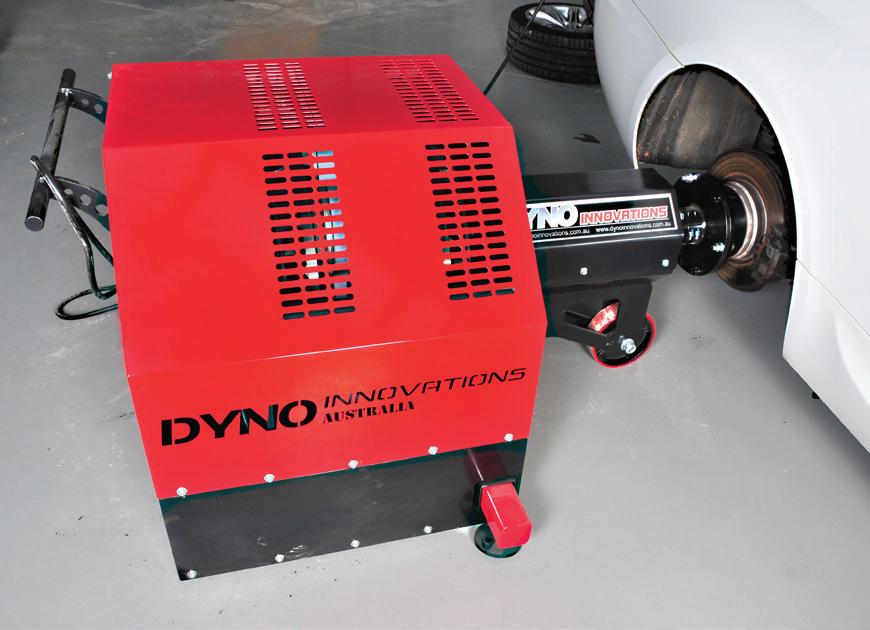
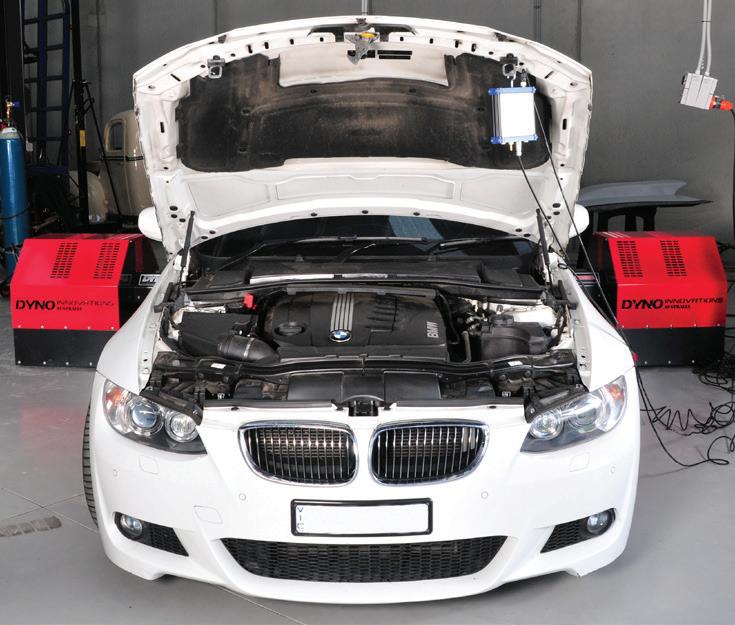
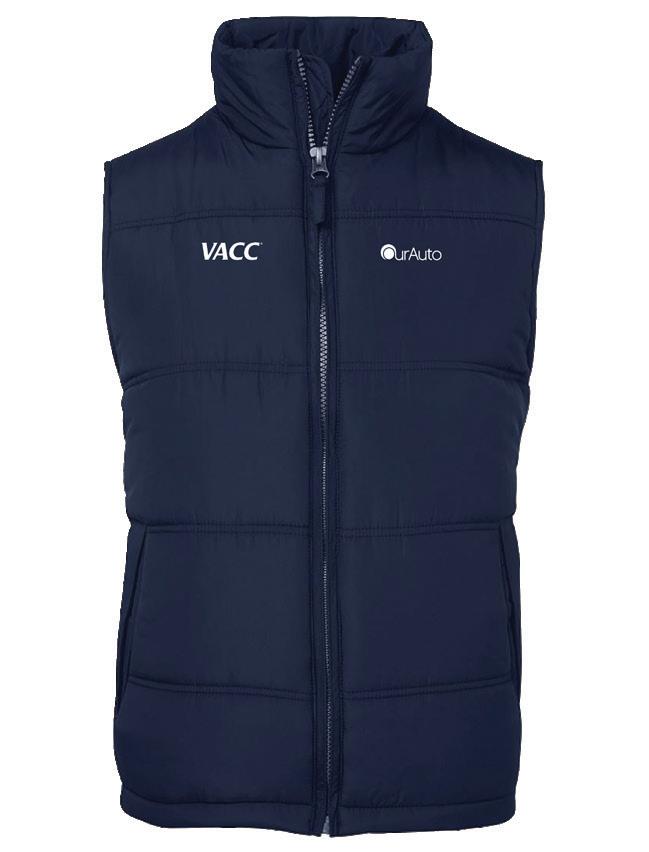

JOB CARDS BOTH LARGE AND SMALL

Bysigningthisjobcard,thecustomeracknowledgeshavingseen/recieved
alsoauthorisetheaboverepairsastheowner/agent.
For all your automotive stationery and safety needs
The OurAuto iStore is the one-stop automotive shop for everything you need to run your business with over 100 products, divided into various categories including workshop, motor-car traders, business management, OHS, safety wear, clothing, technical publications, promotional and
VW/AUDI – 1.8 & 2.0-LITRE TSFI: COOLANT PUMP REPLACEMENT
Audi, Volkswagen, SEAT and Skoda vehicles | 1.8-litre: BYT, BPU, BZB, CGYA, CDAA, CDAB 2.0-litre: CAWA, CAWB, CBFA, CCTA, CCTB, CCZA, CCZB, CCZC, CCZD, CDAA
The EA888 family of engines were introduced in 2007 and are used in many Audi, Volkswagen, SEAT and Skoda vehicles. There are two capacities available: 1.8 and 2.0 litres and they are mostly mechanically identical.
LIKE other modern engines from the VAG group, the coolant pump on these engines is incorporated into the plastic thermostat housing. The engine’s balance shaft drives the coolant pump via a maintenance-free toothed belt, and the pump is mounted to the block under the intake manifold (see diagram 2).
It is recommended to replace the entire assembly and the belt if there is a problem (see diagram 4).
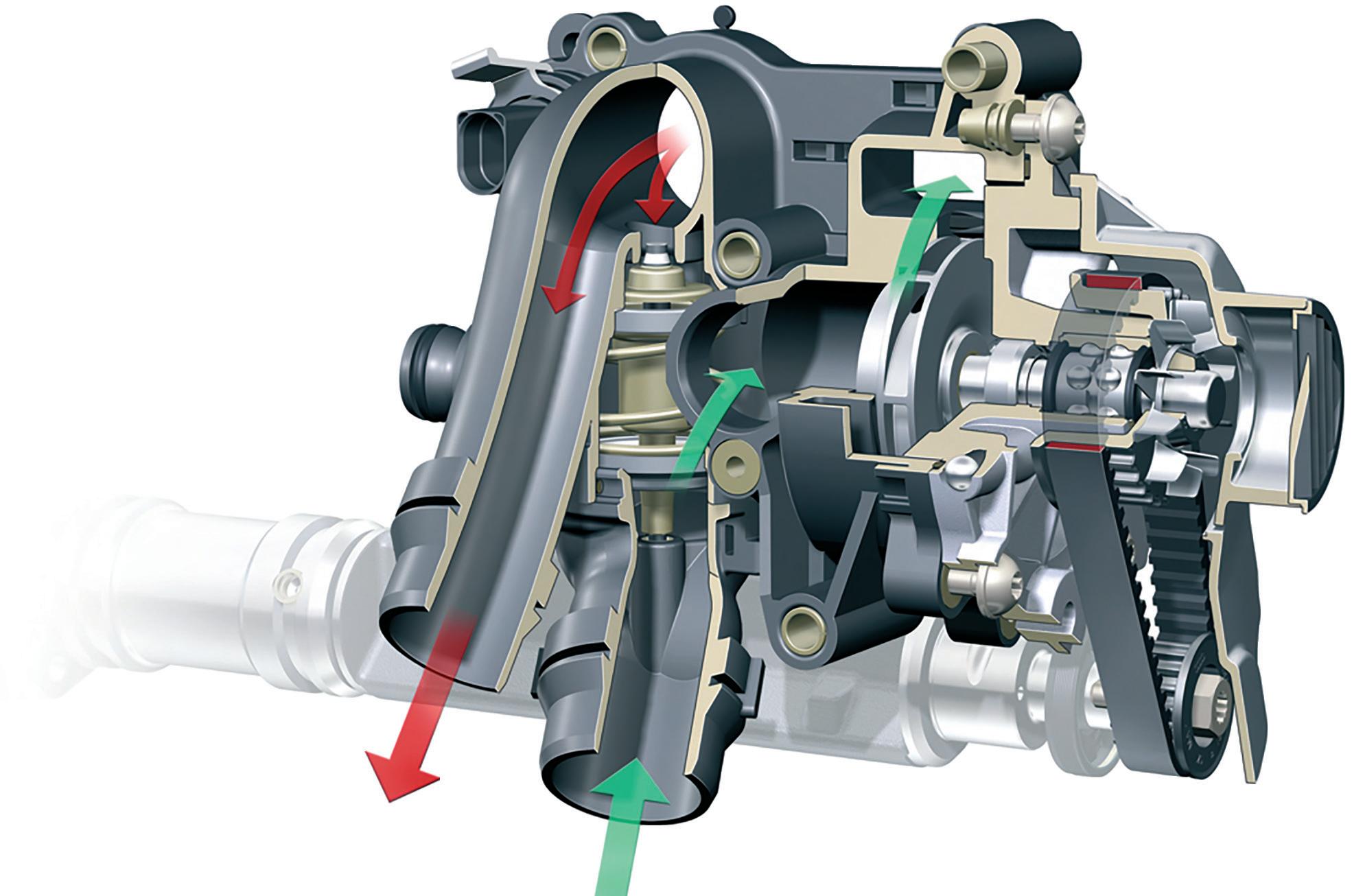
The repair time for the coolant pump replacement varies from 3.8 hours to 5.1 hours, depending on the vehicle in which the engine is fitted.
Removal
1. Drain coolant.
2. Remove engine cover.
3. Remove air filter assembly.
4. Remove intercooler pipes.
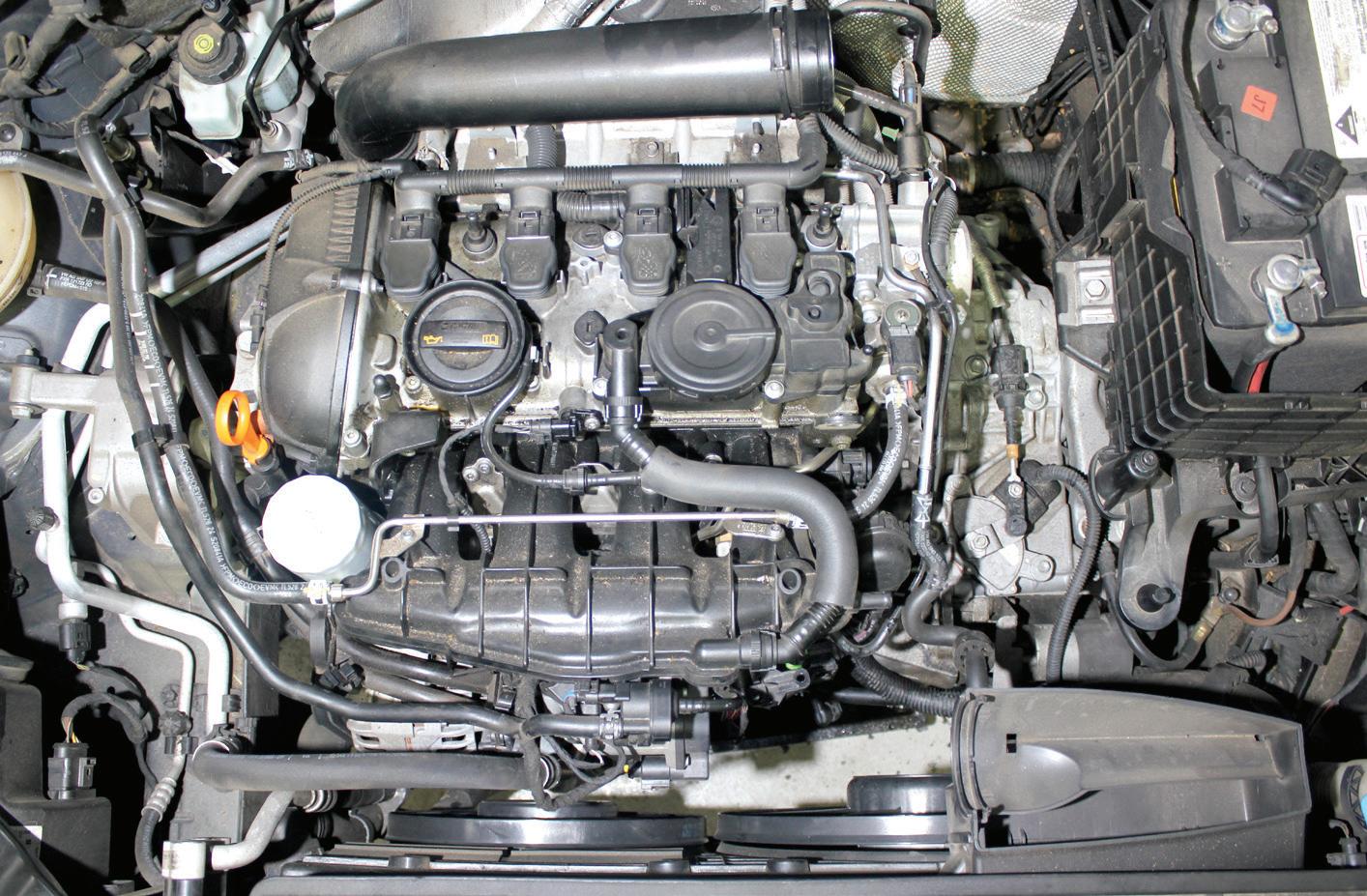
The coolant pump is under the intake manifold, and is accessed from under the vehicle. Other vehicles may require the intake manifold to be removed.
5. Remove cover from under front of vehicle.
6. Unclip coolant hoses from coolant pump assembly.
7. Remove intake manifold support from under manifold. There is a stud and a nut on manifold and a bolt that attaches it to the block (see diagram 3).
8. Remove two bolts from belt cover and remove cover (see diagram 7).
9. While holding crankshaft in place, loosen bolt in centre of drive sprocket for belt on the rear of balance shaft. Warning: This is a left-hand thread torque to yield bolt which must be replaced (see diagram 6).
10. Remove sprocket from balance shaft with belt.
11. Remove five bolts which attach pump assembly to block and remove pump (see diagram 5)
12. Remove connection pipe from oil cooler if still in place and discard (see diagram 6)
Diagram 2 - Engine bay overview
Balance shaft
Drive belt Drive spocket Drive spocket bolt
Image: Audi
Diagram 3 - Coolant pump in place

Diagram 4 - Cracked housing
It is common for the plastic housing to crack where it mounts to the block.
This is why it is a good idea to replace the whole assembly
Remove hoses and electrical connections from the pump.

Diagram 5 - Tightening sequence
The coolant pump must be tightened in sequence to 9Nm.
NOTE: Make sure to use 50mm and 28mm bolts.
Installation
1. Check cylinder block surface is clean and smooth (see diagram 6)
2. Fit new rubber gasket to water pump.
3. Fit new connection pipe into pump assembly with clean coolant on ‘O’ rings for lubrication (see diagram 6).
4. Install new pump assembly to block, ensuring connection pipe enters oil cooler and the two dowels in the block align correctly with holes in the pump (see diagram 6)
5. Install five bolts into pump. Tighten bolts in sequence to 9Nm (see diagram 5).
NOTE: There are three 50mm long bolts and two 28mm long bolts. It is a common mistake to mix up one of the 28mm bolts with the single 30mm bolt for the belt cover which will bottom out in the hole and cause a leak. Keep your bolts separated.
6. Fit new belt to pump and fit drive sprocket to balance shaft with a NEW bolt. While holding crankshaft, tighten bolt in two stages: 1st: 10Nm, 2nd: 90 degrees (see diagram 7).
WARNING: This is a left-hand thread bolt.
NOTE: The belt does NOT need to be tensioned.
6. Refit belt cover and tighten bolts to 9Nm.
7. Refit all other components in reverse order.
8. Refill engine with coolant. It is recommended to use a vacuum unit to refill system.
9. Start engine and run it at 3000rpm for 3 minutes or until cooling fan starts.
10. Check coolant level and top up until coolant is at maximum mark on expansion tank.
11. Test drive and check for leaks and correct coolant level.
For more information on these engines and others from the VAG group, log on to VACC MotorTech or call VACC’s TechAdvisory Service.
Make sure to remove plastic cover from the cooling fan

Remove the intake manifold support
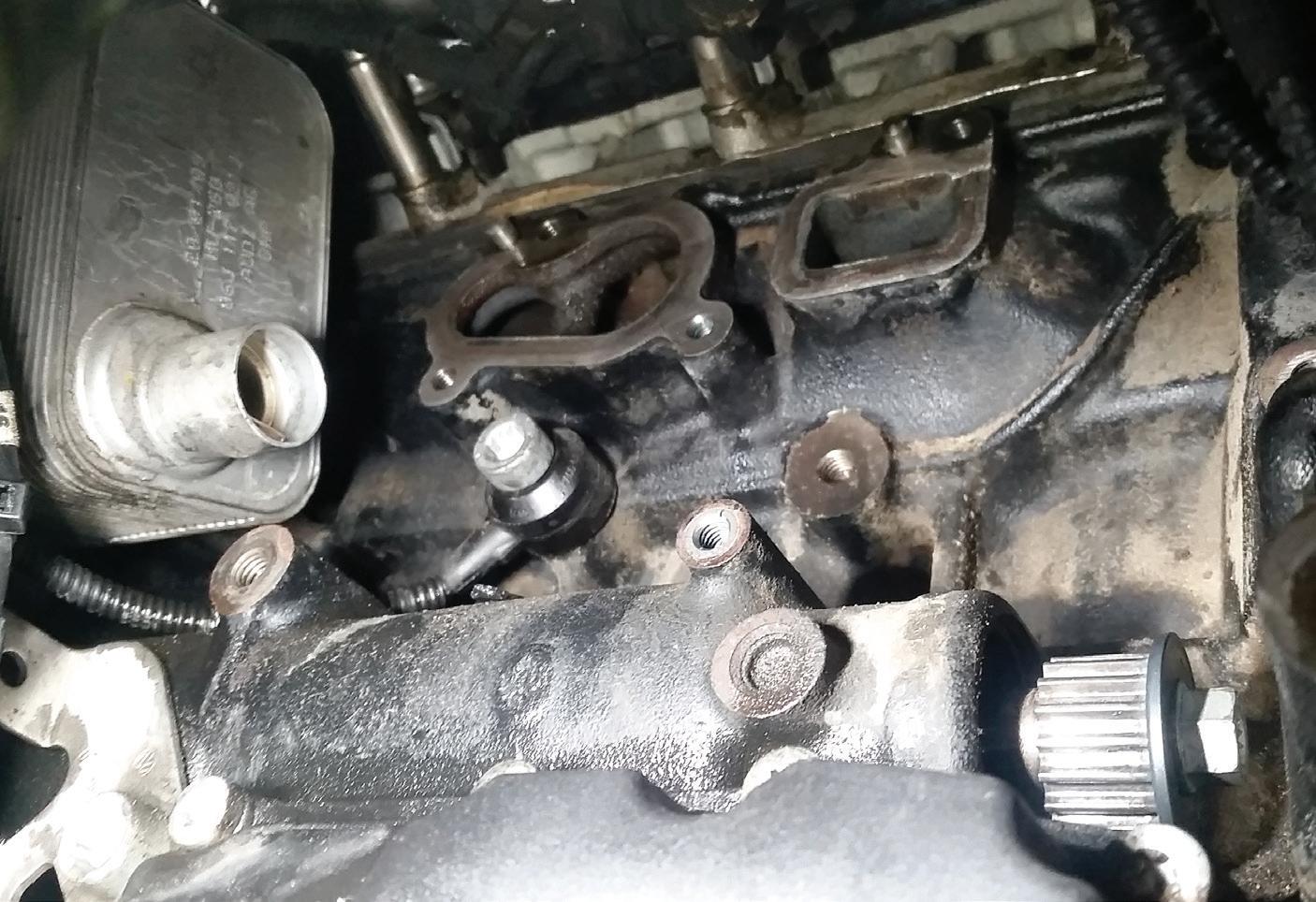

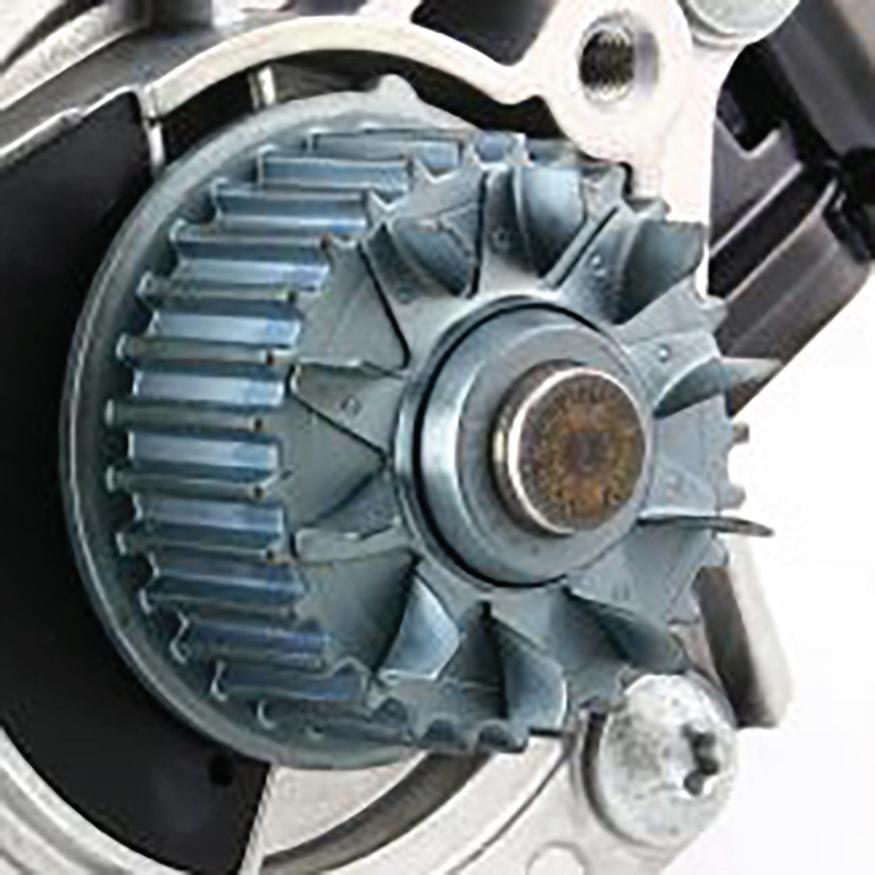
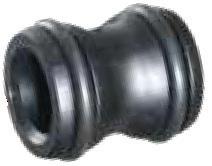

The connection pipe is fitted between the oil cooler and the water pump. It is recommended to install a new connection pipe if a new pump is required.
The bolt for the drive sprocket is torqued to yield and MUST be replaced. This is a LEFT-HAND thread.
The drive belt is under a vented plastic cover. The pump has a fan to keep the belt cool.
NOTE: The bolts for the cover are 30mm and 12mm long.
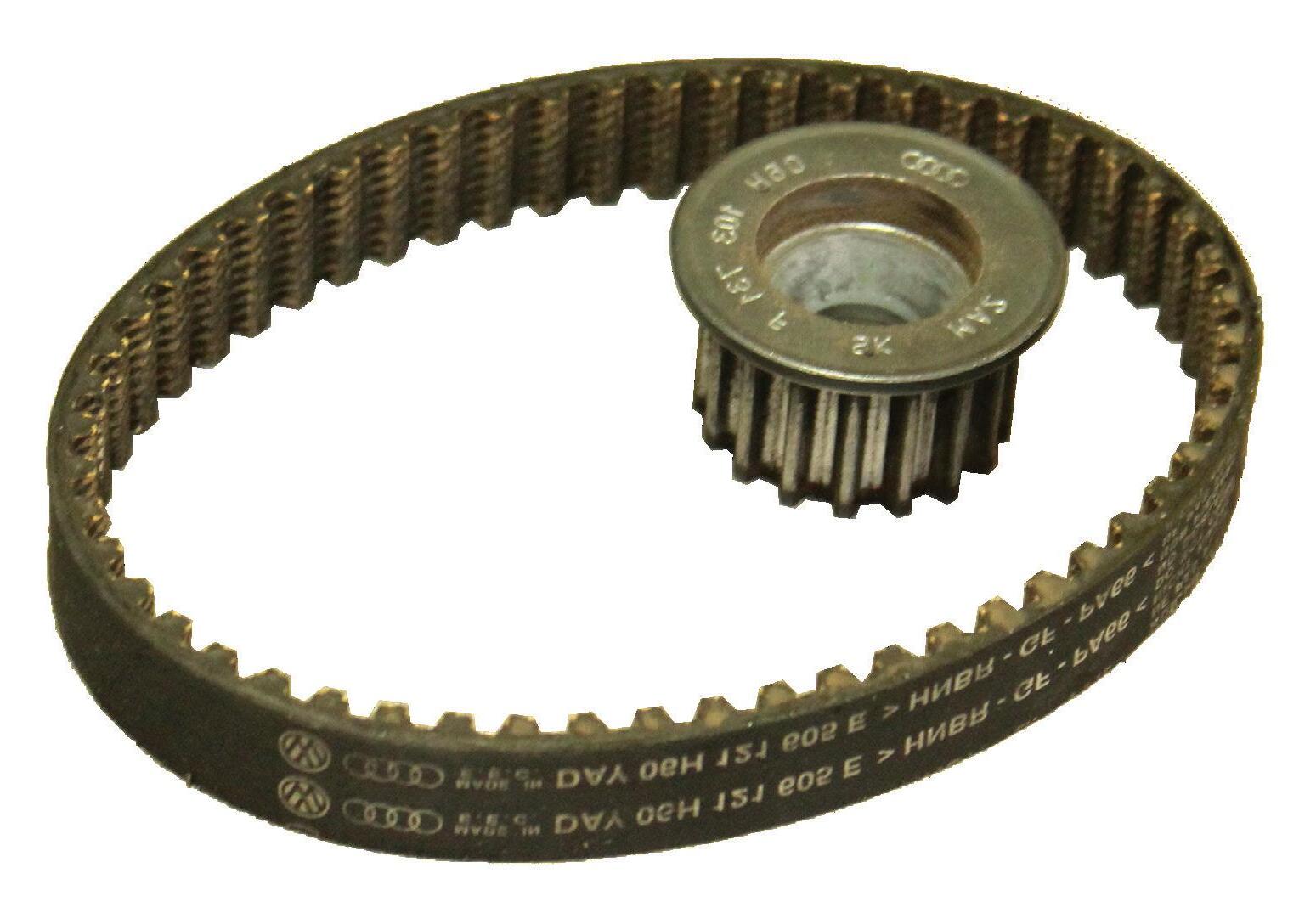
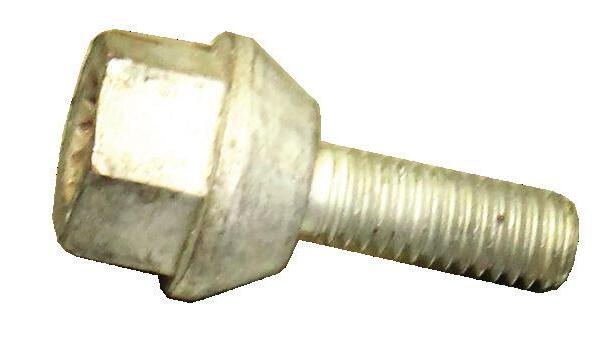

Thanks to the team at ASK Automotive & Auto Electrics for the photos in this article. askautomotive.com.au
Diagram 6 - Coolant pump mounting position
Mounting dowels
Oil cooler
Drive sprocket
Balance shaft
Diagram 7 - Coolant pump drive belt and sprocket bolt
FORD RANGER AND BT-50: DURATORQ /PUMA CRANKSHAFT POSITION SENSOR BRACKETS
The TDCi Duratorq (PUMA) engines are fitted to a wide range of vehicles from many manufacturers (Ford, Jaguar, Land Rover, Volvo and Mazda). However, the Transit 2.4-litre, and the Ranger and the BT-50 2.2-litre and 3.2-litre are the most common variants on Australian roads. These engines share many common design features, and the crankshaft position sensor is one.
THE crankshaft position sensor is located above the flywheel on the right-hand side of the engine. The flywheel or drive plate has an in-built tone wheel, which induces a signal into the sensor that is then used by the ECU. The sensor is fitted into a bracket which is bolted to the rear face of the cylinder block, and this is where the trouble starts (see diagram 1).
The crankshaft position sensor bracket has no locating dowels to keep it in the correct position for the engine timing, and the holes are slotted, which requires special tools to align it (see diagram 2). The sensor unit has a sacrificial plastic bump on the end to set the correct air gap to the tone wheel, which gets worn off in operation. If the sensor is removed from the bracket for any reason, the workshop manual recommends it be replaced with a new unit. If the bracket is removed, there is a procedure to ensure it’s refitted in the correct position.
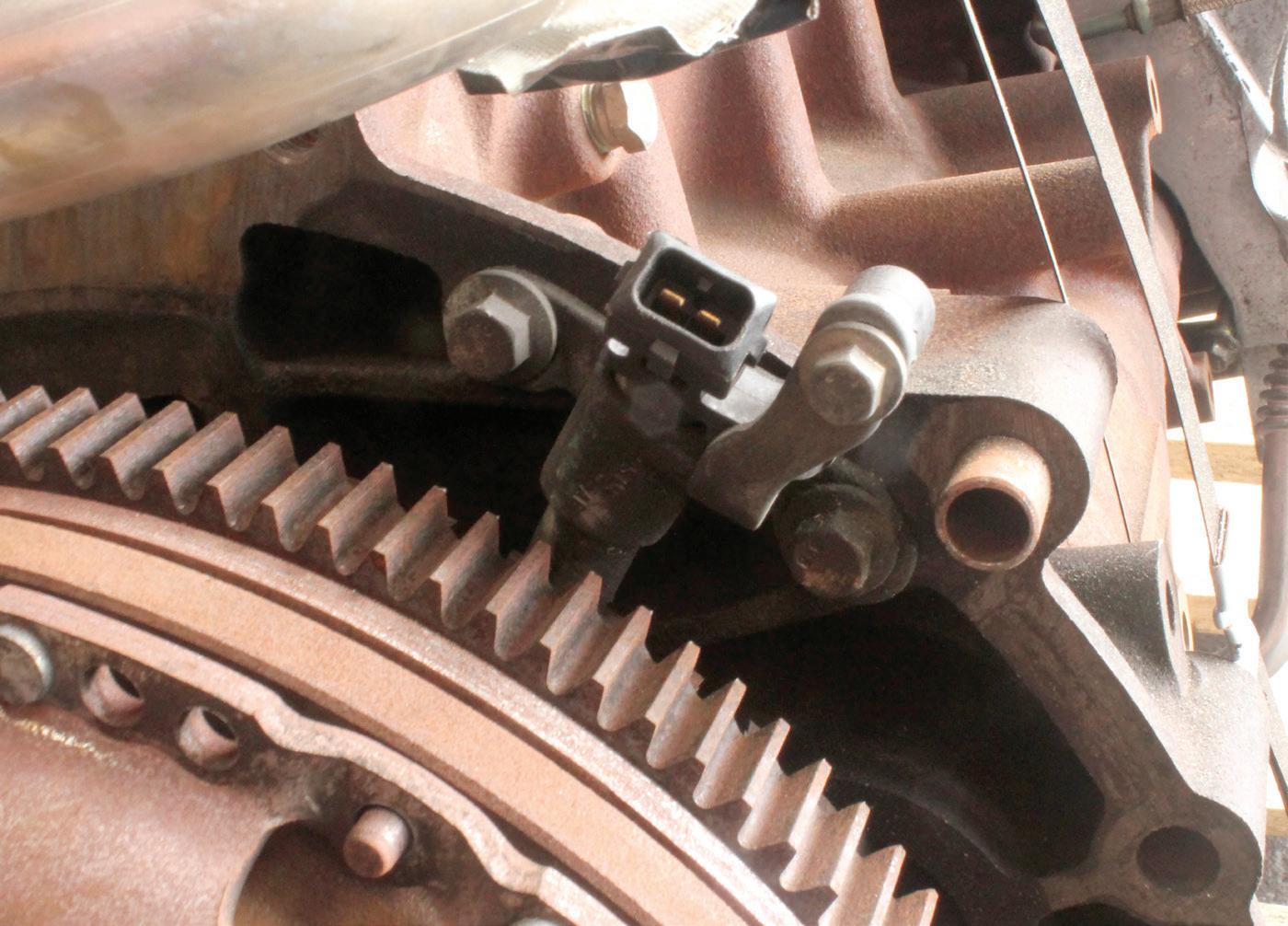
When replacing the crankshaft position sensor, remove the top single bolt. If the two bolts are removed that attach the bracket to the block, then you will have a big job on your hands.
Diagram 2 - Crankshaft position sensor bracket
You will notice this bracket has slotted holes which will change the position of the sensor in relation to the tone wheel on the flywheel/drive plate.
This bracket is easy to break off and requires a procedure to mount in the correct position if you did not mark it before removal.

Common Problems
The crankshaft position sensor and bracket get broken while removing or refitting the transmission. Technicians remove the brackets to prevent damage and can’t refit them. The bracket bolts loosen and fall into the bell housing. The flywheel then picks up the bolts, which smash off the sensor and bracket.
If the sensor or bracket are refitted in the incorrect position, this will cause hard starting, poor acceleration and stalling.
Diagram 1 - Crankshaft position sensor
3 - Sensor heat shield
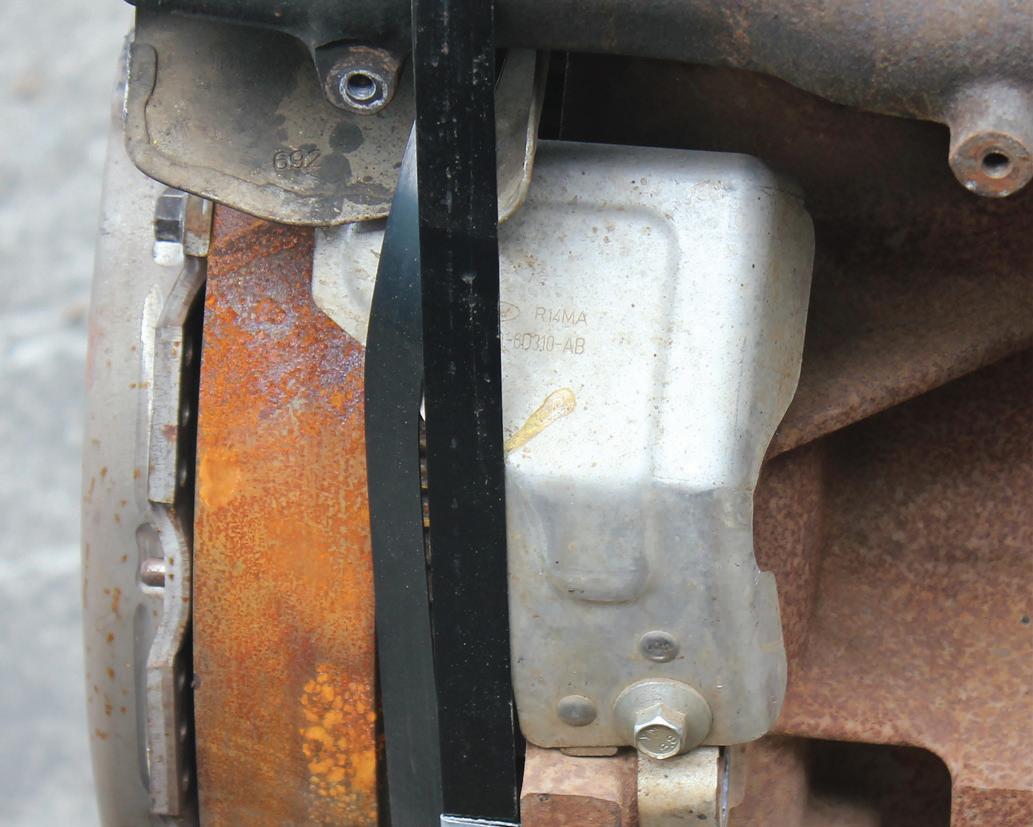
Sensor Replacement
It is easy to replace a failed sensor.
NOTE: This procedure is based on the Ranger and BT-50.
1. Disconnect battery.
2. Remove engine cover.
3. Remove RH front wheel.
4. Remove inner guard.
5. Remove exhaust pipe from exhaust manifold, then remove it from vehicle to access heat shield covering crankshaft position sensor (see diagram 3).
6. Remove heat shield.
7. Disconnect wiring harness to sensor.
8. Remove SINGLE bolt that attaches sensor to bracket. WARNING: Do not remove two bolts that attach bracket to rear of cylinder block (see diagram 1).
9. Sensor can now be pulled out of bracket.
10. Turn engine slightly until you can see a tooth of the tone wheel in middle of sensor hole in bracket.
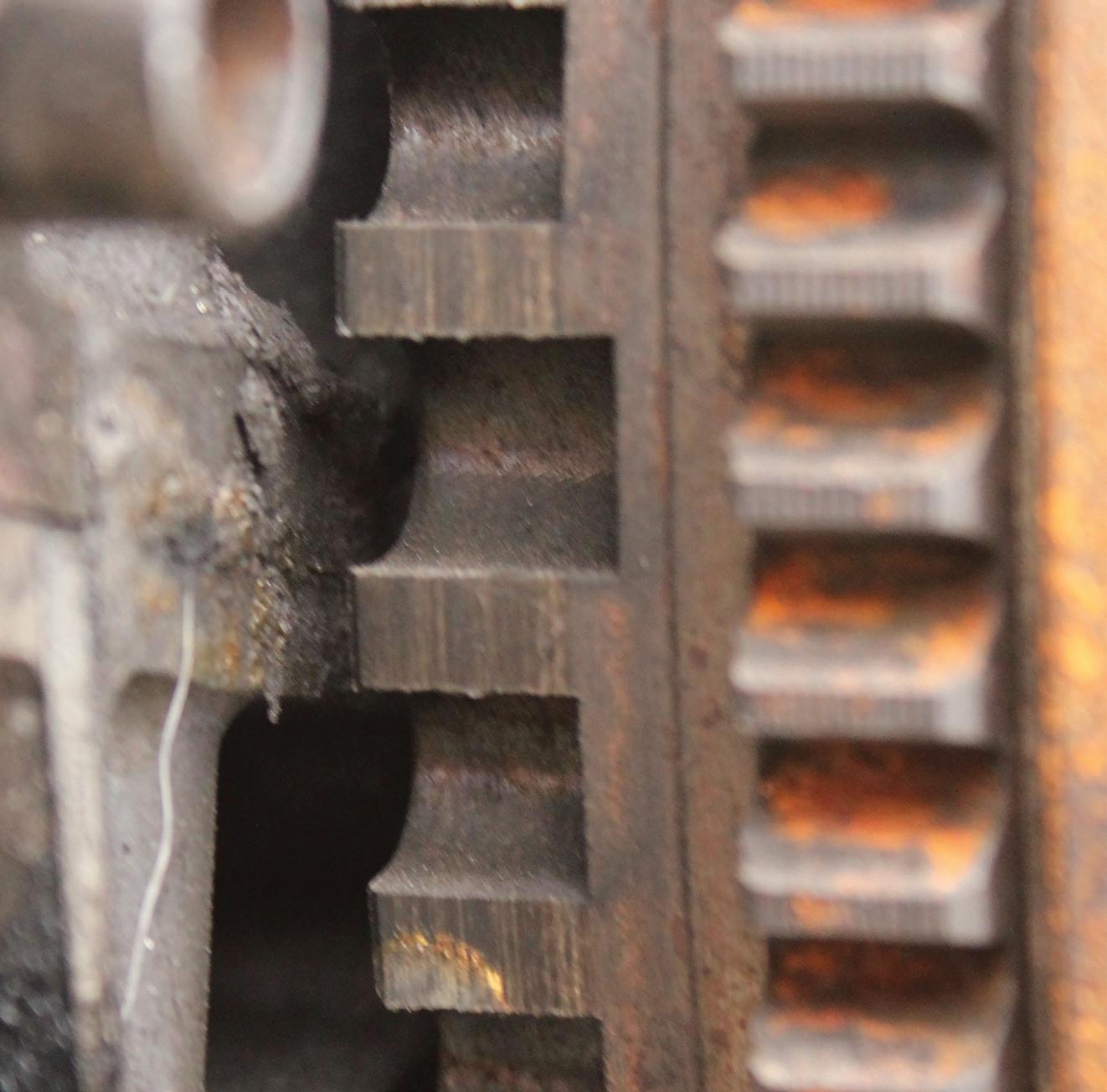
4 - CKP sensor tone wheel alignment
Before installing a new crankshaft position sensor, ensure there is a tooth in the middle of the hole of the bracket as shown
NOTE: Sacrificial plastic bump on end of new sensor must sit on top of tooth when installed to achieve correct air gap (see diagram 4).
11. Fit new sensor to the bracket and tighten mounting bolt to 7Nm.
12. Reassemble all components in reverse order.
Bracket Replacement
If the bracket has been damaged or removed, go through this procedure to realign it.
1. Remove transmission. VACC’s Times Guide indicates 4.0 hours to remove manual or automatic transmission.
2. Remove timing cover. See Tech Talk June 2017 page 4352 and use timing chain procedure as a guide to remove timing cover. VACC’s Times Guide indicates 8.0 hours for timing chain replacement or 2.0 hours for crankshaft seal. Removal of timing cover should be somewhere in the middle.

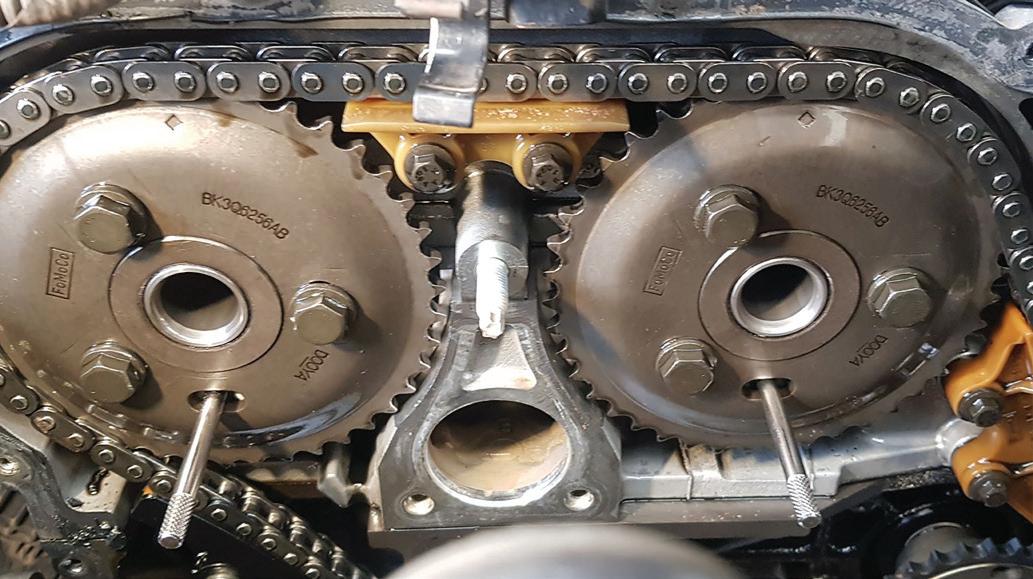
With the marks at 12 o’clock, the holes at 6 o’clock will align with holes in the head. Fit 6mm shafts or drill bits to lock them
NOTE: The fan hub is RIGHT-HAND thread. See Tech Talk July 2018 page 4536 for details.
3. Rotate the engine until the dots on camshaft sprockets are at 12 o’clock. Then insert 6mm drill bits or shafts into holes and into head (see diagram 5).
4. Fit special tool 49 UN30 315870 onto front of crankshaft (see diagram 6).
NOTE: There are no timing marks on the crankshaft. With the special tools in place, the engine is set to 50 degrees BTDC.
5. On the tone wheel, which is a part of the flywheel/drive plate, there is one slot which is deeper or squarer than the others. With the engine aligned and with the locking tools in place, this deeper slot should be where the crankshaft position sensor is to be aligned (see diagram 8).
6. Fit crankshaft position sensor bracket loosely to block.
timing marks
Diagram
Diagram 5 - Camshaft alignment tools
Diagram
Diagram 6 - Crankshaft alignment tool
7 - Tone wheel alignment slot
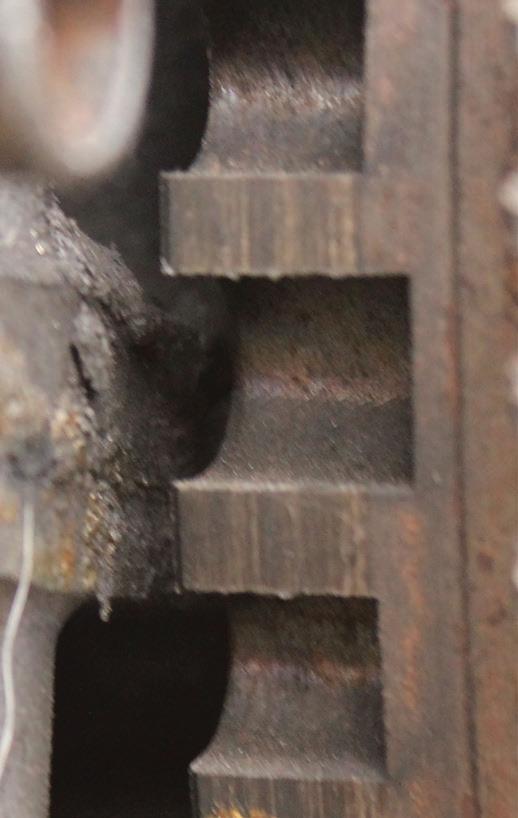
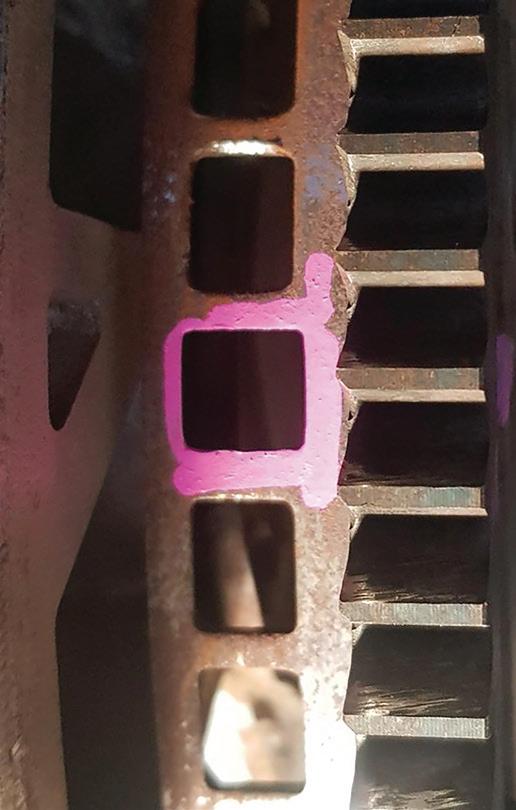
7. Fit special tool 49 UN 303 698 (manual transmission) or 49 UN303 15620 (automatic transmission) through bracket and ensure it fits into correct slot in tone wheel. Adjust bracket as required so tool fits easily into slot (see diagram 7).
8. Apply thread locking compound (e.g. Loctite) to threads on bracket bolts and tighten to 25Nm.
9. Double check tool can still fit easily into slot. If so, remove tool (see diagram 8).
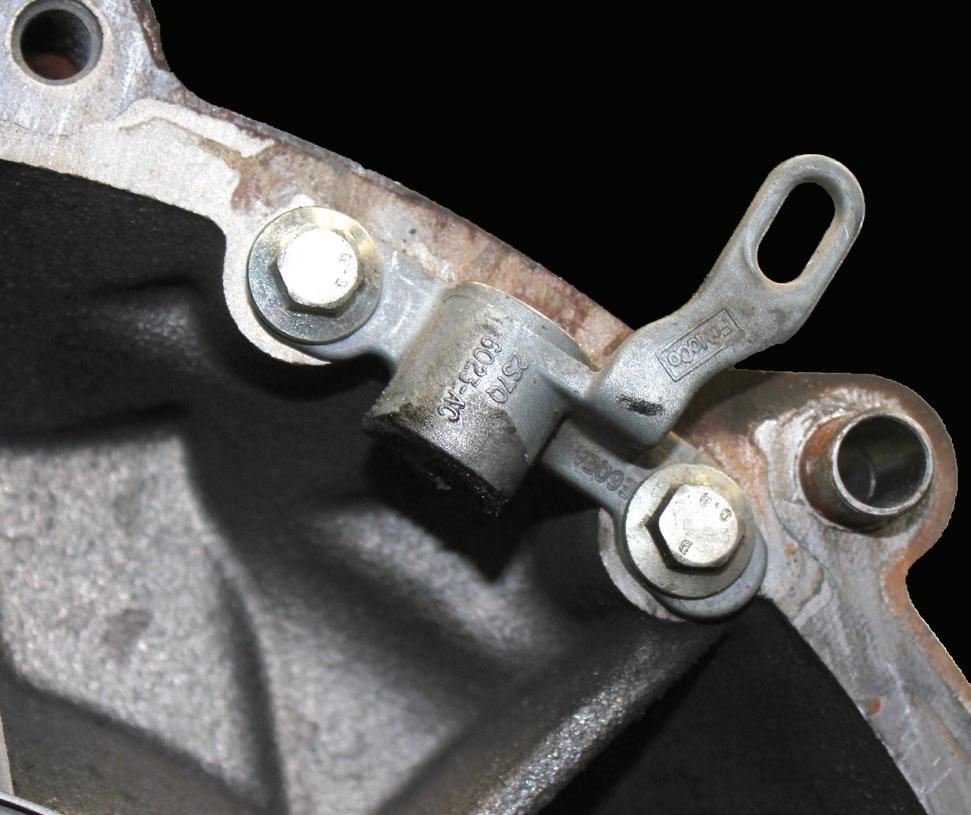

Using the correct tool for the transmission type. Insert the tool through the bracket and into the correct slot (see diagram 7)
10. Remove all special tools, then reassemble timing cover and refit transmission.
11. Fit new crankshaft position sensor to bracket using procedure stated earlier, then reassemble.
You will need to plan ahead if dismantling the sensors and brackets. Some engine reconditioners mark the brackets’ location before removal then put it back in the same place and the engines seem to run okay. As the sensors’ depth is set by the sacrificial plastic bump, I measured
the gap on some second-hand engines and it seems to be about 0.33mm (.013”) if you don’t want to fit a new sensor, which is NOT recommended.
For more information on the PUMA Duratorq engines, log on to VACC MotorTech or call VACC’s TechAdvisory Service.
Thanks to the team from First Auto Plus and Steve’s Automotive Services for their help with this article.
SCAN THIS CODE TO WATCH THE YOUTUBE VIDEO.

Diagram
Diagram 8 - Bracket alignment tool
Automatic transmission drive plate has a square hole
Manual transmission flywheel has a longer cut out
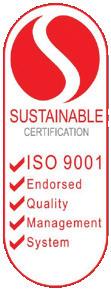

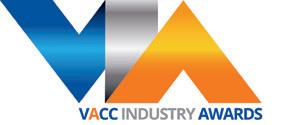

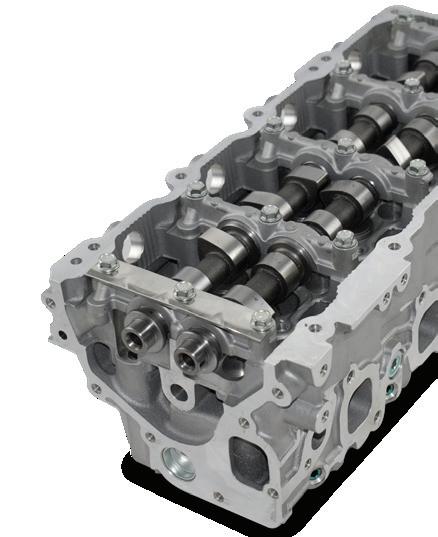
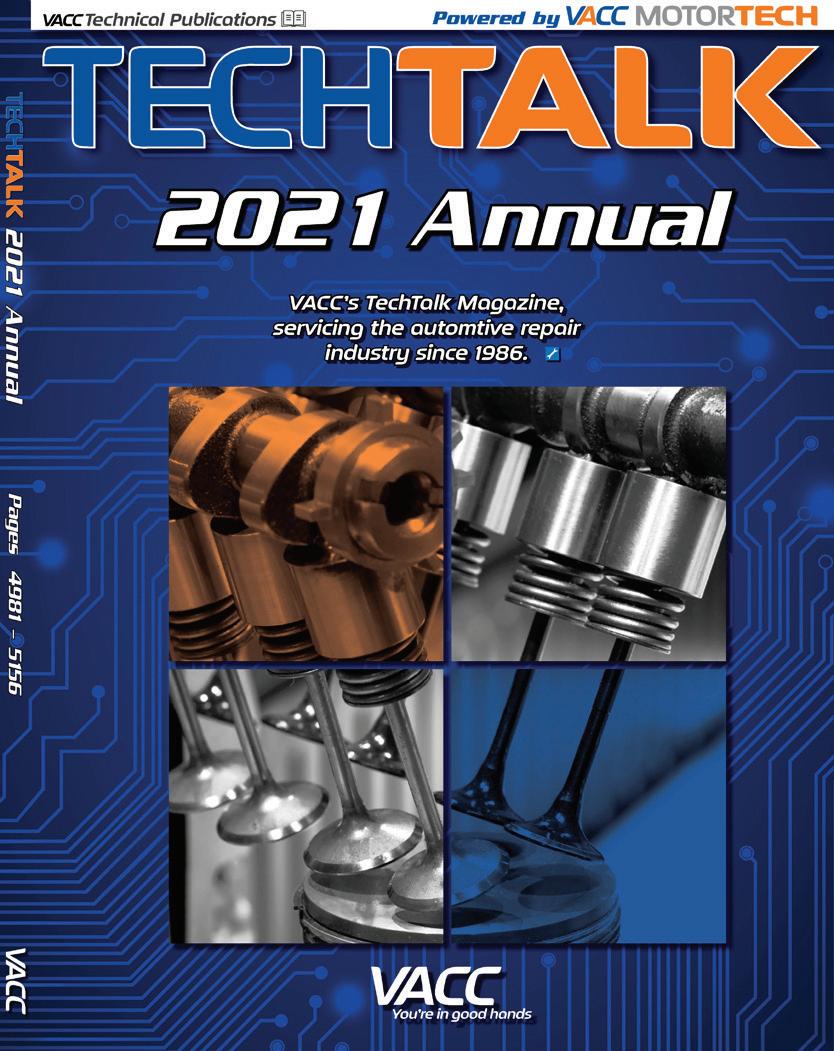
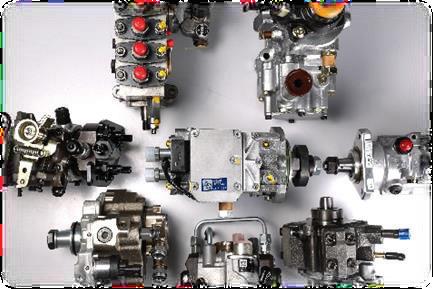
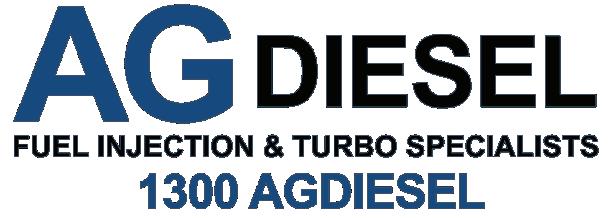
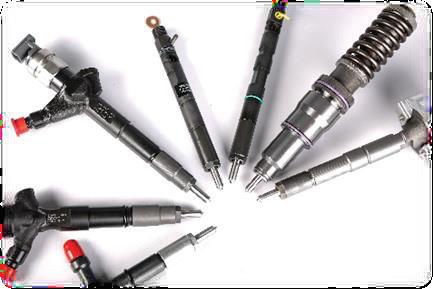
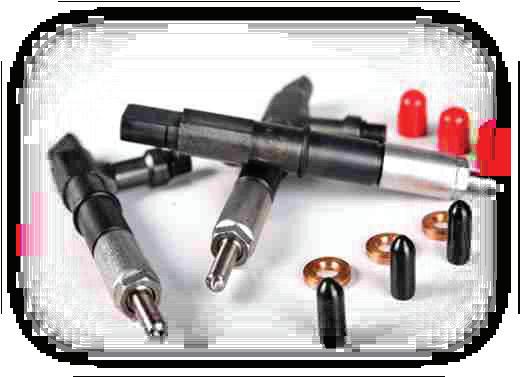

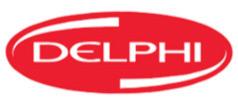




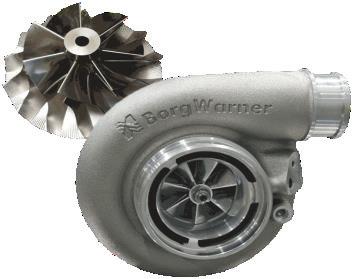










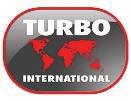







Becoming a VACC or TACC member opens up a wide range of special offers and discounted products and services for you and your business. VACC and TACC have collaborated with organisations which provide essential services to your business to offer special low rates for members. Couple the savings from discounted products and services with the subsidised services which VACC itself offers to members, and your annual membership can easily pay for itself. Everything from IR advice, to cheaper EFTPOS terminals to technical solutions is on offer. This guide gives you an idea of the offers which you can access, as well as a number of other collaborations.
Workplace/IR Advice
Members can access services including a call centre for employment-related questions, a web page with award rates and policy and employment fact sheets, writing of employment contracts, handbooks and policies, and member and industry representation.
03 9829 1123 ir@vacc.com.au vacc.com.au
Auto Apprenticeships
VACC takes the hassle out of hiring trainees and apprentices, as businesses are matched with high quality candidates who meet strict selection criteria. VACC also looks after all administration aspects of the apprenticeship, including visits by Field Officers.
03 9829 1130 autoapprenticeships@vacc.com.au autoapprenticeships.com.au
Technical Information
VACC MotorTech brings together VACC’s Tech Online, Times Guide, Tech Estimate, Technical Advisory Service and Tech Talk products with Haynes’ international know-how, to provide an enormous amount of technical service and repair information to subscribers.
03 9829 1268 info@motortech.com.au motortech.com.au
Health Insurance
nib has a mission and vision of people enjoying better health. VACC and TACC members (including their staff) receive a corporate discount on nib’s retail health insurance products. 1800 13 14 63 nib.com.au/corp/vacc
Website Services
OurAuto Digital provides a one-stop solution for your business’ website, including a custom design, rendering for smartphones and tablets, email accounts and hosting. Businesses are able to update web content themselves. VACC and TACC members receive these services at a discounted rate.
1300 687 288 ourautodigital.com.au
OurAuto iStore
Businesses can purchase a wide range of items, including personalised stationery, consumables such as floor mats and seat covers, workplace safety signage and much more. Member businesses automatically receive a discount on purchases.
03 9829 1152 ourautoistore.com.au
A Grade
The A Grade Automotive Network is a network of VACC member businesses that are dedicated to providing customers a better quality experience across all aspects of vehicle maintenance and repairs. Participants are contractually bound and VACC certified, and are publicly promoted in various forms of advertising.
03 9829 1202 goagrade.com.au
Fine Tuning Automotive Mental Health (FTAMH)
Funded by the WorkSafe WorkWell Mental Health Improvement Fund, VACC has developed FTAMH. The program provides free information, resources and practical measures to help automotive business owners identify and prevent mental health issues in the workplace.
03 9829 1130 finetune.vacc.com.au

EFTPOS Facility
Commonwealth Bank could provide the expertise, insights, technology and financial solutions to help your business move forward. Our Commonwealth Bank Business Banking Specialists can guide you through available business solutions to suit your business needs.
03 9829 1152 vacc.com.au
Training & Education
Members can access automotive industryspecific training programs in business management, industrial relations/human resource management, technical and OHS & Environment. Skills Development Centre also facilitates short courses, online programs and diploma and degree qualifications.
03 9829 1130 info@vaccsdc.com.au vaccsdc.com.au
Freight Services
VACC and TACC members receive discounted rates and benefits, including trace and track capabilities, one number to call, one easy-to-understand invoice, and online job quoting, booking and tracking. Contact VACC for an application form.
03 9829 1152 vacc.com.au
Environmental Advice
VACC members can benefit from environmental compliance advice, briefings, training and on-site assessments. Green Stamp is an accreditation program that recognises and promotes businesses which have implemented sound environmental practices.
03 9829 1117 environment@vacc.com.au greenstampplus.com.au
OH&S Services
Members can access consultation and advice on OHS issues, including incident management, policies, workers’ compensation and more. OHS specialists provide workplace assessments and training, and administer the HazCheck management system.
03 9829 1138 ohs@vacc.com.au vacc.com.au
Superannuation
Spirit Super is a multi-industry super fund with around 326,000 members and $23 billion funds under management. We’re here to help.
1800 005 166 spiritsuper.com.au
OurAuto Diagnostic Tool
Easy-to-use diagnostic tool with class leading automotive fault technology, including seamless integration with VACC MotorTech, providing auto-detection, top range health reports and monthly updates. The Diagnostic Tool is available on a convenient monthly subscription plan.
1300 687 288 ourautoscantool.com.au
Partner with VACC and TACC, connect with 5,000 members. Call 03 9829 1152
Partner with VACC and TACC, connect with 5,000 members.
Waste Management
Remondis Australia is VACC’s preferred provider of general and prescribed waste services. VACC members benefit from a customised waste management plan and discounted rates.
03 9829 1152 vacc.com.au
JobFinder Services
VACC Helpline provides a free job advertising service on the JobFinder website. Any automotive business, VACC member or not, can advertise qualified and apprenticeship vacancies. All enquiries go direct to you for screening.
03 9829 1133 autoadvice@vacc.com.au vacc.com.au
Apprentice Support
VACC Helpline provides apprentices and businesses a free automotive apprenticeship sign-up and advisory service to assist all parties at any time. With years of experience and knowledge, it’s well worth a quick phone call to put you in the right direction.
03 9829 1133 autoadvice@vacc.com.au | vacc.com.au R

THE GRILLE
Podcast for automotive professionals and motoring enthusiasts. Join Greg Rust, Shane Jacobson and VACC CEO, Geoff Gwilym for industry news, a special guest from the automotive world and plenty of laughs along the way. info@thegrillepodcast.com.au thegrillepodcast.com.au
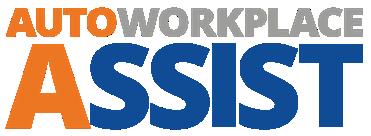
Auto Workplace Assist
A convenient go-to solution for supporting automotive workplace compliance needs. Health and Safety can be a complex, high risk and costly area for workplaces. AWA offers readymade, industry-specific compliance products, so that business owners can get on with the job at hand.
1300 585 136 autoworkplaceassist.com.au
TACC
Founded in 1930, TACC serves the automotive industry in Tasmania and amalgamated with VACC in 1999. TACC members gain access to all of the same products and services as VACC members, however TACC also has a number of additional services for its membership.
03 6278 1611 | tacc.com.au
Insurance
Automotive business owners can access competitive solutions through OurAuto Insurance. Specifically designed to meet to the unique risk profile of the automotive industry, OurAuto Insurance can help your business access the best cover at an affordable rate.
1300 441 474 ourautoinsurance.com.au
Graphic Design
VACC’S Marketing department can assist members with their graphic design requirements at a subsidised rate. Services include business cards, logo re-designs, corporate image overhauls, brochures and advertisements.
03 9829 1189 creativeservices@vacc.com.au

Workplace Update
All VACC and TACC members receive Workplace Update on a monthly basis via email, with issues also available on the VACC website. The publication provides the latest news and information regarding workplace and industrial relations, OHS and environment, business obligations and training opportunities.
03 9829 1123 vacc.com.au
Advertising
Members receive Australasian Automotive magazine as a member benefit and have access to preferential advertising rates. The VACC marketing department can help members by designing advertisements at a heavily subsidised rate.
Andrew Martin 0425 773 234 amartin@ourauto.com.au
Tech Talk
Included in VACC/TACC membership is a subscription to the Tech Talk publication, the premier technical publication of the VACC Technical Services Department since 1986. The journal is printed 11 times a year, while a backcatalogue of articles is available as part of the Tech Online website.
03 9829 1292 vacc.com.au

Test and Tagging
ETCS offers TACC members electrical service state-wide, including installation, testing and tagging, and assisting with OHS requirements. TACC members can access special member rates.
1300 724 001 | etcs.com.au
TACC Apprenticeships
TACC takes the hassle out of hiring trainees and apprentices, as businesses are matched with high quality candidates who meet strict selection criteria. TACC also looks after all administration aspects of the apprenticeship, including visits by Field Officers.
03 6278 1611 | tacc.com.au
Roadside Help
TACC members who want to reward their loyal customers can do so though TACC’s Roadside Help program. Members purchase vouchers to give to customers, which customers can use for free help for a flat battery, tyre change, fuel or a tow back to the member’s business.
03 6278 1611 tacc.com.au
TACC Accreditation
TACC Accredited Repairers are promoted to the community as a group of professional businesses who deliver high quality repairs and services. Participating members enter into a contract with TACC to deliver a more professional level of service. TACC promotes these members.
03 6278 1611 tacc.com.au


Liability & Customer Vehicle Risks
• Damage due to faulty workmanship
• Negligence by contractor/subcontractor
• Driving risks
• Authorised vehicle inspections
Management Risks
• Breaches in employment
• Unfair or wrongful dismissal
• Harassment or discrimination
• Wrongful acts as an owner/director
• Statutory fines & penalties e.g. OH&S breaches
Property Risks
• Business interruption
• Fire & storm
• Machinery breakdown
• Theft & money
• Glass
Cyber Risk
• Data breaches
• Cyber attacks
• Contingent business interruption
With over 20-plus years of experience, OurAuto Insurance are proud to be trusted by automotive businesses across Australia. Contact us today to arrange a hassle-free insurance quote for your business.
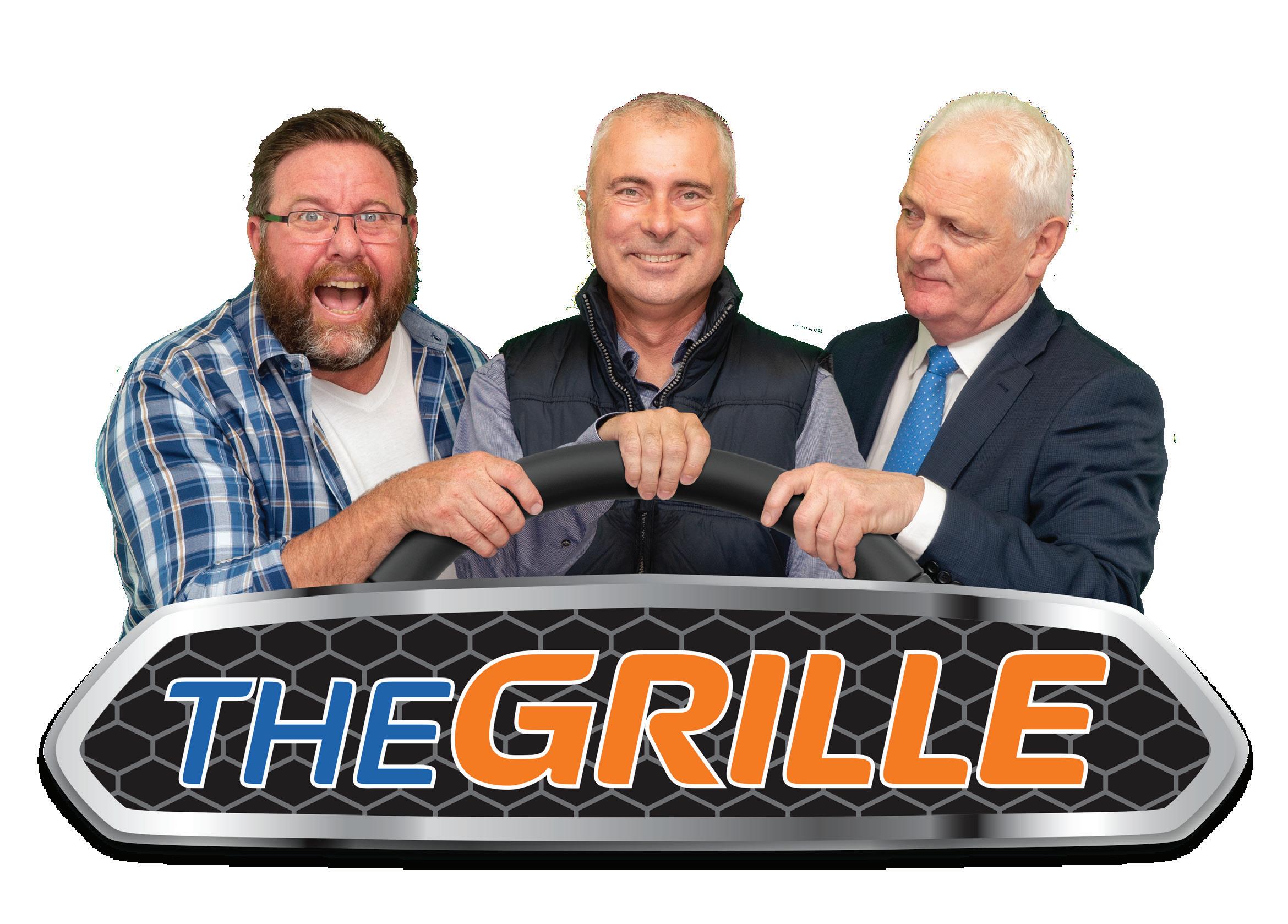
The new auto
industry podcast
brought to you by the best in the business
Join journalist Greg Rust, motoring enthusiast Shane Jacobson, and industry authority Geoff Gwilym as we dig deep into automotive. There’ll be news and views, industry insights and trends, special guests, and plenty of laughs along the way.
So join us.
Listen and review now


